- Skip to primary navigation
- Skip to main content
- Skip to primary sidebar
Teaching Expertise
- Classroom Ideas
- Teacher’s Life
- Deals & Shopping
- Privacy Policy

49 Fun Classroom Activities For Middle School: Arts, Games, Experiments, And DIYs
January 17, 2024 // by Eisha Mohsin
In a rush to complete your lesson plans on time, it’s easy to overlook the importance of incorporating fun activities into your teaching. Planning for interactive games and engaging experiences for students fosters a sense of togetherness and encourages creative expression. Moreover, it helps break up the monotony of the school day, which in turn helps their overall focus and attention span. Get ready to shake things up with our list of 49 fun activities for middle school students!
1. Name, Place, Animal, Thing
You only need a piece of paper and a pencil for this game! Your students will make columns with ‘name’, ‘place’, ‘animal’, ‘thing’, and ‘points’ as the headings. Call out any letter and they’ll have 60 seconds to add information that begins with that letter. The person with the most points wins!
Learn More: Instructables
2. Jeopardy Style Revision
Have a quiz coming up? Spruce up revision by asking your kiddos review questions in a jeopardy-style format. Divide your class into teams and turn the whole lesson into a game show. This fun classroom activity is bound to capture everybody’s attention while also preparing them for their next exam!
Learn More: Play Factile
3. Exit Ticket
Add style to your exit tickets with cute templates that will delight your learners. After your lesson, distribute these cards to ask a question about the lesson, about what they want more or less of, or about how they’re feeling for a quick check-in – a little feedback can go a long way!
Learn More: Twinkl
4. Student-Led Review
Switch things up by having your middle schoolers take the lead. Provide them with an actual lesson plan template to get into the role of facilitating a class review or discussion. This will give you an opportunity to see what they know while giving them agency for their own learning!
Learn More: Canva
5. Pictionary
This game can be used across all content areas! Have your students write concepts that they are learning about on slips of paper. Separate them into teams and give one member from each team a concept to draw for their team to guess. The team that guesses first wins a point!
Learn More: The Teacher Toolkit
6. Dancing Competition
Dancing is a great way to release stress and energy! You can use these videos for a follow-along dance competition, or for a twist, have your class make their own playlist. Ask for volunteers to compete in a dance-off while their peers act as judges and vote for the best performer!
Learn More: Kidz Bop
7. Write A Poem
You’ll be surprised at how much your kiddos will gravitate to poetry. Use any prompt to get them going, but to support them even more, provide a broad category like astronomy, or narrow it down to a specific sub-topic such as planets or asteroids. Encourage them to include facts to reinforce their learning!
Learn More: Every Star Is Different
8. Make A Musical Instrument
Your middle school scientists will love learning about how sound travels and about the rules of acoustics. This activity involves challenging them to make musical instruments from items commonly found around the classroom and at home! This will surely spark their curiosity!
Learn More: Science Sparks
9. Spelling Race
This one is more effective for your younger middle schoolers who are struggling with spelling and is the perfect small group activity for when they’re already pretty comfortable with one another. Give everyone a set of paper letters, call out a word, set a time limit, and the race is on!
Learn More: Confidence Meets Parenting
10. Cabbage Science Experiment
This experiment is not only fun, but it will get your kiddos thinking about the scientific method! Place cabbage juice in separate containers and have them add different ingredients to each cup. Since cabbage is a pH indicator, the juice will help determine whether the ingredients are acidic or alkaline.
Learn More: What Do We Do All Day
11. Make A Pen Pal!
Revive the age-old tradition of pen pals! The best part of this virtual approach is that it allows your students to connect quickly with kids from around the world. They won’t have to wait weeks for letters and you can rest easy knowing that they’re communicating via a safe platform.
Learn More: Go Pangea
12. Make A Thaumatrope
This is an excellent visual and tactile project to teach your children how their brain processes visual cues and motion. This old-school toy is easy for you to implement and will also improve their art skills while giving their motor skills a little workout, too!
13. DIY Projector
This smartphone projector activity is great for getting your younger middle schoolers excited about STEM. It’s a very simple project in terms of the materials required – all you need is an old shoebox and a magnifying glass. This is certain to get your kiddos thinking about the potential of other everyday objects!
Learn More: The STEM Laboratory
14. Spell Using Yarn!
The tactile experience of yarn will encourage even your most reluctant learners to practice their spelling. Distribute colorful pieces of yarn at the end of your class period, and call out words for them to practice to reinforce vocabulary and to create a calming way to transition to the next subject
Learn More: Pinterest
15. Marshmallow Challenge!
This brilliant activity teaches your young scientists about the basics of physics. Give groups of four or five students a marshmallow, tape, and a few pieces of spaghetti. Their goal is to be the first team to successfully build a structure that can support the weight of their marshmallow!
Learn More: Digital Lesson
16. Anime Drawing
Like most teens, your students are sure to have fallen in love with this genre, so tap into the anime craze with a drawing brain break or group bonding activity. They’ll love brushing up on their artistic skills by drawing their favorite anime character or transforming a classmate into one!
Learn More: Teen Services Underground
17. Cooking Club
Many schools have stopped including life skills such as cooking into the curriculum, but you can undo this by getting a hot plate and starting a cooking club in class. You can also get creative by teaching recipes as procedural texts, or tying cooking into chemistry or lessons on math measurements!
Learn More: S&S Blog
18. Comedy Skit
Staging comedy skits is a wonderful way to get your introverted kiddos out of their shells. Use this approach for morning meetings or for your advisory group and have them work as a team to put on a show that encourages camaraderie and boosts confidence.
Learn More: Ice Breaker Ideas
Social media is the future and your techies will surely love an opportunity to publish their own blog articles. Offer them a pick of any niche to help them clarify their passions and develop their technical writing skills. Who knows – they might even monetize their efforts down the line!
Learn More: Cool Tools for School
Chess is a timeless game of logic, strategy, pattern recognition, and concentration, and it’s the perfect activity for your middle school students. Just grab a few chess boards, give them a lesson in strategy, and watch as the games begin. This is a lifelong skill that they’ll remember learning with you!
Learn More: US Chess Federation
21. Debate Club
Build communication and argumentative skills by encouraging live debates. Give your learners relatable and controversial topics, and make sure to provide pointers on how to politely convey their points of view. Award points based on the quality of the argument and tact of the presentation.
Learn More: Thought Co.
22. Wacky Inventions
Entrepreneurial ventures are great for helping students develop skills related to entrepreneurship, financial literacy, and of course, creativity. This activity will get your little inventors’ wheels turning as they think about how to transform familiar objects into rather extraordinary inventions!
Learn More: Venture Lab
23. Solving Problems Through Invention
This is similar to the previous activity in that it focuses on inventions, but this time, your kiddos are faced with a real-world challenge. Follow this engaging cross-curricular lesson plan from STEM and humanities that lets them choose a current event and apply critical thinking skills to create a problem-solving invention!
Learn More: PBS
24. Community Service
There’s no better way to teach your children empathy than through community service. This could include a field trip to an assisted-living home or hospital, but you also don’t need to leave school. They can start an eco club, mentor younger students, or volunteer to pick up trash from the football field!
Learn More: Create The Change
25. Code Your Name
Coding has become an increasingly popular activity and your students will love putting a personal spin on coding by using colored beads to create their names in binary code! They can then extend this activity to art by using the beads to make necklaces or bracelets!
Learn More: Fifth In The Middle
26. Padlet
Padlet is a multi-functional tool that you can use in a variety of ways in the classroom. From vision boards to interactive discussion posts, your kids will love collaborating with the colorful digital sticky notes! Plus, you can easily integrate Padlet with your Google Classroom or other LMS!
Learn More: Padlet
This game is great for encouraging your children to use creative thinking skills while also giving them a little practice with synonyms! A player draws a card and must describe a word for the others to guess, without using “taboo” words. It’s a perfect game to pull out on rainy days!
Learn More: Amazon
28. Plan A Road Trip
Planning a road trip can be an exciting way for your globe trekkers to explore a new state, country, or landmark! They’ll develop geography and math skills and, if you include activities like creating travel brochures or postcards from the places they ‘visit’, they’ll build their writing skills, too!
Learn More: Appletastic Learning
29. Classroom Escape Room
Escape rooms can be virtual or hands-on, and can be used with almost any subject area or topic! Use one of the many templates found online to create clues for your kiddos to follow while they exercise problem-solving skills and work collaboratively to make their escape!
Learn More: Ditch That Textbook
30. Virtual Field Trip
If you can’t take your middle schoolers on a field trip, then bring the field trip to them! Virtual field trips provide access to landmarks, museums, and different countries, and are an excellent way to build background knowledge or get them prepped and excited for your next topic!
Learn More: The Nature Conservancy
31. Create Thank-You Notes
Expressing gratitude is a component of social-emotional learning that takes explicit teaching. Guide your preteens in how to write thank-you notes and challenge them to make this a weekly practice – it will make a difference in their lives now and down the road!
Learn More: Essentials In Writing
32. The Unfair Game
In this game, you’ll divide your students into teams and then have them take turns answering questions that are assigned a certain amount of points. But , the points can be positive or negative, and the team must decide beforehand to keep or give their points to the opposing team!
Learn More: Comprehensible Classroom
33. Crumple And Shoot
Crumple and Shoot is another fun game for reviewing content. Your kiddos will work in teams to answer questions on a slip of paper. The teams with the right answer will have the chance to score a basket with their crumpled-up slip of paper, winning points for that round!
Learn More: Cult Of Pedagogy
34. Coping Skills Jeopardy
Teaching your middle schoolers appropriate ways to cope with emotions is key to your classroom management and their social-emotional growth. Using Jeopardy as a teaching tool will reinforce their knowledge of the positive things they can do to better cope with life’s challenges!
Learn More: Love City Counseling
35. Bop Or Flop
This activity can be used as a quick-write prompt or a brain break to encourage your music lovers to share their opinions! Start by playing a song and they’ll decide if they think it’s a “bop” or a “flop”, but they’ll have to use academic vocabulary to provide evidence for their choice!
Learn More: Instagram
36. DIY Board Games
Build your learners’ critical thinking skills by having them create their own board games! You can recycle old games or make them from scratch. It’s the perfect project-learning approach to reviewing anything from historical figures to animal biomes!
Learn More: Student Savvy
37. Scoop It Up
This game will quickly become a class favorite and is great for a celebration or class reward! You’ll need bowls, spoons, and some ping pong balls to challenge your kids to transfer as many of the balls as they can from one bowl to another in just one minute while holding the spoon with their mouth!
Learn More: You T ube
38. Time Capsule
Making a “time capsule” at the beginning of the school year is a great way to demonstrate your students’ growth over the year. Fill out a time capsule printable about their favorite things, friends, and activities, and then tuck them away until the last day of school.
Learn More: Sunshine Whispers
39. A Bit Dicey
In another fun minute Minute-to-Win-It game, your children will hold a popsicle stick in their mouths and try to balance five dice on the other end! The first one to accomplish this for three seconds is the winner! Use this as a great icebreaker or team-building activity!
Learn More: Math With Meaning
40. Pencil Bridges
Learning about historical figures is more fun when you pair it with a hands-on activity like building this Da Vinci Bridge! Place your budding engineers into teams and challenge them to follow directions and work together to build a functioning bridge from only pencils and rubber bands.
Learn More: iGameMom
41. Learn About Math Through Movies
Every middle schooler loves a movie day, but you can make sure they’re still exploring academics by showing films that actually incorporate math! From Queen of Katwe to Hidden Figures , you’re sure to find a math or STEM-related film in this carefully curated list.
Learn More: Mashup Math
42. DIY Paddle Boats
Your students will have a blast exploring engineering concepts like simple machines and forms of energy with this paddle boat project! You can vary how much direction to give them from explicit step-by-step instructions to simply providing a general objective. Either way, they’ll love the challenge!
Learn More: Rookie Parenting
43. Ocean Currents Experiment
The concept of ocean currents will come alive for your scientists with this simple experiment! All it requires is recycled bottles, food coloring, water, and index cards. They’ll watch the process of water convection as the densities of cold and hot water change the makeup of the bottles!
44. Reverse Grammar Charades
Energize learning by letting your kiddos play Reverse Grammar Charades! One student will leave the room while the others are given a part of speech to act out. The returning student will then have to use the action clues to guess whether this is a noun, verb, or adjective!
Learn More: Building Book Love
45. Public Speaking Problems
Another charades-like game for teaching your middle schoolers ELA concepts is this clever game. They’ll draw a card with a common public speaking mistake, like not making eye contact or talking too quickly, and then make a speech demonstrating that while others guess the problem!
46. Self-Portrait Collages
This longer-term art project will keep your students engaged during their free time! They’ll hunt for bits and pieces of images to cut from magazines that they’ll use to make a self-portrait. This is a great project for exploring identity and is perfect for sharing during advisory groups or morning meetings.
Learn More: Hip Homeschool Moms
47. Edible Cells
Rather than learning cell vocabulary through flashcards, make things more exciting for your budding scientists by challenging them to create edible cells! They’ll love to use food items such as avocados and gummy worms to demonstrate their understanding of the parts of the cell!
Learn More: Weird Unsocialized Homeschoolers
48. Dragon Paper Airplane
Who would have thought that a paper airplane could teach your kiddos so much about engineering and problem-solving? This one takes the traditional foldable plane to a whole other level with the dragon paper plane that’s perfect to use as a Chinese New Year activity!
Learn More: Hessun Academy
49. LEGO Pendulum Painting
The magic of LEGOs extends even to middle school, and your kids will love combining engineering and the arts to make this pendulum. They’ll have to carefully follow directions to develop a functional pendulum, and then use it to create unique paintings for classroom decor.
Learn More: Stir The Wonder

Weird, Unsocialized Homeschoolers
Honest. Quirky. Real. Stereotype-smashing humor for homeschooling families.
100+ Awesome Hands-On Activities for Middle School and High School

Did you like this article? If so, please help by sharing it!
- Facebook 2.7K
- Pinterest 6.7K

Engage your teens with this list of more than 100 hands-on activities for middle school and high school students!
Hands-on learning is the best kind of learning. There are limitless ideas for hands-on activities for preschool and elementary-aged students. Unfortunately, as kids get older, the ideas for hands-on projects seem to dwindle in favor of more traditional textbook-style learning.
However, teens learn just as much from hands-on activities as young kids do, and almost anything can be educational: acting in a play , running a lawn-care business , creating pieces of art , cooking, baking , and even babysitting ! Because it helps to start with a list to get your own ideas flowing, I’m sharing more than 100 hands-on activities for middle school and high school students !
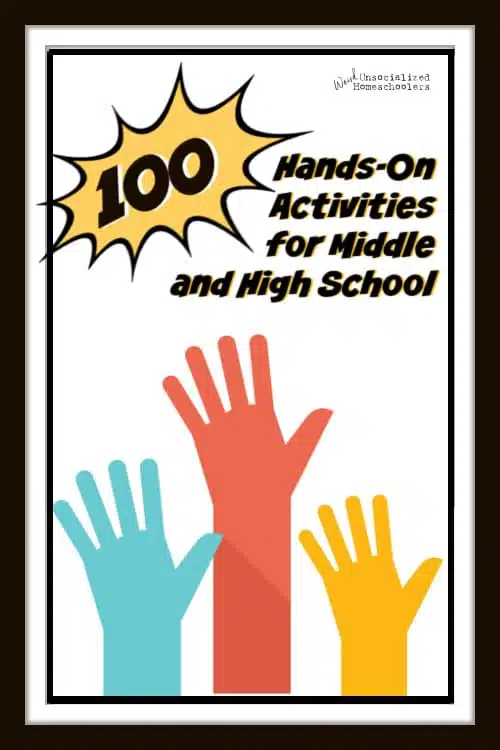
How to Modify Hands-on Activities for Teens
I do want to include one caveat – not all of these activities are specifically geared toward older students. But activities for younger kids are beneficial to older students with some modifications .
To make hands-on activities more challenging for older students:
- Turn all the planning and execution of the project over to the student.
- Require more detail. (Simplified example: a young student might label only the basic parts of a flower such as stem, petal, and leaves, while an older student would be expected to include anthers, stamen, ovaries, etc.)
- Use more complex materials. (For example: a younger student might make a cardboard rainstick while an older student would use bamboo and nails.)
- Ask your teens to explain what they did, how they did it, why it works, and what it represents. (Younger kids should be able to do this, too, but older kids should be more detailed in their narrative.)
I hope you find this list helpful! Be sure to bookmark it so you can return to it later when you need more ideas and inspiration! Please leave a comment if you have more ideas for me to add to this article.
This post contains affiliate links. See full disclosure policy for more details.
Hands-On Activities for Middle School and High School Students
Andy Warhol Art Project – A Warhol-inspired project using a template or your own photo.
Mary Cassatt Hats – Make paper mache hats as you learn about American artist, Mary Cassatt.
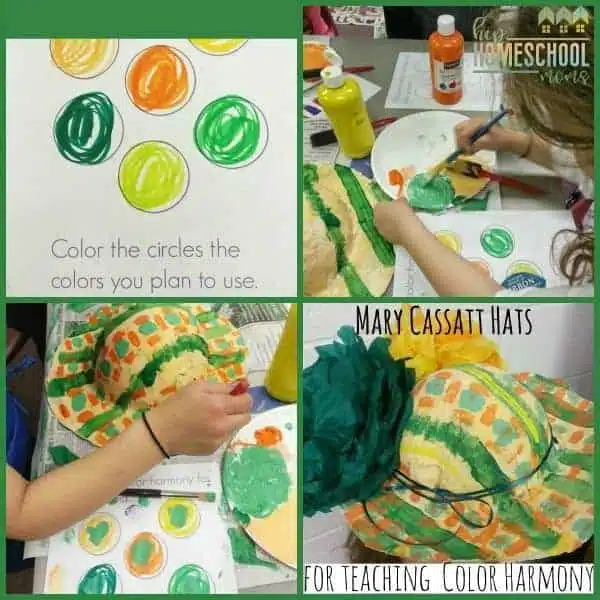
Zentangle Dragonfly – Stretch the imagination and create Zentangle Dragonfly Art.
Marbled Clay Ring Dish – Beautiful clay dishes you can make at home.
Shibori Dyeing Technique – Create art you can wear with this Japanese tie-dyeing technique using indigo dye .
Aluminum Foil Stained Glass Art – Recreate any picture using aluminum foil and Sharpie markers.
Free Art Lessons and Tutorials – An entire Pinterest page of art tutorials.
Paper Jungle – A paper art project inspired by the works of Henri Rousseau.
Self-Portrait Collage – Some art projects should require endurance. This one will have to be completed in several steps over time.

Getting Started in Chalk Pastel – A free e-book full of art tutorials using chalk pastels.
Jackson Pollock Inspired Abstract Art – Experiment with splatter and drip painting.
How to Make an Edible Cell Mode l – This was probably one of the most fun projects we’ve ever done. It’s definitely one of the most popular on the blog. We did an animal cell, but it could easily be adapted to a plant cell.
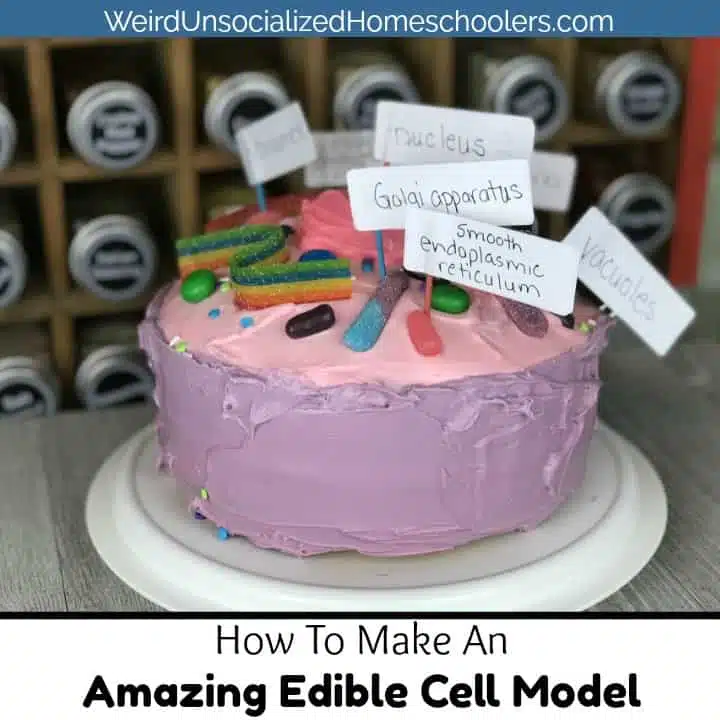
Hands-on Genetics Study for Kids – An excellent resource for studying Gregor Mendel, the Father of Genetics. This site includes a free, printable download and activity and resource suggestions.
Build a DNA Model – Use Twizzlers and gumdrops for a tasty, hands-on experiment with DNA.
Candy Math and Science – Create bar graphs and practice taxonomy with candy.
Human Body Systems – Hands-on activities for studying human anatomy.
Bean Classification – Who says taxonomy has to be boring?
Edible Skin Layers Cake – Make a model of human skin using some sweet treats.
Articulated Hand – Make a model of the hand that actually moves like a human hand.
Functioning Heart Mode l – This is a cool project that uses household items to make a functioning heart model.
Anatomy of the Eye – Study the anatomy of the eyeball with a cake pop.
Another Edible Cell – Prefer cookies over cake? Try this edible cell!
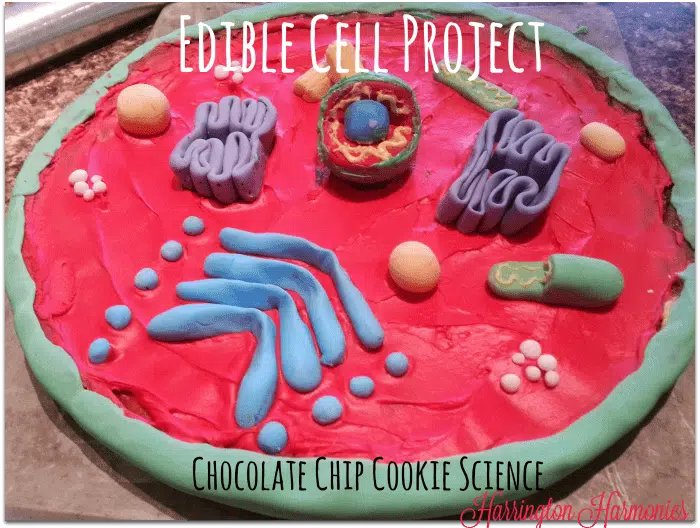
Extracting DNA From Strawberries Experiment – This one looks almost as much fun as the time the kids and I extracted our own DNA.
Project-Based Learning: Microbes – Bacteria – I love this tutorial for building a model of a bacteria cell.
The Lab Report – Flower Dissection – Includes video, resource links, and a free download.
Earth Science
Ocean Zones in a Jar – Learn about ocean zones and liquid density by making these hands-on activities for middle school and high school students.
Metamorphic Edible Rocks – This hands-on metamorphic rock activity will have you learning about earth science with food.
Make a Lava Lamp – A simple tutorial for making a lava lamp with information on why it works.

The Lab Report – Enzyme Experiment – See enzymes in action and discover an experiment challenge for you to do on your own.
Let’s Make A Mold Terrarium! – Because, really, who doesn’t want to grow mold?
Learning Summer Constellations – Do you and your kids love constellations as much as I do? Capitalize on that with these great study tips and activity ideas.
Baking Soda Stalactites & Stalagmites – Watch crystals grow each day as engaging hands-on activities for middle school and high school students.
Volcano in a Cup – There are many great hands-on volcano activities other than the traditional baking soda-and-vinegar stand-by. (Although that one never gets old!) So, check out this idea for a change of pace.
Charcoal Water Purifying Experiment – Can charcoal purify water? Experiment and find out!
Using Clouds To Predict The Weather – Turn your kids into weather forecasters! Teach them to recognize the types of clouds and what they tell us about the weather.
Compost Cups Science Projects – Learn about decomposition and composting.
The Lab Report – Air Pressure – Learn about air pressure in this video presented by the student herself.
Acid or Base Experiment – Simple, but effective experiments that illustrate the acidity of household products.
Red Cabbage Litmus Experiment – Use red cabbage to determine which foods and beverages are acids and which are bases.
Periodic Table of Elements Cookies – Learn the elements and their chemical symbols by making and decorating cookies.
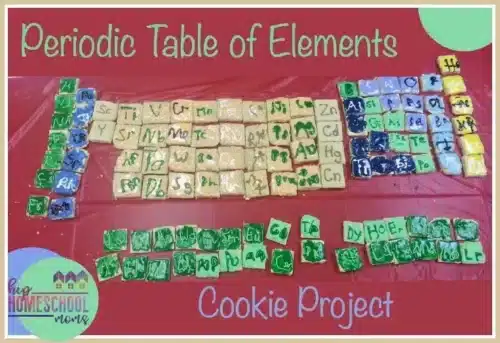
Testing The Properties Of Water – Experiments for learning about surface tension and cohesion.
Oxygen and Fire Experiment – Test the relationship between oxygen and fire with this simple, but fun experiment, and learn why the experiment works.
Atomic Cookie Skillet Model – The best hands-on activities for kids are the edible ones and this atom model is no exception!
STEM and More hands-on activities for middle school and high school
Steel Wool and a 9-Volt Battery Experiment – You shouldn’t play with fire – unless, of course, it’s this really cool experiment. Check out the video!
Polishing Pennies Experiment – Learn about oxidation. Includes a free printable.
Squishy Science Experiment With Warblettes – What are Warblettes, you ask? They are nifty little water-absorbing polymers.
BioFilm Experiment – Make the study of microbiology a bit more interesting with this experiment. Includes free printable.
How to Make Plastic – Make your own gelatin bioplastic.
10 Hands-On Science Activities for Kids – These 10 generic hands-on activities for middle school and high school students are easily adaptable for a wide variety of projects and age ranges.
Circuit Bugs – Use circuits and batteries to bring these bugs to life.
5 Easy Beach STEM Activities – Heading to the beach? Try some of these activities with your middle schoolers.
Invisible Ink – Unlock the secrets of invisible ink with this activity.
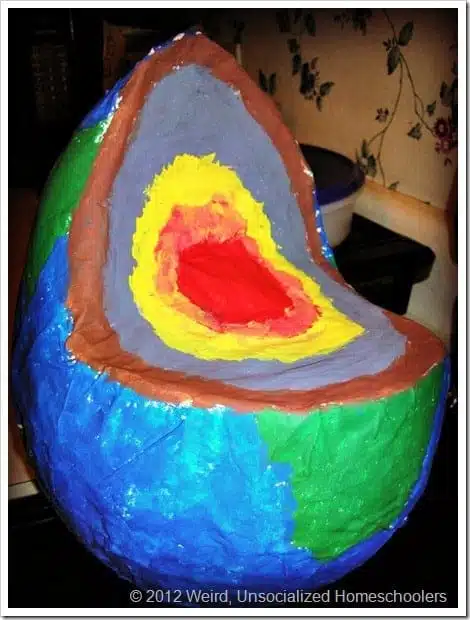
How to Make a Paper Mache Earth Model – Another one of our all-time favorite hands-on projects, this model is suitable for middle school and easily adaptable for high school.
Pumpkin School – Bookmark this one for fall so you’ll be ready to learn about pumpkin pi. (Do you see what I did there?)
How to Record an Experiment – It’s crucial that middle and high school students know how to properly record science experiments.
Make an Ancient Egyptian dress – Sew an ancient Egyptian dress for an 18″ doll.
How to Mummify a Chicken – Is it possible to study ancient Egypt without mummifying a chicken?
Middle Ages Unit Study for Middle School – Living book suggestions along with resources and activity ideas.
Greek Mythology Character Cubes – Illustrate Greek myths with this 3-D display.
Slavery and Civil War Unit Study – A literature- and project-based unit study.
History Quest: Civil War Uniforms – A tutorial for creating an authentic-looking Civil War uniform.
George Washington’s Camp – Recreate George Washington’s camp out of paper.
Settling the New World: Colonial History Unit Study – A unit study for upper-elementary and middle school ages.
Timeline Accordion Book – Record any time period with this accordion book.
Underground Railroad Quilt Code Game – Learn more about the Underground Railroad with this game.

How to Make Berry Ink – Step back in time and make your own ink.
13 Colonies Map Puzzle Activity – You’ll find the directions for making your own 13 Colonies puzzle map at the end of this post.
Maple Syrup Snow Candy – If you’re studying pioneer life, this is a yummy treat to make in the winter and is one of the best hands-on activities for middle school and high school students for the colder seasons.
Ben Franklin & Electricity – Ben Franklin had many roles that included statesman, writer, scientist, and inventor. Explore static electricity with this experiment. You can also try your hand at replicating some of his inventions with the resource, Amazing Ben Franklin Inventions You Can Build Yourself .
10 Hands-On History and Geography Activities for Kids – A list of generic, versatile ideas for all ages.
Create a Biographical Trailer – Use iMovie or another tool to create a trailer about a historical biography.
Paper Art Landforms – Make learning about landforms fun with this paper art project.
Making an Edible Map – This edible map tutorial uses cookie dough as the base with icing to represent lakes. Adding other candies to represent various landforms and landmarks would expand this project easily for older students.
Making a Paper Mache Map – Tutorial for making a topographical map from paper mache.
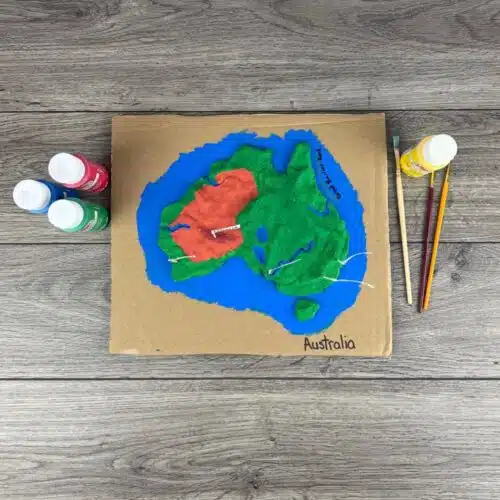
How to Make a Salt Dough Map – Salt dough maps are a family favorite and easily adaptable to a wide student age range, which is why they make great hands-on activities for middle school and high school students.
How to Make a Compass – A tutorial for making a homemade compass and determining magnetic north using the completed project.
Plate Tectonics – A tasty way to learn about continental drift and plate tectonics.
Model of the Earth’s Layers in a Jar – A simple, but fun and effective way to represent the layers of the Earth in a colorful spice jar!
Soil Layers with LEGO – Use LEGO brick to build a model representing the soil layers of the Earth.
U.S. Geography Scavenger Hunt – Make learning to use an atlas fun with these ideas. Includes a free printable.
Paper Airplane Math – Practice graphing the fun way – with paper airplanes!
100+ Living Math Activities & Link-Up – Activities are broken down by grade level and include those for middle school and high school.
Graphing Facebook Birthdays – If paper airplanes aren’t your style, try your hand at graphing your Facebook friends’ birthdays instead.
M&M Math – M&Ms are more than just counters for young children learning basic math. Older kids can practice fractions with M&Ms ; mean, median, and mode; and graphing.
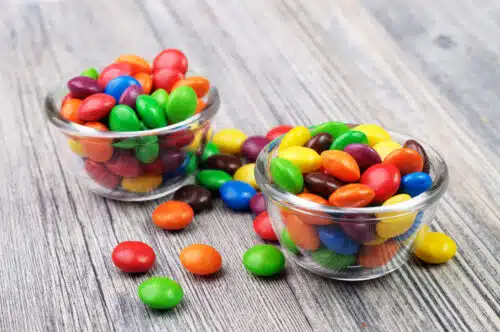
Cost of a Pumpkin Algebra Lesson – Bring algebraic equations to life with this activity.
Hands-on Geometry – Math is always more meaningful when kids can see real-life applications, so try these hands-on geometry ideas.
Gumdrop Structures Engineering Challenge – A fantastic STEM activity that can be made more or less difficult based on the parameters you decide to set.
Pythagorean Theorem Lego Proof – Help students visualize the Pythagorean Theorem using LEGO bricks .
Interactive Notebook Entry: Graphing Using Slope-Intercept Form – Templates and instructions for creating an interactive notebooking page for graphing using slope-intercept.
Language Arts
The Phantom Tollbooth Activities – Journey through The Phantom Tollbooth with these hands-on activities for middle school and high school students.
Calpurnia Tate Book Activities – Get hands-on with the popular book, The Evolution of Calpurnia Tate , and its sequel, The Curious World of Calpurnia Tate .
The Secret Garden Activities – These fun learning activities will help bring The Secret Garden to life.
Around the World in 80 Days Activities – These free printables are geared to younger students, but there are lots of great activities to do with tweens and teens.
5 Ways to Bring Any Book to Life – These are some of our favorite ways to bring books to life for children of all ages.
Shakespeare Activities – Thirty hands-on activities for a variety of the Bard’s works .
Library Scavenger Hunt – Teach your student about literary genres with this scavenger hunt.
Fun Activities for Subject-Verb Agreement in High School Classes – This is intended for a classroom but could be adapted for homeschool use.
A Nature Study Photography Project for Any Age – Photography makes a fantastic high school elective, so use these tips to combine it with nature study.
Home Economics: Budgeting – No homeschooled student should graduate without learning this vital life skill.
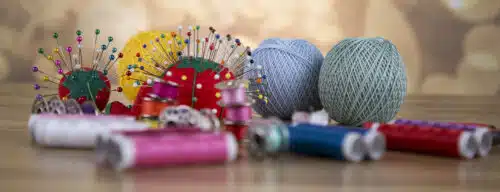
Beginner Sewing Projects & Project Resources – This would make a great addition to a home ec course.
Experimenting with Flexibility – Add this resource to your health class notes.
How to Use Current Events in Your Homeschool – Current events can provide a springboard for some great hands-on activities for middle school and high school students.
Stop Action: {Easy} Movie Making with LEGOs – If you’ve got a LEGO lover, stop-action movie making could be a great digital technology course.
We hope these awesome hands-on activities for middle school and high school students will help your children engage more with their lessons and actually enjoy the subject! Learning can be fun!
You Might Also Like
- How to Be Your Teen’s High School Guidance Counselor
- 10 Tips to Help Easily Distractible Teens Focus
- Tips for Allowing Homeschooled Teens to Make Their Own Schedules
- How to Plan a Homeschool Valentine's Day Party
- 20 Last-Minute Christmas Gift Ideas for the Mom Who Has Everything
- 10 Insanely Easy Ways to Homeschool During the Holidays
- 25 Ways to Show Your Teens You Love Them

Trish Corlew
Trish is one of the owners of Weird, Unsocialized Homeschoolers, Hip Homeschool Moms, Homeschool Road Trips and Only Passionate Curiosity. Trish is from the coast of North Carolina, but they now live in rural West Tennessee on a 40+ acre farm. She has been married to her best friend, David, for 23 years and they have three sons (ages 20, 18 and 16). She has been homeschooling since 2009 and her homeschool style leans towards a Montessori approach with a heavy emphasis on hands-on learning. Trish’s family is Messianic and they love studying the Scriptures and growing in their faith. In her spare time, Trish loves to travel, work in their garden, work puzzles, and play games with the family.
- Trish Corlew https://www.weirdunsocializedhomeschoolers.com/author/trish/ 10 Reasons You Should Definitely NOT Homeschool
- Trish Corlew https://www.weirdunsocializedhomeschoolers.com/author/trish/ Weekly Homeschool Resources - November 1st
- Trish Corlew https://www.weirdunsocializedhomeschoolers.com/author/trish/ Weekly Homeschool Resources Wrap Up – Skipping the Birthday Party
- Trish Corlew https://www.weirdunsocializedhomeschoolers.com/author/trish/ Weekly Homeschool Resources Wrap Up - Being Part of a Weird Community
19 Comments
What a wonderful resource for middle school and high school students! We love hands-on activities at our house!
Love the roundup!!
For sure we need way more ideas to keep the middle school years fun and hands-on.
Love your list!!
Wow! This is an amazing resource! Thanks so much for assembling this list 🙂
Oh, you don’t know how much I needed this post right now! Thank you!
What a great list of activities! I can’t wait to dig in. Maybe the kids will want to do some with me:)
I liked so much all these activities. Thanks a lot.
Just came across this … exactly what I need to start the new year – thank you!
Great ideas for my stem aftershool middle schoolers!
I think I’ve read this post a bunch of times but I keep coming back to it over and over again. Such great ideas.
Love this roundup! Definitely one of the most helpful blog posts out there on the topic of middle school!
Thank you for the chance to win and for blessing homeschool families! And thanks for sharing these hands-on ideas for older students!
Thank you for this amazing list of middle/high school hands on activities.
I forget to offer hands-on activities for my big children. And they need the time to do these things too. Bookmarking this list.
Looking forward to trying some of these with my junior this year!
Excited to use some of these, even though my kids are 4th and 5th grades this year, but many of these are adaptable, and others I’ll tuck away in my digital “treasure room” for future use! The DIY Berry Ink, Secret Garden activities, salt dough relief maps, and predicting the weather with clouds stand out as ones we’ll definitely investigate and attempt this fall. Thank you!
After 20 years of homeschooling and graduating three students, I am down to just one this year. She will be starting high school and I want it to be fun for her. She still enjoys the fun and simple things mentioned in this post.
Lots of great ideas! I pinned to look at it later more thoroughly.
100+ Hands-On Activities for Middle School and High School is an excellent article! The information is very helpful!
Leave a Reply Cancel reply
Your email address will not be published. Required fields are marked *
Notify me via e-mail if anyone answers my comment.
This site uses Akismet to reduce spam. Learn how your comment data is processed .

10 Super Fun Classroom Games For Middle School Students
If you’re teaching teenagers at middle school you know how easily they can lose interest if they’re not having fun in class. A great way to keep middle school students engaged is to use fun and engaging classroom games. Below we have put together 10 of our favorite classroom games for middle school students . These games are not only great for ESL middle school students but can also be used as a fun classroom activity in any class teaching teenagers.
Related: Debate Topics For Middle School Students / Reading Games For Middle School Students
10 Classroom Games For Middle School Students
1: the 20 questions game.
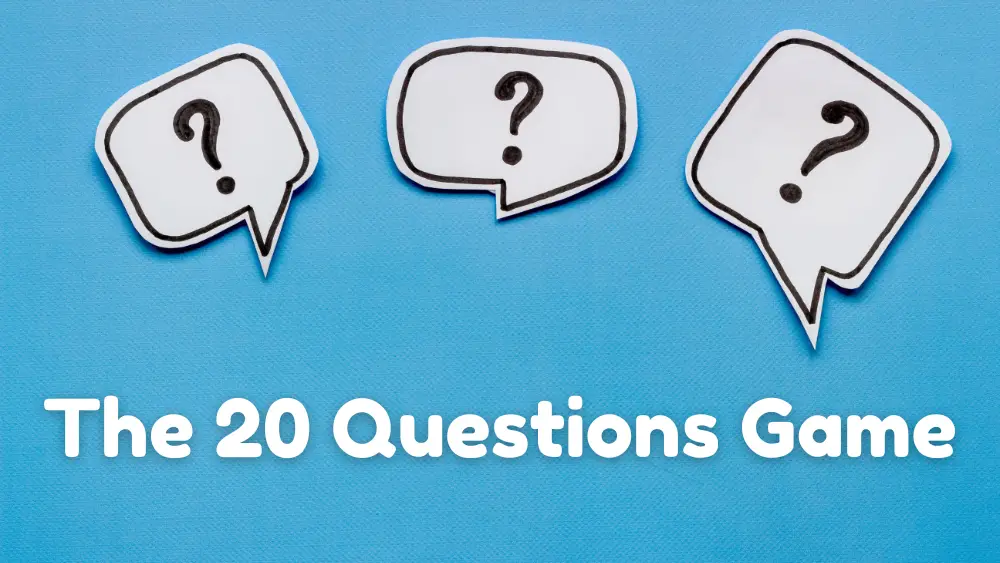
The 20 questions game is a great ESL speaking activity for middle school students. If you’re not familiar with this game, the rules are simple. One student thinks of a secret object and doesn’t tell anyone. The only thing they tell the other students is the kind of thing it is. For example, they might tell them it’s an animal, a type of food, a famous person, etc.
Next, the students can ask up to 20 yes/no questions to try and figure out what the secret object is. For example, if the secret word is a type of food, students might ask “ Is it a fruit? “, “ Is it yellow? “, etc. This game is a fantastic way to get teenagers talking and best of all, it requires no preparation from the teacher. Check out these 20 question game ideas and examples for some categories and words you can use in this fun classroom game.
2: Top Five Quiz Game
Next on our list of fun classroom games for middle school students is the ‘Top Five Quiz’ game. Teenagers absolutely love this game, especially when they get the top answer. To play, students will need a pencil and paper to write down their answers and points. Students can play individually, in pairs, or in small teams.
In this kind of quiz, each question has multiple possible answers. For example, “ Name an animal you can keep as a pet. ” Students must write down just ONE answer and if their answer is in the ‘Top Five’ answers, they score the following points:
1 = 10 Points 2 = 7 Points 3 = 5 Points 4 = 3 Points 5 = 2 Points
If the students’ answers are not in the ‘Top Five’ answers, they get zero points. At the end of the quiz, the student/team with the most points is the winner. For a ready-made quiz and a template to add your own questions to, check out our Top Five Quiz PowerPoint Game page .
3: The Forehead Game

This next game is often played at parties, but it can also be easily adapted to play in the classroom with middle school students. To play, one student (or the teacher) must write down keywords from the lesson on pieces or paper/post-it notes. Next, the students in the class would choose one of the pieces of paper at random and, without looking at it, stick it to their forehead so everyone else in the class can see.
Next, players take turns asking yes/no questions to find out the word stuck to their head. For example, if you were teaching students about jobs and occupations vocabulary , students might ask “ Do I work in a hospital?”, “Do I wear a uniform to work? , etc. The student who guesses their word with the fewest questions is the winner.
4: Describe And Draw Game
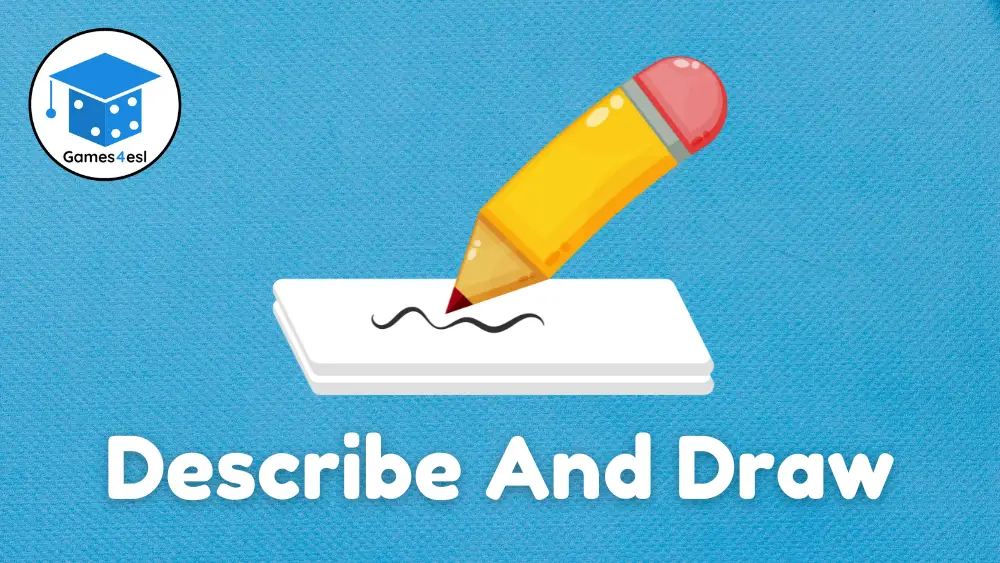
This next activity requires students to use their speaking skills to describe a picture. To play, divide students into pairs and provide a set of interesting pictures or flashcards to one student in each pair. Next, the student with the pictures must describe a picture in as much detail as possible to their partner. The other student must try and draw what their partner is describing.
After a few minutes, have students compare the drawing with the real picture to see how accurate their drawing and descriptions were. This game often leads to some hilarious drawings and teenagers have lots of fun playing this activity.
5: What Am I? Quizzes
Quizzes like our ‘What Am I?’ quizzes are fantastic activities to play with middle school students in class. If you’re not familiar with these kinds of quizzes, the concept is simple. Students will read two or three clues describing something and then must guess ‘What Am I?’. For example, “I have 2 hands but no arms. I have a face but no eyes. What Am I?”, with the answer being ‘A Clock’. Here are 40 ‘What Am I?’ Quiz Questions And Answers you can use in your class.
6: Would You Rather Game
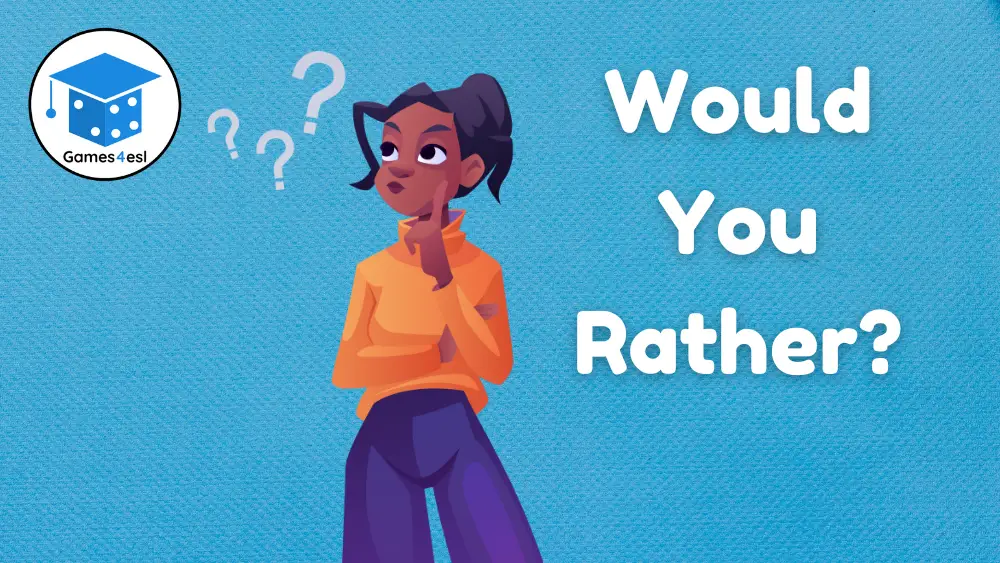
This next activity is great for getting students speaking and expressing their opinions. For this activity, all you need is some Would You Rather Questions . Put students in pairs and provide them with many ‘Would you rather?’ questions, and have them take turns asking their partner the question. After which, students should make their choice and then express three reasons why they chose what they did.
7: Scattergories
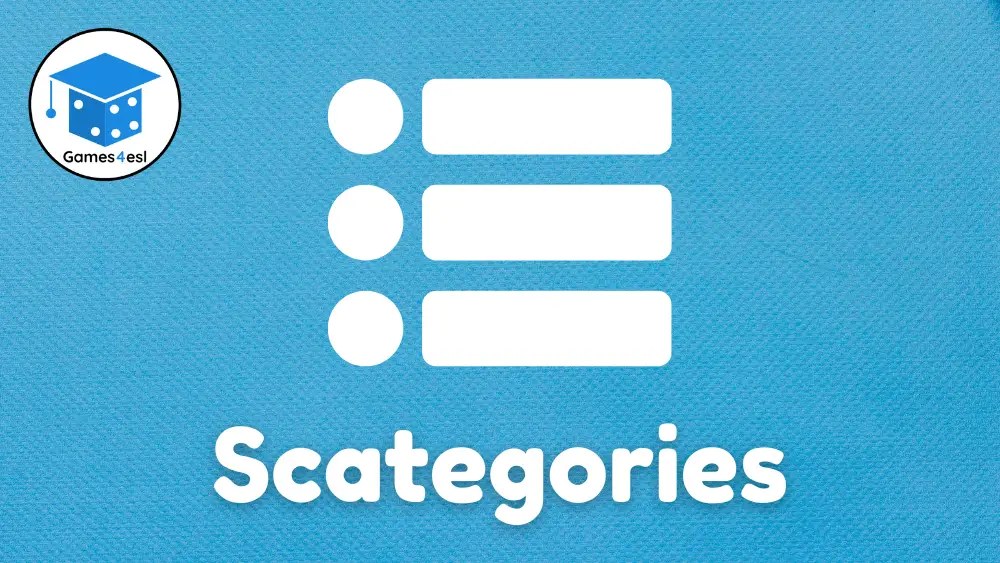
The classic word game Scattergories is a fantastic game to use in class with middle school students. There are several ways to play this game in class, but the basic idea of the game is simple. Put students into small teams and provide them with a category and then give them some time to come up with as many unique words as possible. For each word that they write down which is not on another team’s list, they get a point.
Scategories Example Categories
Here are some example Scattegories categories for ESL students:
- Fruits And Vegetables
- School Subjects
- Feeling And Emotions
- Jobs And Occupations
- Daily Routines
Riddles help middle school students to develop their thinking ability, creativity, and can even improve their reading comprehension skills. Not only that, students really have fun deciphering cryptic clues and working out the answer. However, if the riddles are too hard, rather than having fun, students will just be frustrated. So, if you’re planning on using riddles in class, be sure to choose some easy riddles. The Above video has 10 easy riddles for ESL students that you can show in class.
9: Mystery Box Game
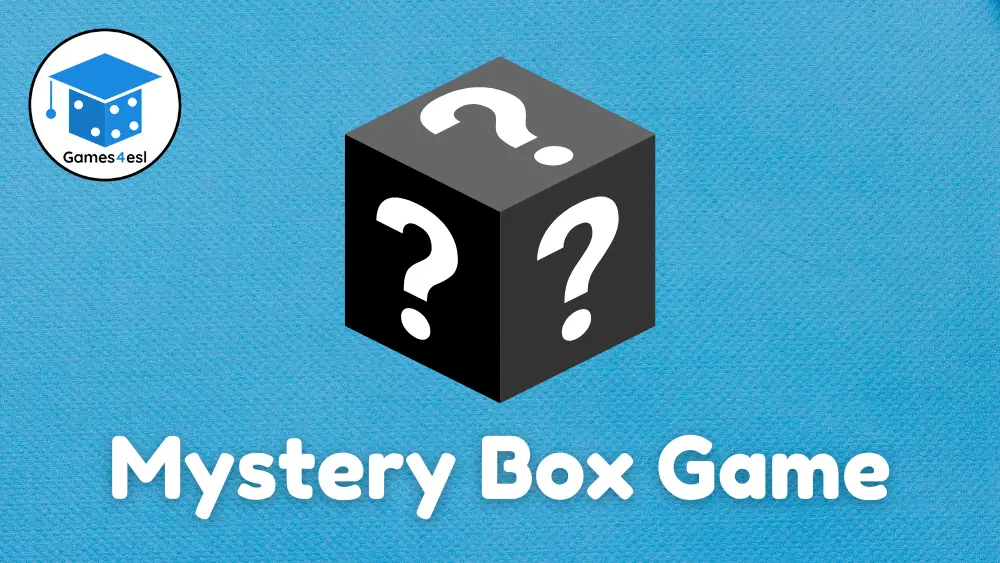
For this game, you’ll need the Mystery Box Game template which is a fun PowerPoint game you can use in class with teenagers. Before the class, you will need to add questions to the PowerPoint template based on the topic you are currently studying in class.
To play the game, divide the class into two teams. Teams will take turns choosing a letter and then answering the question on the slide. After which, students will see the ‘Mystery Box’. They can then choose to KEEP the box or GIVE the box to the other team. Inside the box is either good points (e.g +100) or bad points (-100).
So, if a team decides to keep the box, they could win points but they risk losing points. And if a team chooses to give the box, they might make the other team lose points but they risk giving them points, too. At the end of the game, the team with the most points is the winner.
10: Hot Seat
Hot Seat is a great game you can play with middle school students to review vocabulary, or as just a fun time-filler activity . If you’re not sure how to play Hot Seat, then check out the video above. It shows how to play Hot Seat in class, and you can even show this instruction video to your students to show them how to play.
The basic gist of Hot Seat is to have one student in the ‘Hot Seat’, which is a chair at the front of the class. The teacher would then show the other students a word and then the other students must describe that word without saying the word itself, while the student in the ‘Hot Seat’ must try to guess.
Thanks for reading. I hope your students enjoy these activities. Before you go, don’t forget to check out our other free classroom games, including Activity Videos , PowerPoint Games , and Online Quizzes .

50 Activities for Middle School
Hands-on ideas to engage digital learners in meeting standards and learning goals.
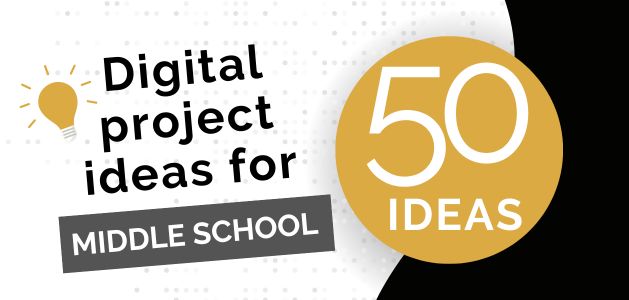
Using a device to fill out a digital worksheet isn't any more compelling than using a pencil to fill out a paper version. Encourage students to show what they know and capitalize on their interest in technology by creating digital projects on classroom topics using media formats that abound in the world around them.
Explore fifty ideas for using a digital approach to help middle school students meet standards and learning goals, divided into sections for:
Language Arts
Social Studies
- Arts & SEL
Use a digital approach to engage middle school students in reading comprehension and provide authentic opportunities for listening, speaking and writing in narrative, informational and argumentative form.
1. Design a new book cover
Have students create a new cover design for a book they are reading to demonstrate comprehension and explore character, plot, setting, symbolism, and conflict.
Explore a Book Cover Design lesson plan
Small, but mindful, changes can move a task beyond remember and retell. For example, replace a typical character trait cluster assignment with the task of developing a coat of arms for a story's protagonist that represents traits of the main character.
Creating a coat of arms provides students with an opportunity to think about objects, colors, symbols, and mottos that reflect a character's personality, passions, strengths, and experiences.
Wixie has a Coat of Arms template that makes it easy to add color, text, and images to show comprehension.
Explore a Character Scrapbook lesson plan
4. Create a Book Trailer
Much like the movie trailers students are familiar with, ask students to create a short, fast-paced book trailer that shares information about characters and events in a way that would motivate others to read the book.
Share the book trailers with the rest of the class or play them on the morning announcements to encourage others to read the books.
Explore a Book Trailer lesson plan
5. Visual Poetry
Blackout Poems
To write a blackout poem, the author covers up words on a page of text until the leftover words form a poem. Digital tools, like Wixie, include blackout poetry templates that contain a page of text from Tom Sawyer ( template ), Shakespeare ( template ), Lewis Carroll ( template ), and more.
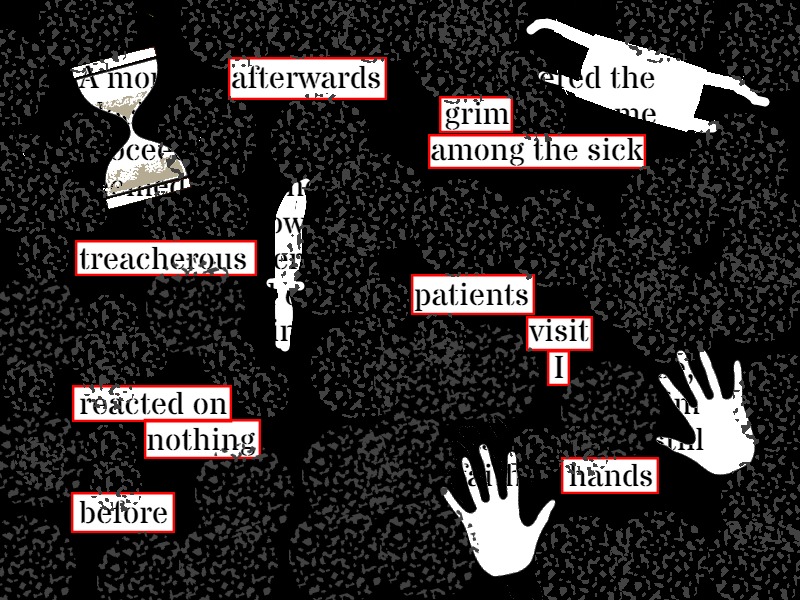
Students read the text and circle words they find interesting, then read them again to hear the resulting poem. Students can circle additional words to fill out the idea and then blackout the rest of the words and add additional decoration.
Video Poetry
Poetry's purposeful word choice encourages close, careful reading. Have students create visual versions of poems to demonstrate their comprehension of the author's word choice and intent.
Ask students to create a project and then type a poem from their favorite poet or one they have written, adding stanzas to each page. Students can add illustrations and record themselves reading it.
Explore a Visual Poetry lesson plan
6. Modernize a Myth or Legend
Rather than merely retelling stories, ask students to adapt, extend, or create new versions of the stories they are reading. Students can modernize an ancient myth to make it more relevant to their lives today, comparing similarities and differences along the way.
7. Cool Word Vocabulary
Visuals help form connections to words and help students better remember the meaning of the word.
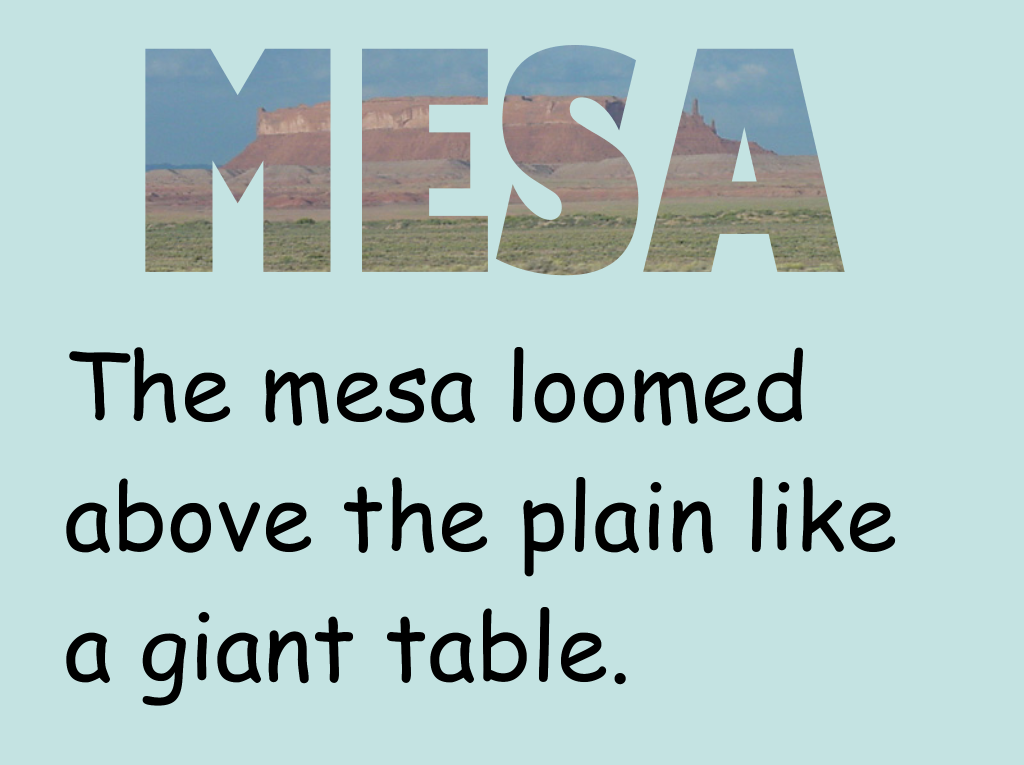
Digital tools make it easy to combine words and pictures and publish flash cards and posters you can use to improve vocabulary.
Explore a Cool Word Vocabulary lesson plan
8. Publish a personification story
Have students personify an object, and then use a digital tool like Wixie to write, illustrate and publish it as an eBook.
Students should brainstorm feelings the object would have to develop the conflict that will drive their story and begin writing. Scaffold their work further by asking them to identify character traits, determine setting, and codify the plot diagram or at a minimum the beginning, middle, and end.
Explore a Personification Stories lesson plan
9. Product: Fictitious Interviews
Creating a digital story in the form of an interview helps you engage students in writing and makes work with informational text come alive. Ask students to craft fictitious interviews between characters in a novel they are reading to demonstrate comprehension of the traits and behaviors.
Fictitious interviews are great ways to summarize and deepen comprehension for informational texts as well, making them perfect for science and social studies classrooms. For example, you can ask students to interview a figure from history, an animal, or even an artifact.
More ideas for conducting interviews
10. Product: Wanted posters
Creating a Wanted poster is a great way to get students thinking about the traits, experiences, and motivations of the characters in the stories they are reading.
It is often the antagonist that makes a story interesting or gives a plot direction. Have students create wanted posters for villains in the stories they are reading to evaluate comprehension and help them consider how they might craft a villain to add impact to their own writing.

Creating Wanted posters can also help students clarify their thinking about definitions related to math , atomic elements and molecules , and figures from history .
Digital tools can provide a platform for middle school students to apply mathematical thinking and engage in standards of mathematical practice as they practice procedures, create visual models, and solve problems.
11. Work with Ratio and Rate
Use word problems ( ratio and rate ) to give students a sense of the ways that ratio and rate connect to the world around them.
Ask students to extend their understanding by writing their own word problems and challenging peers to solve them using strategies like a double-number line .
12. Putt Putt Polygons
Measuring the perimeter and area of polygons requires knowing and applying formulas like the Pythagorean Theorem. Give students a fun context for practicing by asking them to design a hole for miniature golf!
13. Math Backgrounds
Math can be frustrating for some students, especially when erasing mistakes makes equations or coordinate planes unreadable. This problem only adds to the challenge of tackling complex equations and data.
Use backgrounds like grids , plots , or coordinate planes , and have students use paint tools to write equations, fill areas, or plot lines.
14. Design a Dream Home
Ratio and rate also apply to scale in architectural drawings. Even if they don't want to be an architect, most students would love to dream up a bedroom, a tiny house, or even a mansion design.
Have students use a grid to create architectural designs to scale.
15. Play with Probability
You can teach students the rule of probability, but they will retain the information more if they come up with the mathematical rules on their own.
Have students calculate experimental probability by using dice or a specific spinner to do a task 40 times. Have students tally their results and use the data to calculate the experimental probability.
After establishing experimental probability, challenge students to come up with the theoretical probability for other toys. Bonus if they can generate a mathematical model for predicting probability.
16. Collect, analyze, and showcase data
Using data to make predictions, analyze and communicate information is becoming an essential skill for future success. While there are other steps in the data science process, students need to know how to collect and display data in ways that make it easy to visualize and understand.
Wixie makes this process easy with its design tools and templates, whether students are creating bar graphs (categorical), histograms (numerical), or other data displays.
17. Explore Geometric Transformations Through Tessellations
Tessellations are geometric patterns that repeat forever with no gaps or overlaps. Squares can tessellate easily. The word tessellate comes from the Greek word tesseres, which means four.
Inspire students with the work of M.C. Escher or Islamic tiling, and then have them create their own rotation or reflection tessellations.
Explore a Tessellation lesson plan
18. Online Math Academy
Showcase student expertise by asking them to create tutorials to teach others how to calculate, measure, solve and more.
19. Product: Explainer Video
What can your students teach others? Procedural writing is an excellent way for students to become experts in a topic and feel confident about their ability to share the information with others. This process of deconstructing and reorganizing information helps students cement concepts and provides an opportunity for you to pinpoint misconceptions.
So whether students are sharing content, a process they struggled to understand, or something they are passionate about, a how-to assignment is the perfect task to cement learning and inspire others.
20. Inform with Infographics
Have students research information, conduct surveys, or collect data on a topic. Then, students can create charts and graphs, analyze the information, and develop an infographic to display their findings.
Explore a Creating Infographics lesson plan
Digital tools provide a fun way for students to share ideas and explain scientific understandings for Life, Physical, Earth and Space and Engineering concepts.
21. Body System Beats
Ask students to create a music video to inform others about how a body system works, its functions, and how it interacts with other systems for optimal health.
Explore an It's My Body lesson plan
22. Cell Function Similes
Evaluate student understanding of animal cells by asking them to compare how various cell parts, including the nucleus, cell wall, cell membrane, chloroplast, and mitochondria, function like elements on a farm or parts of a school .
By illustrating these comparisons, students not only gain a deeper understanding of cellular structures and their functions but also develop their ability to make meaningful connections between seemingly unrelated concepts.
23. Model Scientific Processes
Actively engage students in scientific exploration by creating simulations and visual representations that model chemical reactions and scientific processes.
By encouraging them to create visual representations, students can deepen their understanding of complex concepts.
24. Expert Interviews
Students can create expert interview videos that delve into scientific concepts and discoveries. By conducting interviews with scientists or experts in the field, students can explore complex ideas and present their findings in an engaging and accessible format; fostering a deeper understanding of science among their peers.
Don't have access to an expert? Craft a fictitious interview!
25. Write Informational Texts
Ask students to create informational science texts to inform or share learning with others. Through these books, students can convey their understanding of various concepts.
26. Terminology Journals
Students benefit from explicit vocabulary instruction, especially terminology linked to a specific discipline or topic. Collecting, defining and refining are easy with digital terminology journals.
27. Animate a Scientific Process
Labeling and diagramming are great, but modeling a process through animation can help students better understand the macro- and micro- scopic processes. For example, ask students to animate a chemical process or geologic cycle, illustrating the stages and processes involved.
Read more about Animating in Secondary Math and Science
28. Connect Physics to Fun
Help students see physics as more than rules and equations by connecting it to a favorite sport or physical activity.
Explore a Fastballs, Free Throws, and Physics lesson plan
29. Publish Informational Comics
The limited amount of space in a comic's panels requires students to choose key points in a process or important factors in chemical reactions as they work to design and illustrate them.
30. Raise Awareness of Environmental and Health Issues
Students in middle school are starting to have the capabilities and passions to change the world. Have students produce public service announcements (PSAs) to raise awareness, inform, and change behavior.
When developing a public service announcement (PSA), students have a chance to practice and apply persuasive writing skills in a real-world, authentic context. A short PSA targeted at a particular audience also encourages students to focus on writing organization, as well as voice and word choice.
Explore a Here's to Your Health lesson plan
Engaging middle school students in deep thinking about history and community helps to develop citizens who have powerful inquiry and critical thinking skills.
31. Biographies
Using a digital storytelling approach to biographies helps prevent their writing from becoming a list of unrelated facts. Having students combine their research results with imagery, sound, and other media can help them better combine aspects of narrative and informational writing for a more compelling script.
Biographies aren't always books, either. There are even entire cable television channels devoted to biographies. Consider having your students create video biographies, too.
Explore a Video Biography lesson plan
32. Historical Journal
To help students think deeply about how events, circumstances, culture, and leaders in the past affect the lives of human beings, ask students to create a series of fictional journal entries that indicate how events in the past might have affected the life and perspective of a specific person living during that time. ( template )
Explore a Historical Journal lesson plan
33. Make a Map
Have students use paint tools and text labels to create maps to show the geographic features, regions, and/or economy of an area, country, or civilization.
34. Produce the News
Our students have grown up watching shows, but not necessarily the news. Challenge your students to develop a news report they would actually want to watch based on the content they are learning.
Writing a news report requires students to organize and summarize information and use new vocabulary and terminology in context.
Explore a News Broadcast lesson plan
35. Interview a Community Leader
Ask students to interview a community member to expand their knowledge and experience, as well as encourage listening, curiosity, and empathy skills.
Encourage students to change the order of questions or the order of the answers shared so that the story " unfolds a lesson learned ." In other words, what is the moral of this person's story, or what can it teach the rest of us?
36. Explore the Issues
Students in middle school are idealistic and often passionate about current issues. While they may simply want to proclaim their ideas on a billboard , use this opportunity to ask them to back up their opinions with claims and evidence .
37. Develop a Virtual Museum
Have students design an online museum, displaying artifacts and stories to engage others in the heritage of their community or a specific region.
Explore a Virtual Museum lesson plan
38. Host a Tourism (Geography) Trade Show
To help students better understand the unique features of a place, have them develop materials for a virtual tourism trade show where students promote and pitch that location to attract visitors.
Explore a Tourism Tradeshow lesson plan
39. Publish a Historical Newspaper
Have students create a newsletter or newspaper to show what they have learned about the events, politics, and cultures of a different time in history.
Newspaper creation helps students better understand the perspectives of those in different times and cultures.
Explore a Day in the Life lesson plan
40. It's a Postcard Point of View
After learning something new, have students tell someone else using a postcard! They could write a postcard from a specific time in history or a unique geographic or cultural destination.
Arts and Social-Emotional Learning
Wixie provides a canvas for students to set goals, explore emotions, and express themselves through art and music.
41. Set SMART goals
The simple act of writing down your goals makes you more likely to achieve them, so have students take some time to set personal goals to accomplish this school or calendar year. Developing goals that are SMART (specific, measurable, attainable, relevant, and timely) can help even more.
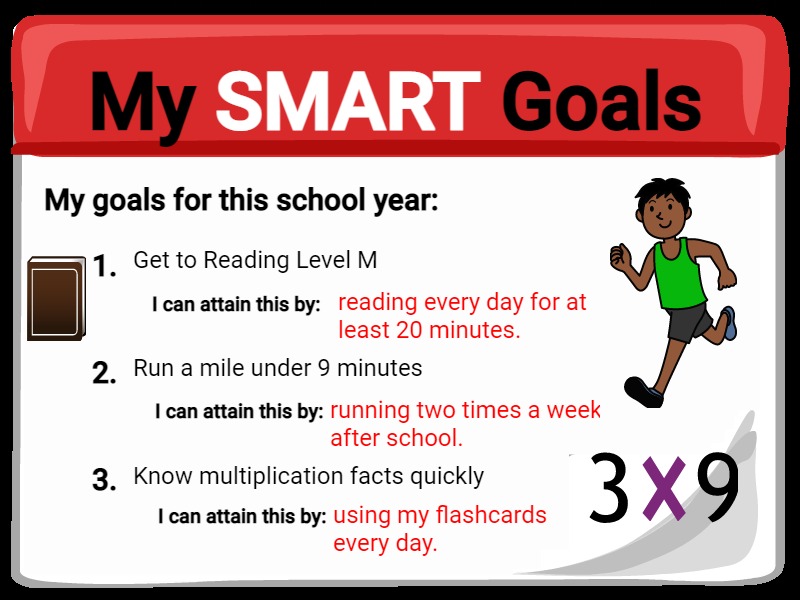
Have students use the goals as a home screen on their devices so they see a daily reminder of what they are working to achieve.
Explore a SMART Goals lesson plan
42. Design a Vision Board
A vision board provides inspiration and motivation to reach dreams and goals. Students can choose a goal and add pictures of what they think achieving them looks and feels like.
Digital tools, like Wixie, make it easy to combine images. When vision boards are complete, print or export an image so you can post to a place you are everyday, like on a desk or phone lock screen, for a daily motivator.
Explore a Vision Boarding lesson plan
43. Create an Arcimboldo-inspired self-portrait
Giuseppe Arcimboldo is an Italian Renaissance painter known for his portraits of people that use objects like fruit and books. Challenge students to create Arcimboldo-style self-portraits by combining clip art images in an imaging tool.
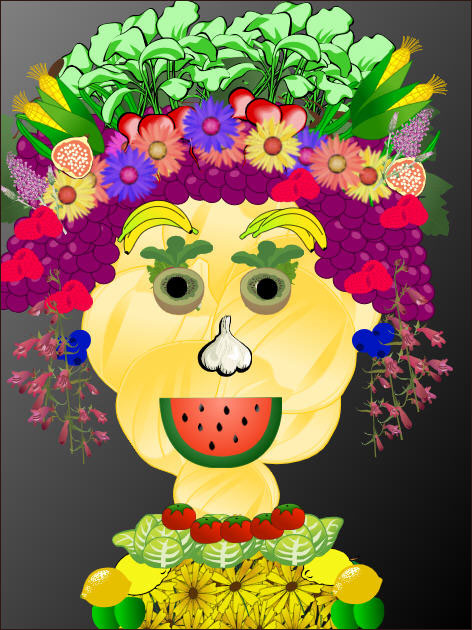
Explore an Arcimboldo-Inspired Self-Portraits lesson plan
44. Play Music
While you may not be teaching music theory, expressing one's feelings and emotions through music is both fun and therapeutic. You can try the online keyboard below or give students options like:
- a xylophone
- percussion tubes
45. Write a Classroom Constitution
Involving students in creating a class constitution makes them part of the process of government, giving them a vested interest and responsibility in following and upholding the laws they have determined.
Explore a Classroom Constitution lesson plan
Inform students about surrealism. You might inspire them by reading a book like Pish, Posh, Hieronymus Bosch .
Have students use paint tools to illustrate bizarre creatures juxtaposed around a normal self-portrait and then write a poem about the way the surrealism makes them feel.

This example takes advantage of the mirror symmetry options for the paint brush in Wixie .
Explore a Surreal Symmetry lesson plan
47. Explore Collaboration Skills
In All in the Same Boat by Wilkie Martin, a greedy rat is shown how no one wins when success is achieved at the expense of others.
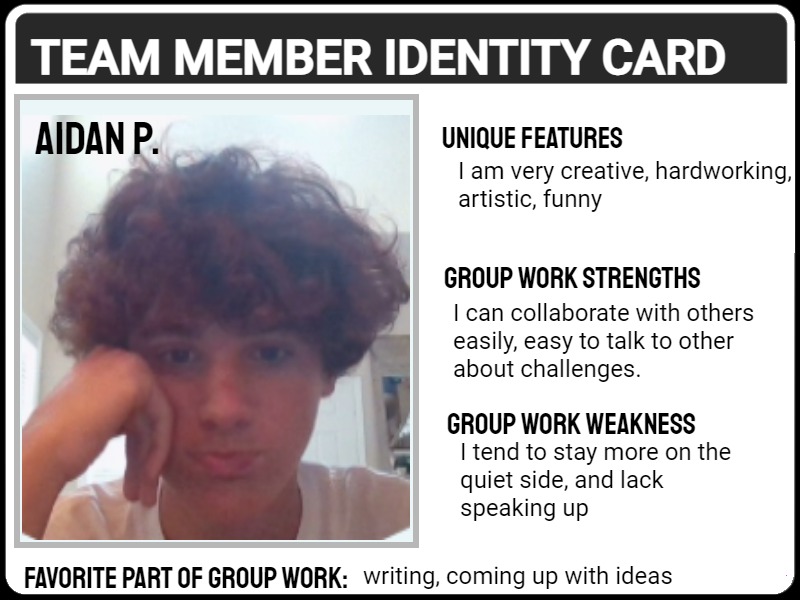
Discuss what makes a great teammate and then ask students to create their own Team Member ID Card to let future group members know a bit about how they work collaboratively.
48. Send a virtual compliment
Show your appreciation for a classmate, family member, or friend with a compliment card. This is a great idea for a random acts of kindness promotion.
Tools like Wixie let you print multiple copies or pages onto a single sheet of paper, making it easy to print, fold, and then drop in a classmate's lunch box or backpack.
49. Make a playlist for your future
Students likely already have playlists for their favorite songs, and many have playlists for different moods. Use this as a jumping-off point to ask them to "audiolize" what their future sounds like by creating a playlist .
Students can add songs they know or create new artists and bands and write descriptions for them.
50. Compose a melody
Use music production or notation software to have students compose their own music.
Have students record themselves singing their melody or playing their compositions on a recorder or keyboard.
Once they have experience with digital projects, let students choose the product or way they will demonstrate understanding… simply make them argue their case before they begin. No matter what you or they choose, transfer as much responsibility as possible to students to motivate and empower them to control their own learning.

by Melinda Kolk
Melinda Kolk ( @melindak ) is the Editor of Creative Educator and the author of Teaching with Clay Animation . She has been helping educators implement project-based learning and creative technologies like clay animation into classroom teaching and learning for the past 15 years.
Get the latest from Creative Educator
Creative classroom ideas delivered straight to your in box once a month.
Add me to the Creative Educator email list!
Popular Topics
Digital Storytelling
21st Century Classrooms
Project-based Learning
- Hero's Journey Lesson Plan
- Infographics Lesson Plan
- Design a Book Cover Lesson Plan
- Informational text projects that build thinking and creativity
- Classroom constitution Lesson Plan
- Set SMART Goals Lesson Plan
- Create a visual poem Lesson Plan
- Simple surveys and great graphs Lesson Plan
- Embrace action research

Six ways to implement digital storytelling
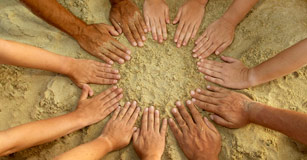
Get the most out of collaboration during student project work
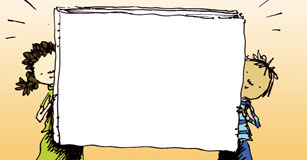
The glorious, wonderful, empty page
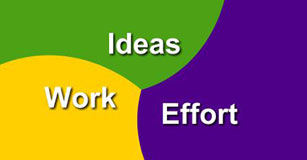
Make It Matter! Move from projects to project-based learning
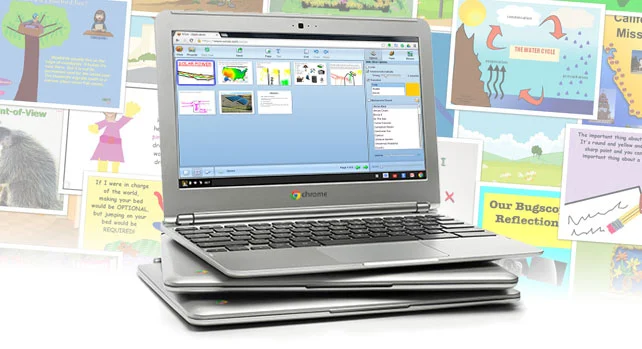
More sites to help you find success in your classroom

Share your ideas, imagination, and understanding through writing, art, voice, and video.

Rubric Maker
Create custom rubrics for your classroom.

Pics4Learning
A curated, copyright-friendly image library that is safe and free for education.

Write, record, and illustrate a sentence.
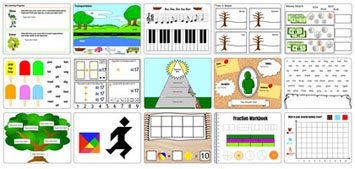
Interactive digital worksheets for grades K-8 to use in Brightspace or Canvas.
Professional Learning

Teaching and Learning
Informational Text
English Language Aquisition
Visual Arts
© 2024 Tech4Learning, Inc | All Rights Reserved | Privacy Policy
© 2024 Tech4Learning, Inc | All Rights Reserved | https://www.thecreativeeducator.com
- WordPress.org
- Documentation
- Learn WordPress
- Members Newsfeed
24 Fun Classroom Activities for Middle School Students
- Middle School Education

Introduction:
Engaging middle school students can sometimes be challenging. To keep their attention and spark their interest in learning, teachers must come up with creative classroom activities. Here are 24 fun and educational activities that will make your middle school classroom an exciting and dynamic environment.
1. Silent Ball: In this activity, students pass a soft ball around the room without speaking. To add a challenge, set a timer to encourage faster reaction times and teamwork.
2. Four Corners: Designate each corner of the room for a different opinion or preference. Ask questions, and have students move to the corner that best represents their stance.
3. Speed Debates: Organize short, timed debates on various topics to challenge students’ critical thinking and encourage them to articulate their viewpoints quickly.
4. Blindfolded Drawing: Pair up students and blindfold one partner. The other partner must describe a subject or image that the blindfolded student must then attempt to draw.
5. Kahoot!: Utilize the online quiz platform Kahoot! to create engaging quizzes tailored to your current lesson plan.
6. Escape Room: Set up a classroom escape room experience that involves solving riddles, puzzles, and challenges related to your curriculum content.
7. Trivia Contest: Organize a trivia contest on various subjects to test general knowledge and foster friendly competition.
8. Scavenger Hunt: Arrange a scavenger hunt around the classroom or school campus using clues related to your lesson material.
9. Reader’s Theater: Assign or create short plays based on literary works you are studying as a class, having students perform them in groups.
10. Memory Chain: Test memory skills by having students take turns adding items to a list until someone repeats an item or cannot think of anything new.
11. Vocabulary Pictionary: Improve vocabulary by having students draw out vocabulary words while their classmates guess what they are drawing.
12. Photo Analysis : Display a series of images and have students analyze and discuss the pictures’ content or theme.
13. Current Events Discussion: Hold a classroom debate on current events, encouraging students to research and form their opinions on the topics at hand.
14. Brain Dump: Allow students to stand up and “dump” knowledge on a subject for 60 seconds straight without stopping.
15. Class Quiz Show: Set up a classroom quiz show, complete with buzzers, to bring excitement to trivia and review sessions.
16. Problem-Solving Challenges: Present students with real-world problems that encourage critical thinking, teamwork, and creativity in developing solutions.
17. DIY Board Games: Have students create their own educational board games based on the material they’re learning.
18. Group Poster Projects: Assign groups of students a topic to research and have them collaborate on creating informational posters about their assigned subject.
19. Skits & Role Plays: Create memorable lessons by having students act out scenarios related to the curriculum in skits or role plays.
20. Gallery Walks: Use wall space in your classroom to display student work or set up stations relating to different topics. Have students walk around the room and discuss what they see.
21. Mind Maps: Encourage brainstorming by having students create mind maps, focusing on connections between concepts and ideas.
22. Virtual Field Trips: Utilize technology to take your class on virtual field trips to museums, historic sites, or other relevant locations around the world.
23. Musical Chairs Writing: Similar to musical chairs, when the music stops, have students switch seats and add to the writing prompt left by the person who was sitting there before them.
24. STEM Challenges: Engage students with hands-on STEM activities that incorporate math, science, engineering, and technology concepts.
Related Articles

Starting at a new school can be an exciting yet nerve-wracking experience…

Introduction: As middle schoolers transition into more independence, it's crucial that they…
1. Unpredictable Growth Spurts: Middle school teachers witness students entering their classrooms…

Pedagogue is a social media network where educators can learn and grow. It's a safe space where they can share advice, strategies, tools, hacks, resources, etc., and work together to improve their teaching skills and the academic performance of the students in their charge.
If you want to collaborate with educators from around the globe, facilitate remote learning, etc., sign up for a free account today and start making connections.
Pedagogue is Free Now, and Free Forever!
- New? Start Here
- Frequently Asked Questions
- Privacy Policy
- Terms of Service
- Registration
Don't you have an account? Register Now! it's really simple and you can start enjoying all the benefits!
We just sent you an Email. Please Open it up to activate your account.
I allow this website to collect and store submitted data.

20 STEM Projects That Are Great for Middle School
Krystal DeVille
February 15, 2024

Middle schoolers experience a great time of exploration and learning during these formative years. Explore these middle school STEM projects, designed to enhance STEM education by engaging students in hands-on learning. Pick which ones you want to try first.
Simply click the title of each lesson in the list to get the full lesson plan for these great STEM challenges that align with lessons for middle school science, technology, engineering, and math objectives. Alongside these projects, we also offer a variety of easy STEM challenges that can serve as introductory activities for beginners.
I’ve gone through all the educational subscription boxes for teenagers and put together the best ones in this resource, teenagers’ top STEM subscription boxes.
Table of Contents
STEM Activities for Middle School Students
1. i breathe what.
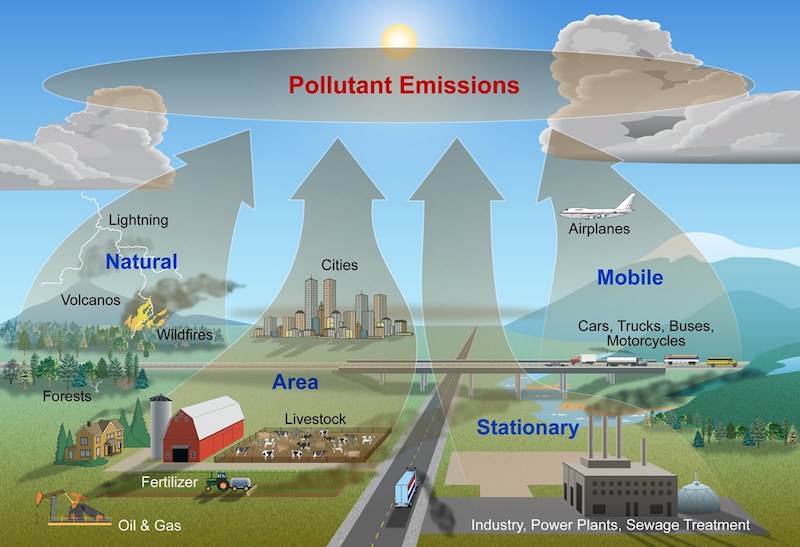
Students enhance their problem-solving skills and understanding of the scientific method by exploring air quality through pollen, dust, and particulates using their homemade ‘pollution detectors.’ They will hypothesize what causes the differences and explain why engineers look at the particulate matter when they observe air quality.
2. Design a Bridge
This is a fun way of using simple machines and various materials, students design bridges that can hold 100 pennies for 30 seconds without collapsing, teaching them fundamental principles of physics. Review engineering concepts such as load and force with your classes before they get started. Consider using craft sticks as one of the materials, which are great for learning about weight distribution and structural integrity.
3. Spaghetti Soapbox Derby
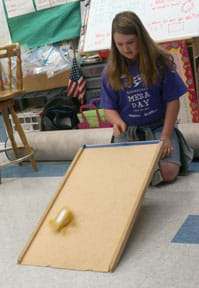
In this science experiment, pairs of students design, build, and test model vehicles made from dry pasta and hot glue, with the goal of rolling along a ramp and coasting as far as possible. This STEM activity focuses on using somewhat challenging materials in the best ways possible.
For an added challenge, students can use rubber bands to enhance the propulsion of their pasta vehicles.
4. Trail Planning Using Topographic Quadrangle Maps
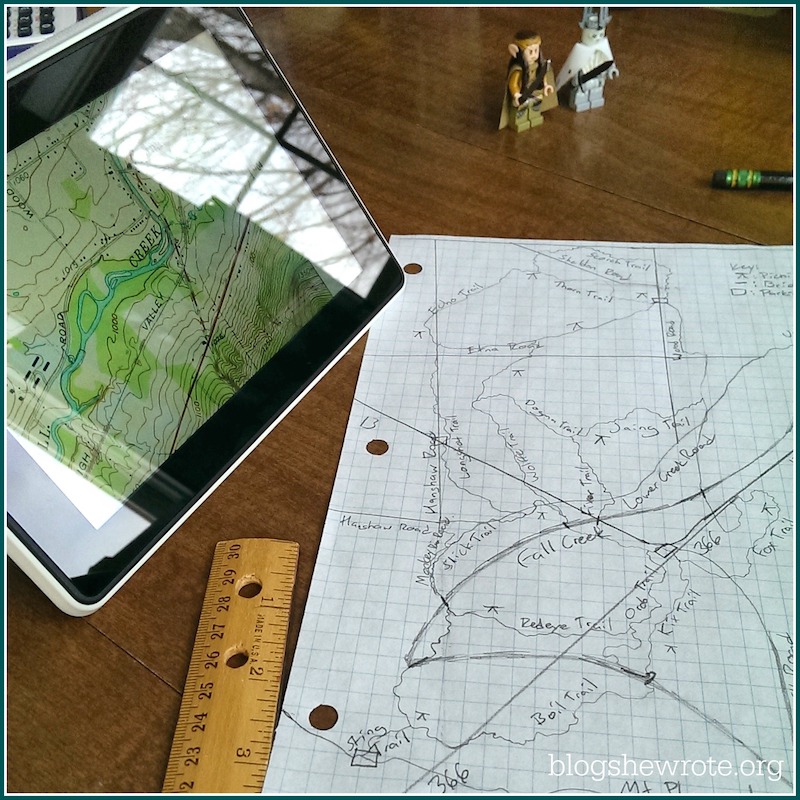
This earth science activity first calls for familiarity with US Geological Survey quadrangle maps. Working within set guideline requirements, students then use these maps to design a good route for a new recreational trail.
5. Bikini Bottom Genetics
Students apply an understanding of genetics in an analysis of sea creature genotypes that live in SpongeBob SquarePants’ neighborhood. They predict traits of offspring with the use of Punnett squares.
6. Design a Wristwatch for the Visually Impaired
Help your students review the engineering design process. They will then research, model, test and evaluate wristwatches for individuals with visual impairments as an exercise in applying engineering skills in the areas of bioengineering and biomedical engineering.
Take a look at our review of Groovy Lab in a Box . It’s hard to convey, but after reviewing about a dozen educational STEM subscription services, Groovy Lab Box has the most well-thought-out lesson plans!
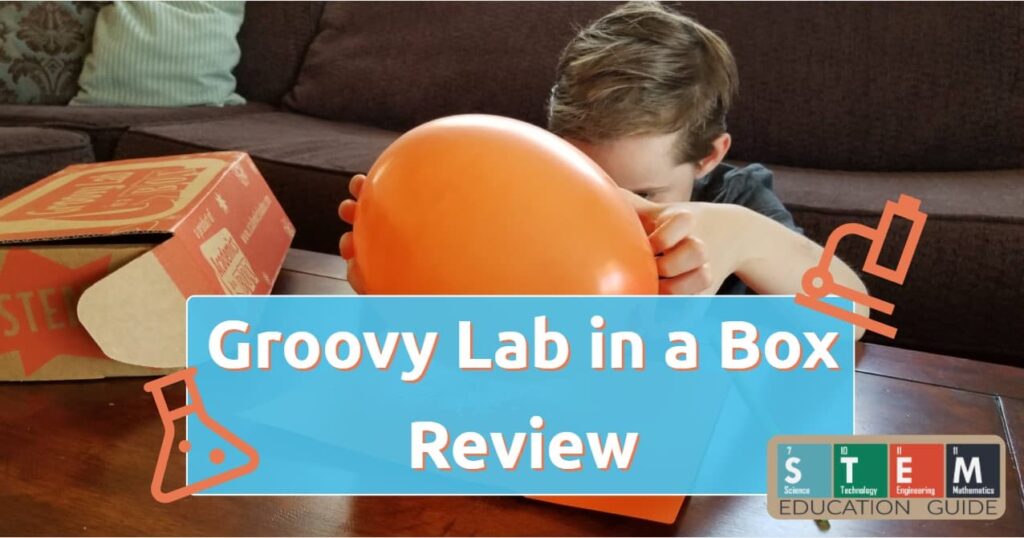
7. Use Your Shoe!
Teachers collect shoe size data from the class. As a group, they use the data to determine the mean, median, and mode. Students then use that information to make inferences about average shoe size and broader populations. This activity provides a review of how to calculate mean, median, and mode, along with methods to make inferences based on the sample.
While this article focuses on middle schoolers, we also recommend fun and educational STEM projects suitable for elementary students .
8. Mission to Mars
Following a storyline, task your students with completing various STEM challenges, including understanding chemical reactions through a Coke and Mentos experiment as part of a Mars emergency. Teamwork, engineering design, and the use of science topics in real life are all addressed.
9. Snack Time!
Using nutritional information labels from various packaged foods, students will organize and describe that info to show the data in a box-and-whisker plot, bar graph, and pie chart. This activity touches on both math and science standards.
10. No Valve in Vain
Teams of students employ the engineering design process to use tape and plastic tubing to create heart valve models. For this activity, the class reviews the engineering design process and the workings of a one-way valve.
For older kids, particularly high school students looking for more advanced challenges, please check out our article, The Best Science Sets for Teens .
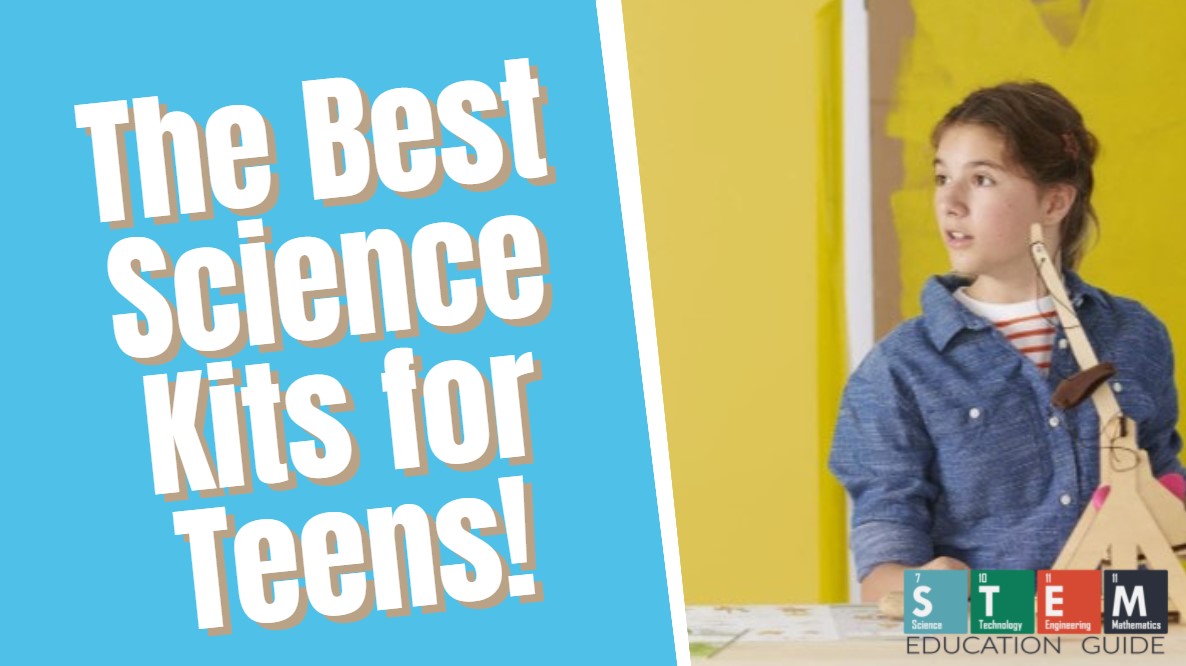
11. Marble Speed Traps with Lego Mindstorms
Students review the formula for velocity . Using drag and drop programming, they code the speed traps to measure the distance between the sensors and time it takes the marble to travel between them. They design the course, write the code, convert units, evaluate, and make changes as needed.
12. The Million Dollar Project
Students imagine inheriting and spending 1 million dollars with specific guidelines of how they may use that money. They research on the internet, record all purchases, learn to write checks, and track all their spending, which reinforces various mathematical concepts.
13. Explore the Law of Inertia using a Fidget Spinner

Review the equations for torque and inertia with students. By removing lights (weight) from spinners, they can explore how the amount of time the device will continue spinning is affected by the mass.
14. Backyard Weather Stations
Working in groups, students describe the current weather and predict future conditions by observing cloud formations. They design backyard weather stations that could gather data for actual forecasting. Technologies for forecasting would be explored, along with weather basics.
15. Leaning Tower of Pasta
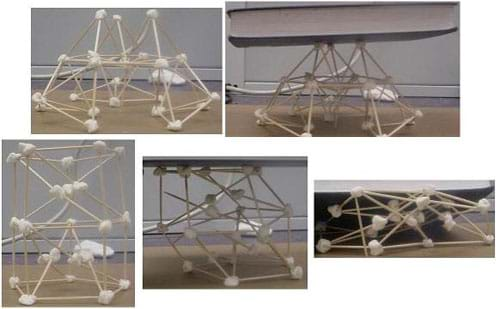
Review compression and tension in structure stability with your class. Students use math and engineering concepts to design and build structures with long, dry spaghetti and marshmallows, to find which ones can withstand the largest amount of load.
16. Cleaning the Great Lakes
What better way to understand environmental science than by having students use limited materials to discover how to filter pollutants from dirty water? Teachers may use this challenge activity along with earth science units about water pollution or those concerning local lakes.
17. Soil Biosolarization: Sustainable Weed Killer
Serving as agricultural engineers, students explore the effectiveness of this sustainable weed control technique that uses organic waste instead of poisons. By using seed starter pots, they plant “weeds” and test the use of organic matter, like oatmeal, to see if it kills the weeds, assessing the impact of products and systems.
18. Renewable Energy: Power Your School
In pairs, students use real data to assess the possible use of solar or wind power generation at their school. Using science, math, and engineering concepts, they explore the differences between these two methods, use maps for an analysis of potential, and look at factors related to the feasibility of renewable energy at their location.
19. Generate Your Own Ocean Currents!
Encourage critical thinking and understanding of real-world applications as students design and construct ocean models to study wind-driven currents. Through this challenge project, they will explore circulation patterns, the Coriolis effect, and the transfer of heat from the global ocean convection cycle.
20. Scaling Up Candy Wrappers
Students bring in their favorite candy bar wrappers, choose a scale factor (larger than 5), and enlarge their wrappers to that scale in a drawing on grid paper. Scaling up candy wrappers is not just educational, but also a lot of fun, teaching kids about the math concept of scale factor. They can then color and display their finished projects!
21. Rube Goldberg Machines
What is a rube goldberg machine.
A Rube Goldberg machine is a deliberately complex contraption in which a series of devices perform simple tasks linked together to produce a domino effect, ultimately accomplishing a simple goal in a highly complex manner. Named after the American cartoonist Rube Goldberg, these machines are fantastic tools for teaching students about physics, engineering, and critical thinking.
Why Include Rube Goldberg Machines in Middle School STEM?
- Encourages Creative Thinking : Building these machines requires students to think outside the box and use their imagination to solve problems.
- Teaches Basic Physics Principles : Concepts like energy transfer, motion, and simple machines come to life in a Rube Goldberg project.
- Enhances Teamwork and Collaboration : Students often work in teams, learning to communicate and collaborate to design and build their machines.
- Develops Problem-Solving Skills : Students learn to troubleshoot and iterate, key skills in any STEM field.
Implementing Rube Goldberg Machine Projects
- Introduce the Concept : Start with a brief history of Rube Goldberg and show examples of Rube Goldberg machines, either through videos or illustrations.
- Define the Project Scope : Set clear goals and parameters. For example, each machine must have a minimum number of steps or complete a specific task.
- Materials : Encourage creativity by allowing a wide range of materials, from household items to recycled materials.
- Documentation : Have students document their design process, challenges, and solutions. This can be in the form of a journal, video, or presentation.
- Presentation and Reflection : Allow students to present their machines to the class. Encourage them to discuss what they learned and how they overcame obstacles.
22. Egg Drop Challenge
What is the Egg Drop Challenge? An engaging physics experiment for middle schoolers, the Egg Drop Challenge involves designing a device to protect a raw egg from breaking when dropped from a height. It’s an excellent way for students to apply concepts of gravity, impact force, and material properties.
Why It’s Beneficial:
- Encourages creative problem-solving.
- Demonstrates physics principles like momentum and shock absorption.
- Promotes teamwork and collaborative skills.
Implementing the Challenge:
- Materials: Offer materials like straws, balloons, and craft sticks.
- Design and Build: Students design and construct their egg-protecting devices.
- The Drop: Test the devices by dropping eggs from a set height.
- Analysis: Discuss the outcomes, focusing on physics concepts and design strategies.
Curriculum Alignment: This challenge complements the middle school physics curriculum, applying theoretical concepts practically.
23. The Index Card Tower Challenge
What is the Index Card Tower Challenge? The Index Card Tower Challenge is a straightforward yet engaging activity that introduces students to basic principles of physical science and engineering. Using only index cards, students are challenged to build the tallest possible tower. This activity is the best way to demonstrate concepts like balance, gravity, and kinetic energy, making it perfect for kids of all ages, including younger kids.
Why It’s Essential in STEM Curriculum:
- Introduces Physical Science Concepts: Focuses on basic principles like stability and kinetic energy.
- Encourages Creative Problem-Solving: Challenges students to think innovatively using simple materials.
- Accessible to All Ages: Easily adaptable for different age groups, making it suitable for both younger kids and older students.
- Prepares for Future Careers: Develops foundational skills useful in various STEM fields.
- Materials: Provide students with a stack of index cards.
- Build the Tower: Students experiment with different construction techniques to build their towers.
- Discussion on Physical Science: After the activity, discuss how forces like gravity and kinetic energy influenced their designs.
- Real-World Connection: Relate the activity to real-world structures and engineering challenges.
How It Fits Into STEM Courses: The Index Card Tower Challenge is a versatile activity that can be integrated into various STEM courses. It encourages students to apply scientific principles and think critically about engineering challenges, making it a valuable addition to any STEM curriculum.
How To Make The Most Of These Fun STEM Activities for Middle School Students
Whether in STEM labs, at home, or in the classroom, engaging students with discussion questions throughout these hands-on activities is vital.
To connect with students’ interests, some of these STEM activities offer different ways, including the design or analysis of simple video games, blending technology with creativity.
We rounded up these projects specifically because they align with learning objectives and lessons for 6th to 8th-grade students. Ask how this applies to what they’re currently learning in class? What did the project demonstrate?
Let us know in the comments what your favorite Middle School STEM projects! We’d love to hear them.
2 thoughts on “20 STEM Projects That Are Great for Middle School”
I taught bridge building to sixth grade students. The only thing I taught them was information and diagrams about trusses. They had to take notes for their own use during construction. Gave them the materials, formed groups and gave them them help without interfering with their own ideas. The amount of enthusiasm I have seldom seen in middle school. They were so excited they told their other teachers about the project. The bridges were beautiful and so strong. It was great to see the application of the trusses! I am all for STEM activities!
These are some great activities thanks for sharing and I’ll use them at my school.
Leave a Comment Cancel reply
Save my name, email, and website in this browser for the next time I comment.
most recent

Activities and Games , Toy Gift Guides
Best stem subscription boxes for kids: hands-on reviews.

Activities and Games , Science
Nervous system facts: our body’s control center.

Activities and Games
Student engagement strategies: boosting participation in the classroom.

Take Apart Toys for Toddlers – Perfect Gift to Keep Them Occupied

Engineering , Math , Science , Technology
Stem programs: how to choose the right major.

Science , Engineering , Math , Technology
Kiwico vs mel science: a complete breakdown.

Science , Technology
Wind energy facts for kids: discover the power of the breeze.
STEM Education Guide
[email protected] STEM Education Guide 9125 SVL BOX Victorville, CA 92395
Your Compass for STEM Discovery
© 2024 STEM Education Guide
.png?width=1270&height=453&name=Copy%20of%20Kid%20Spark%20Logo%20(Horizontal%20-%20Full%20Color).png)
Main navigation
- District Solutions
- Pre-K - 1st Grade STEM Program
- 2nd - 5th Grade STEM Program
- 6th - 8th Grade STEM Program
- Professional Learning
- Robotics & Coding Tutorials
- Rapid Prototyping & 3D Printing Tutorials
- MakeCode for Spark:bit
- 3D Virtual Parts Library
- About STEM Labs
- Foundational Fluencies STEM Lab
- STEM Pathways Lab
- Replacement Parts
- Announcements
- 858.259.4433
Kid Spark Education Blog
12 interactive middle school stem activities & challenges.
The middle school years are a crucial time for students to develop their academic skills in all subjects, including the STEM subjects of science, technology, engineering, and mathematics. For students to fully develop a strong STEM identity, they need to participate in hands-on activities and projects that help them comprehensively understand key concepts.
By working on interactive STEM activities, students are more likely to understand how STEM is applicable to the real world. Hands-on activities are also great for students who struggle with traditional learning methods or students who have difficulty staying focused during standard lessons, as these STEM activities can provide an exciting break from typical classroom projects.
In this article, we break down the importance of STEM in middle school education and curate a list of great hands-on STEM activities for these middle grades.
For a dedicated STEM classroom kit, explore the STEM labs from Kid Spark Education , which include detailed curricula and all the ingredients you need to implement hands-on activities.

Importance of STEM in Middle School Education
In middle school, students begin to really embrace their strengths and passions, allowing them to envision what their potential academic and career paths could look like. Thus, it’s important for students at this age to get comprehensive exposure to STEM subjects and how those subjects connect to real-world problems, jobs, and opportunities.
Additionally, middle school STEM lessons can help students develop a scientific mind and thinking process, which they can then apply to other subjects and their own lives. Learning STEM has become as important as learning how to read, as basic STEM fluency is necessary for students to interact with the ever-evolving world around them. STEM-minded students can confidently approach the tech-driven future with ingenuity and passion.
12 Hands-On STEM Activities for Middle Schoolers
Not sure where to get started when it comes to bringing STEM to your classroom? Check out these twelve hands-on STEM activities for middle school students.
1. DIY Fidget Spinner
Fidget spinners are great examples of how physics works—and after learning about those key STEM concepts, your middle school students can put those ideas into practice by making their own DIY fidget spinners.
These fidget spinners can be created with any range of standard household materials, like cardboard, pennies, and toothpicks. Utilize fidget spinners to help students identify the key parts of the design and ask them to envision how they would make the item from scratch, keeping the physics concepts you taught them in mind.
For more thorough instructions, consider this lesson plan from Teachers Pay Teachers .
2. Magnetic Slime
Slime is a popular toy for middle school students, providing a fun sensory experience, but did you know that slime can actually be part of a great STEM lesson? Help your students create their own slime with a twist—it’s magnetic!
To do this, you’ll need the following supplies:
- Liquid starch
- Elmer’s glue
- Iron oxide powder
- Neodymium magnet
Mix ¼ cup of Elmer’s glue with 2 tablespoons of iron oxide powder, and blend thoroughly. Next, add ⅛ cup of liquid starch and stir. With a bit of kneading, your slime will rise and can be magnetized with your neodymium magnet. It’s important to note that you will need a strong magnet to see the effects.
This STEM project can be used to teach about principles of magnetism and how magnets are a part of the world around us, from the earth’s magnetic field to magnets as a part of engineering and technology. This project is also a great opportunity to practice safe STEM and lab practices. Students will likely have to regularly partake in labs in their future high school classes, so it’s highly beneficial for them to learn how to be safe now.
3. Water Filter Challenge
We all rely on water everyday, but we rarely think about the systems that keep that water clean and healthy for us. Challenge your middle school students to think about this, considering all the ways we use water and how that interacts with the water cycle.
Provide your students with different materials to choose from in order to filter dirty water that you create with dirt and other additives. The students will create their filters within empty plastic water bottles, cut in half and fit into each other.
Review the activity details from NASA’s Jet Propulsion Laboratory and tailor the project to the needs of your classroom.

4. STEM Scavenger Hunt
A STEM scavenger hunt is a great way to get students used to identifying different STEM concepts and applications in the real world around them. This can be done throughout the school, as a take-home activity, or as a project over a period of time.
After teaching about essential elements of STEM, have your students look for them in settings outside of the classroom. Create a list of STEM-related items to look, such as:
- Something that will float
- A repeating pattern
- Item powered by batteries
- Something that uses gears
- Something that uses a lever
A STEM scavenger hunt is a wonderful way to expose students to a range of STEM concepts, and the earlier students are shown these concepts, the more likely they are to develop a strong STEM identity. For example, when students find a repeating pattern during this activity, they can then be taught about spatial skills and symmetry. Recognizing and understanding symmetry is a spatial skill as it requires perceiving and analyzing spatial patterns and relationships, and spatial skills have a strong link with performance in STEM fields.
Some scavenger hunt finds can be expanded into a later lesson. For example, once students find something that uses a lever, they can later link that experience to the Kid Spark Education Simple Machines lesson . During the lesson, students will build three different types of levers and consider the mechanical advantage of each. Whether you’re a Kid Spark educator or not, you can download the curriculum for free by creating an account and logging on here .
After the scavenger hunt, be sure to have the students share what they found with one another so they can see the full expanse of where STEM occurs.
5. Math Escape Room
With the right prep and planning, teachers can create a math escape room as a fun STEM challenge for middle school students. This “escape room” will utilize math problems as the primary clues, which need to be solved in the correct order to find a final answer.
For example, students may need to complete a worksheet of math problems and then use the numbers they get in their answers to correspond with a key, revealing a hidden message.
This hands-on activity can be completed in groups and does not require any additional materials to do.
6. Popsicle Stick Catapult
Challenge students with this hands-on STEM project! Using simple objects like popsicle sticks, rubber bands, and plastic spoons, your students will build their own mini catapult. Then, they’ll see how effective their catapults are at launching different objects, such as marshmallows, erasers, and paper balls.
Invite students to make adjustments to their catapults to see how that changes its performance. For example, adjust where the rubber bands are sitting and how many stacked popsicle sticks form the base of the catapult.
This activity can work well with lessons on physics, like when teaching Newton’s Laws of Motion and how energy is transferred.
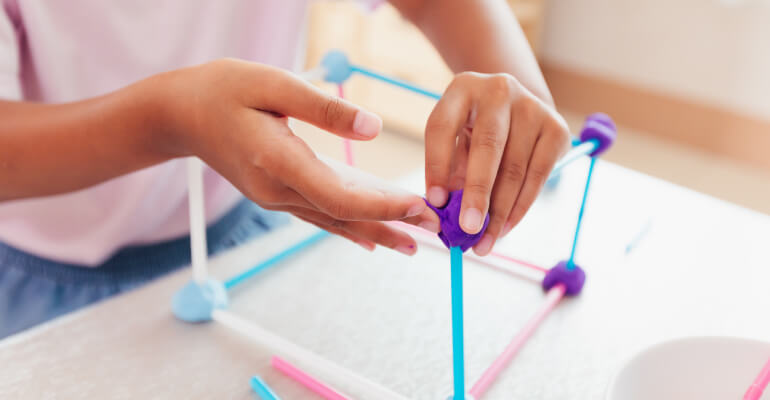
7. Straw Buildings
Create some healthy competition while incorporating key engineering concepts with this middle school STEM activity! Give each student or group a set number of plastic straws plus tape or glue to connect the straws, and challenge them to build the tallest tower possible.
You can tie this lesson into various engineering processes and principles. Ask the students to examine what worked well and what didn’t, and then consider how those principles can be applied to the buildings, bridges, and other structures that surround them everyday.
8. Mini Coding Camp
Put a spin on coding lessons by making it a summer camp theme! This activity can work with any coding program, adding in competitions for different groups of students or overall goals. It can also be supplemented by offline coding activities.
There are many free coding activities available online developed for students, making this STEM lesson easy to implement with minimal work for the educator. Those free online coding programs include offerings from:
- Girls Who Code
- Hour of Code
- CodinGame by CoderPad
Be sure to research extracurricular coding camps in your area and online to share with students who particularly enjoy this aspect of learning STEM.
9. Lemon Battery
A lemon battery is a classic science experience for good reason! This hands-on STEM activity can help students better understand engineering principles as well as the basics of energy.
This project takes a few different supplies, including lemons, a copper coin, zinc electrodes, copper electrodes, lead wires with alligator clips, and a simple LED component. This project can also be done by using a multimeter. Follow the instructions from Science-U to get started.
Did you know that this battery can be recreated with other fruits and vegetables, too? Take the STEM challenge to the next level by bringing in oranges, limes, potatoes, tomatoes, cucumbers, apples, or bananas, and then seeing how those power sources stack up against the lemon.
10. Archimedes Screw
For this STEM project, we go way back into the past, which is perfect for students who love history or to teach alongside a history lesson about Ancient Greece. Be sure to spend time explaining how the Archimedes screw and similar devices still can be used today for tasks like wastewater removal.
The Archimedes screw is a positive-displacement pump that can seemingly defy gravity to move water. You can complete this STEM activity with a few simple materials, including a PVC pipe, vinyl tubing which you will wrap around the pipe, duct tape, two different height surfaces, and water.
Follow the project steps from Scientific American to implement this cool STEM challenge in your classroom.

11. Nature Walk
Similar to the STEM scavenger hunt, this STEM activity can be done in a few different formats, including as a summer activity or on a nice day where you want to get your middle school students out of the classroom. You don’t need to be near a park or large open space to do this, either, as nature crops up all over the place, including in the cracks of sidewalks.
You can set goals to look for on your nature walk, or you can let the students take the lead. The latter can be particularly useful when students are feeling burnt out or after standardized testing, allowing for a bit of a mental break while still focusing on STEM concepts. Most of all, this middle school STEM activity allows students to connect what they learn inside the classroom to the real world.
If you want to look for specific science elements, though, you can provide students with a list, including items like:
- Something with symmetry
- A part of the water cycle
- Certain weather conditions
- An animal’s home (e.g. bird’s nest, beehive)
- A wind measurement from a hand-made anemometer
You can also take this opportunity to clean up any litter and trash in the area, emphasizing the importance of doing our part when it comes to pollution and the environment.
12. Describe Rocks Like a NASA Scientist
No matter where you and your students are based, you’ve definitely had a rock or two dragged into your classroom from the playground or elsewhere. With this STEM activity, your students will look at those rocks and more while envisioning what it could be like to pursue a career in STEM as a scientist.
This lesson comes from NASA’s Jet Propulsion Laboratory . You can start by focusing on the basics of geology and why it matters, and then teaching students how to use the correct scientific terms for the features of different rocks. Those terms include luster, cleavage, vesicles, inclusions, blebs, homogenous, and friable. The NASA lesson also includes two fun quizzes about identifying real rocks and “edible” rocks (images of candy bars to represent the different rock types).
Discover a Complete Middle School STEM Program with Kid Spark Education
While the above middle school STEM lessons are great supplements, a complete STEM education requires a thorough strategy and curriculum, like that provided by Kid Spark Education. Our middle school STEM labs are designed for grades six to eight, with different units focused on different principles.
Our middle school STEM program includes the following units:
- Kid Spark Basics
- Simple Machines
- Compound Machines
- Rapid Prototyping and 3D Printing
- Robotics and Coding 101
- Exploring Sensors
- Loops and Variables
- Integrated Engineering Challenges
A great STEM education is the key to a brighter future for students of all backgrounds, and, at Kid Spark Education, we’re committed to making that education a reality. Our middle school STEM kits include a science-backed curriculum that meets NGSS requirements, reusable engineering and robotic tools, complete lesson plans, and educator tools such as online training, grading rubrics, and step-by-step instructions.
To get started, explore our curriculum library , or contact our team today to learn more about our programs.
Topics: STEM Activities , middle school stem , middle school
Written By Kitty Taylor
Would you like to receive more information about starting a kid spark stem program for your students , go beyond the buzzword with kid spark..
At Kid Spark Education, STEM isn't a buzzword: it's a powerful way to nurture students' natural curiosity; build confidence and skills in science, technology, engineering, and math; and foster abilities in collaboration, problem-solving, and communication. You, their teachers, are our most important partner in achieving our mission of preparing all children for a lifetime of learning about science and technology. The Kid Spark Blog is written by educators, for educators to be a resource in your toolbox so you can feel confident and capable in teaching STEM to your elementary students.
Recent Posts
Post by topics.
- Elementary STEM Education (31)
- STEM Education (31)
- STEM Activities (26)
- Kid Spark Education (10)
- STEM kits (9)
- middle school stem (9)
- STEM mentors (8)
- stem programs (8)
- Preschool (7)
- Professional Development (7)
- curriculum (7)
- STEM classroom kit (6)
- elementary (6)
- middle school (6)
- stem and early childhood (6)
- elementary school (5)
- resources (5)
- 5th grade (4)
- elementary schools (4)
- funding (4)
- learning experiences (4)
- science (4)
- 1st Grade (3)
- 2nd Grade (3)
- 6th grade (3)
- STEM Challenges (3)
- administration (3)
- early childhood (3)
- engineering (3)
- integrating curriculum (3)
- kindergarten (3)
- learning labs (3)
- robotics (3)
- 3d printing (2)
- STEM Identity (2)
- after school stem (2)
- afterschool (2)
- implementation (2)
- mobile stem labs (2)
- reading (2)
- stem math curriculum (2)
- After School (1)
- Computer Science (1)
- best of (1)
- education (1)
- learning (1)
- stem enrichment (1)

- Math for Kids
- Parenting Resources
- ELA for Kids
- Teaching Resources

How to Teach Long Division to Kids in 6 Easy Steps
15 Famous Mathematicians in History That Kids Should Know
11 Best Multiplication Apps for Kids
How to Teach Number Formation in 5 Easy Steps
13 Best Resources for Math Videos for Kids: Math Made Fun
6 Best Alternatives to Public Schooling: A Guide for Parents
How to Cope With Test Anxiety in 12 Easy Ways
Developmental Milestones for 4 Year Olds: The Ultimate Guide
Simple & Stress-Free After School Schedule for Kids of All Ages
When Do Kids Start Preschool: Age & Readiness Skills
How to Teach Letter Recognition in 6 Easy Steps
20 Fun Limericks for Kids
How to Improve Reading Comprehension: Strategies & Tips
40 Best Summer Writing Prompts for Kids of All Ages
12 Best Ways to Teach Rhyming Words to Kids
12 Best Tips for Substitute Teachers
30 Best Classroom Reward Ideas for Elementary Students
12 Best Websites for English Teachers
10 Best Game-Based Learning Platforms for Kids
60 Fun Animal Facts for Kids

50 Best STEM Projects for Middle School Kids
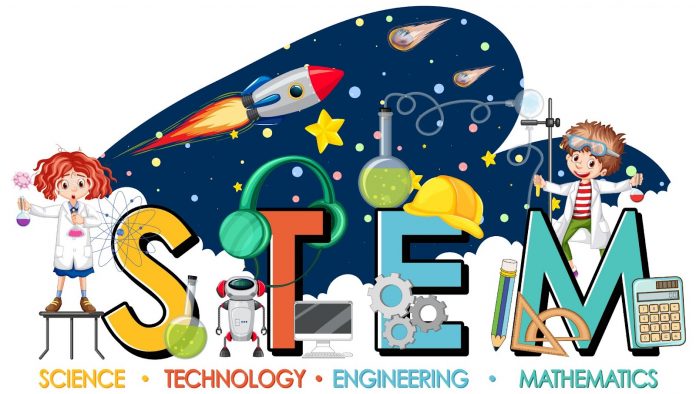
Science Activities for Middle Schoolers
Technology activities for middle schoolers, engineering activities for middle schoolers, math activities for middle schoolers.
- Interactive Learning Stations
- Outdoor Laboratories
- Technology Enhanced Playgrounds
- Innovative Equipment
STEM projects for middle school are an excellent way to engage young minds and spark their curiosity in science, technology, engineering, and math. Research supports that STEM activities positively impact the scientific creativity of middle school students. These exercises give students an enjoyable learning experience and promote critical thinking and problem-solving abilities .
SplashLearn: Most Comprehensive Learning Program for PreK-5

SplashLearn inspires lifelong curiosity with its game-based PreK-5 learning program loved by over 40 million children. With over 4,000 fun games and activities, it’s the perfect balance of learning and play for your little one.
Additionally, middle school STEM programs help foster interest in these subjects, develop skills, improve future job prospects, encourage creativity and innovation, and promote diversity and inclusivity. However, before delving into the exciting projects, it’s essential to understand why STEM programs in middle school are crucial for a student’s academic journey.
5 Essentials Of Middle School STEM Programs
In the modern work market, STEM education has increased. Students in middle school are at a pivotal point in their development, and exposure to STEM education can greatly impact how they grow academically and professionally. The following justifies the necessity of STEM programs in middle schools.
1. Fostering Interest in STEM
Middle school STEM programs offer an interactive and immersive approach to STEM education by providing hands-on opportunities for students to engage in projects and experiments, which can lead to deeper comprehension and enthusiasm for these subjects. The Journal of Pedagogical Research suggests that a STEM-focused learning environment can positively influence academic achievement in science. Moreover, STEM education provides students with practical applications of these topics in the real world, which fosters a heightened curiosity and drive for learning.
2. Developing Critical Thinking Skills
Problem-solving and critical thinking abilities are emphasized in STEM education. Students’ minds are still developing throughout middle school. Thus, STEM education can aid in the development of the abilities necessary for success in the real world.
3. Improving Future Job Prospects
Middle school STEM education can provide students with the essential abilities and skills necessary to pursue high-paying professions in the rapidly-growing STEM sectors of the contemporary economy.
4. Encouraging Creativity and Innovation
Middle school STEM programs have been known to be a catalyst for fostering creativity and innovation among students. This is because these programs equip students with the necessary skills to design, build, and test their projects, which can be quite perplexing. By undertaking middle school STEM programs, children can develop the courage and aptitude to take risks, think outside the box, and solve problems in novel and unexpected ways.

5. Promoting Diversity and Inclusivity
The benefits of STEM education extend beyond just individual development, as it can also promote diversity and inclusivity among students. Regardless of background, all students have equal opportunities to learn and succeed in STEM. By introducing students to a wide range of STEM occupations and showcasing the achievements of underrepresented groups in these industries, middle school STEM programs can inspire kids from diverse backgrounds to pursue their interests in these disciplines.
What Does STEM Education for Middle Schoolers Look Like?

Middle school STEM education is a way of teaching that focuses on science, technology, engineering, and math. It’s exciting and interactive, aiming to help students become skilled in these subjects. The main goal is to give students the knowledge and abilities they need to handle the many challenges of our ever-changing technology-driven world.
“STEM education is not just about learning scientific concepts and principles; it’s about developing critical thinking, problem-solving, and collaboration skills that will benefit students throughout their lives.” – Arne Duncan, former U.S. Secretary of Education.
Students are introduced to the fundamentals of STEM disciplines in middle school through practical, project-based learning . They investigate the scientific method, study the fundamentals of engineering and design, and become aware of the wonders of math and technology.
Middle schoolers can develop critical thinking skills, problem-solving abilities, and creativity through STEM education. Research suggest that STEM activities effectively develop positive views toward interdisciplinary education and 21st-century skills such as creativity, collaboration, critical thinking, and problem-solving. By engaging in STEM activities , students can also improve their science process skills, STEM career interests, motivation, and views about STEM education.
50 Best STEM Activities for Middle School Kids
Engaging in STEM activities for middle school kids, students can gain valuable skills and knowledge that will assist them in success in high school, college, and beyond. So, without further ado, let’s explore these best STEM activities for kids!
“STEM learning is vital for the future success of our students and our country. By engaging students in hands-on projects and encouraging their curiosity, we can inspire the next generation of innovators.” – Mae Jemison, former NASA astronaut and founder of the Jemison Group.

Science is essential to STEM education and can be incredibly engaging and exciting for middle schoolers. Here are some science-related STEM activities for middle school kids that can inspire young minds to discover the world around them.
- Chemical Reactions: Mix baking soda and vinegar to observe the fizzy reaction. Try other combinations like lemon juice and baking soda.
- Solar Oven: Cut a flap in a cardboard box and line it with foil. Place food inside and keep it in the sun to cook.
- Egg Drop Challenge: Gather materials like straws, paper, and tape. Create a protective structure around an egg and drop it from a height.
- Rock Candy Experiment: Dissolve sugar in hot water and grow crystals on a string suspended in the solution.
- Volcano Eruption: Build a clay volcano around a small bottle. Mix baking soda and vinegar inside the bottle for an eruption.
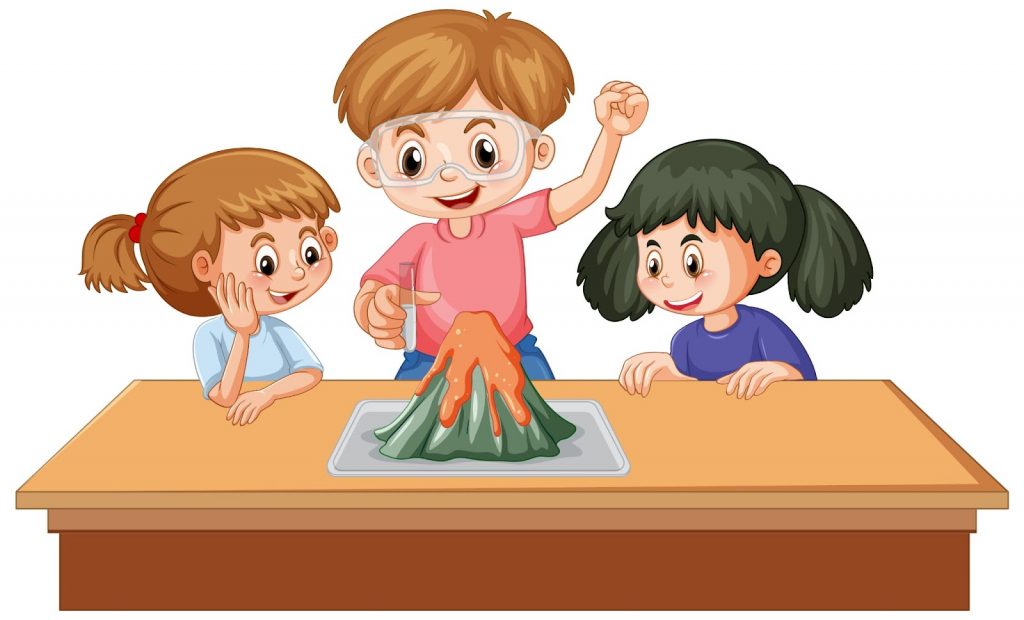
- Hovercraft: Glue a balloon to a CD, then inflate the balloon and place the CD on a smooth surface to create a hovercraft.
- Slime Making: Mix glue, water, and borax solution to create slime. Explore different ratios for varying consistencies.
- Bottle Rocket Launch: Fill a plastic bottle partially with water, then quickly attach a cork and pump air inside to launch the rocket.
- Sundial Crafting: Place a stick vertically in the ground, and mark the shadow cast by the sun at different times of the day.
- Plant Growth Study: Plant seeds in pots with varying amounts of sunlight, water, and soil to observe their growth over time.
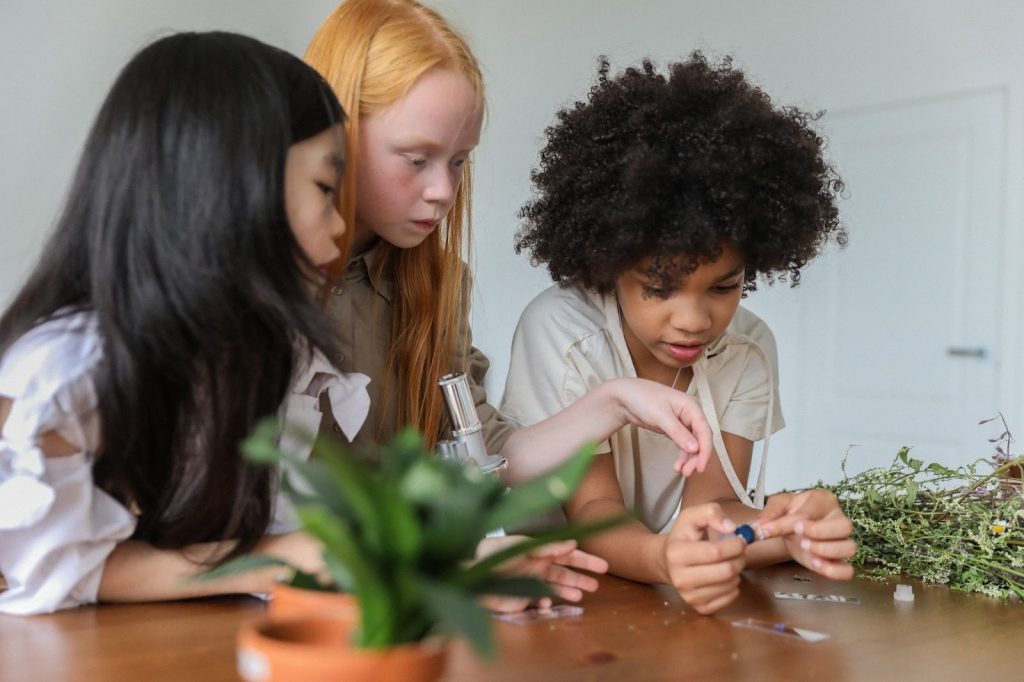
- Static Electricity: Rub balloons against clothing to create static charge. Test its effect on objects like paper and hair.
- Dissecting Owl Pellets: Purchase owl pellets and use tweezers to carefully dissect them, identifying the bones of small animals.
- Microscope Adventures: Collect samples from ponds or leaves, place them on slides, and observe under a microscope to discover tiny organisms.
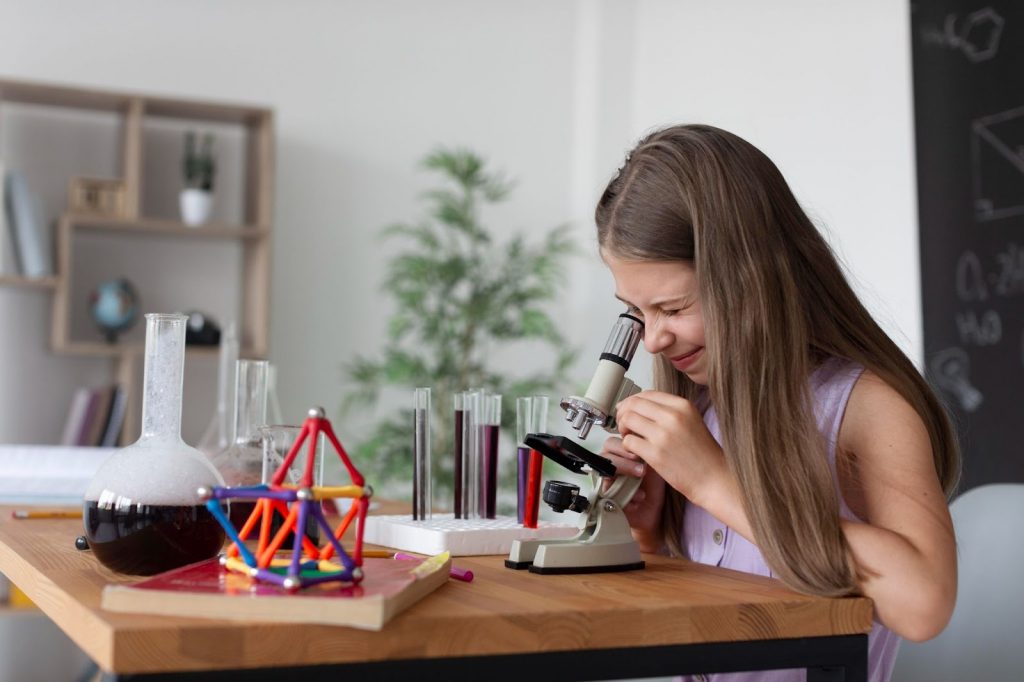
Now that we’ve explored some exciting science-related STEM ideas for middle school kids, let’s look at engaging technology activities to help students develop important coding, programing and digital literacy skills.

Technology activities for middle schoolers are designed to introduce students to coding, programing, and digital design basics. These hands-on activities are a great way to build technical skills while fostering creativity and innovation. Here are a few technology-related STEM activities for middle school kids.
- Coding Basics: Use online platforms like Scratch or Code.org to start learning coding concepts through interactive tutorials and projects.
- Robotics Challenge: Provide robot kits with instructions and coding software. Students follow the instructions to assemble the robot and write code to make it perform tasks.
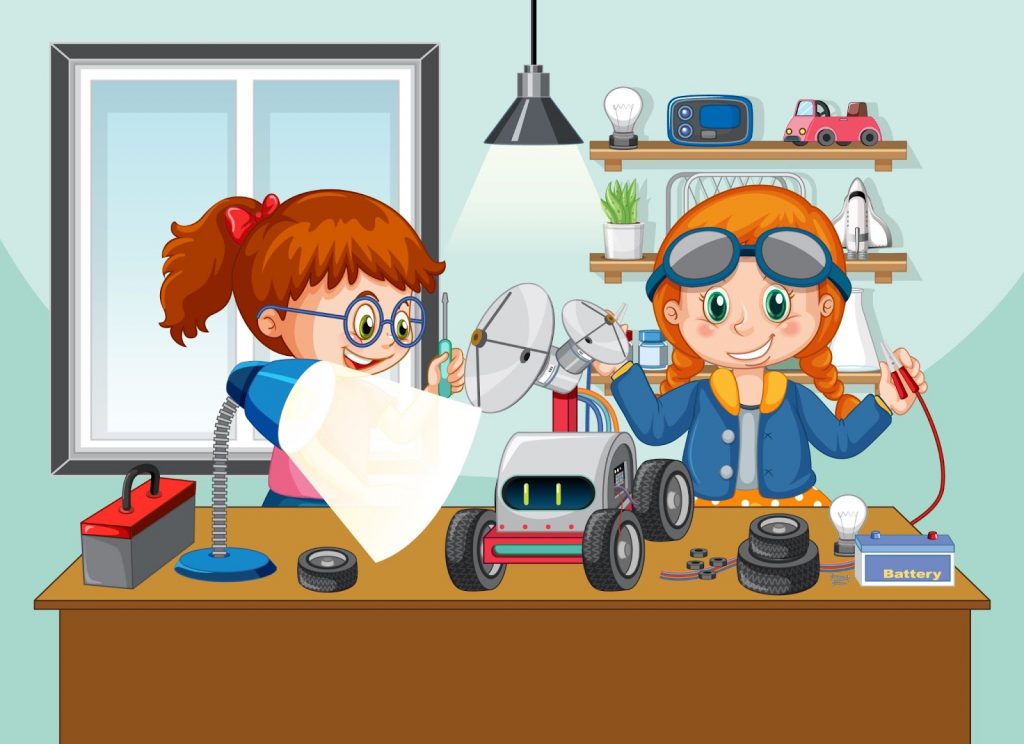
- App Design: Utilize app development tools or platforms like MIT App Inventor to design and prototype mobile apps. Students can create simple apps and explore different features.
- 3D Printing: Teach students how to use 3D modeling software to design objects. Then, print the designs using a 3D printer.
- Website Creation: Introduce HTML and CSS coding languages to build a basic website. Students can experiment with customizing their site.
- Video Game Design: Use game development software like GameMaker or Unity to design and create simple video games with characters, levels, and gameplay.
- Augmented Reality (AR) Exploration: Explore AR technology using AR apps or platforms. Students can create interactive experiences by overlaying virtual objects on the real world.

- Green Screen Projects: Provide a green screen and video editing software. Students can record themselves against the green screen and use the software to replace the background with any image or video.
- Electronic Circuits: Use a circuit kit with components like LEDs, resistors, and wires. Students follow diagrams to build circuits and learn about electronics.
- Digital Storytelling: Use digital tools like PowerPoint or video editing software to create multimedia stories with text, images, and audio narration.
- Internet Research Challenge: Assign specific research topics, and guide students on using search engines and reputable websites to find relevant information.
- Cybersecurity Awareness: Conduct discussions and workshops on online safety, creating strong passwords, and protecting personal information from online threats.
- Virtual Field Trips: Utilize virtual reality headsets or online platforms with virtual tours to take students on immersive journeys to museums, historical sites, or outer space.
Now that we’ve explored some exciting technology-related STEM projects for middle school kids, let’s shift our focus to engineering. These activities are designed to introduce students to engineering and design principles and provide hands-on opportunities to create and build.

Engineering activities are a great way for middle schoolers to explore design principles, problem-solving, and creativity. These activities help develop important skills that benefit students in all aspects of life. Here are a few engineering-related STEM projects for middle school kids that are both fun and educational.
- Popsicle Stick Bridges: Provide popsicle sticks and glue. Instruct students to design and build bridges using the sticks, aiming to make them sturdy enough to hold weight.
- Hydraulic Lifts: Provide syringes, plastic tubes, and water. Students build a hydraulic lift system using syringes and water to lift objects.
- Spaghetti Towers: Offer uncooked spaghetti and marshmallows as building materials. Challenge students to construct tall and stable towers using the two items.
- Water Filtration: Teach students about water filtration concepts. Provide various materials like sand, gravel, and cotton balls for them to build their filtration systems and test their effectiveness.
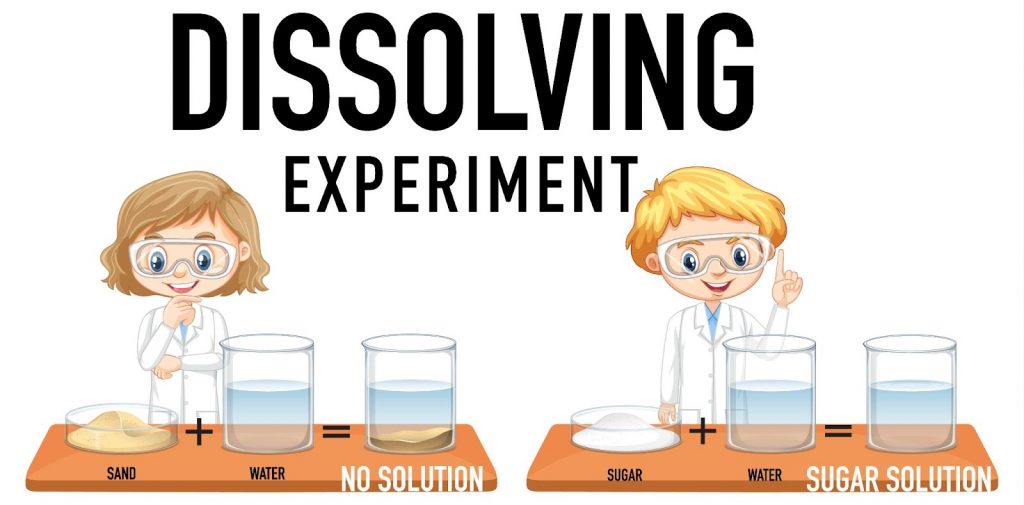
- Egg Parachute Drop: Provide materials like plastic bags, strings, and cushioning materials. Have students construct a parachute to safely drop an egg from a height.
- Catapult Challenge: Gather materials like popsicle sticks, rubber bands, and plastic spoons. Instruct students to build a working catapult and launch small objects towards targets.
- Mini Wind Turbines: Provide students with materials like cardboard, straws, and small motors. Guide them in creating miniature wind turbines to generate electricity from wind energy.
- Simple Machines Exploration: Set up stations with different simple machines like pulleys, levers, and inclined planes. Allow students to experiment and learn how these machines work.
- Sustainable Building Designs: Introduce sustainable building practices to students. Let them design and sketch eco-friendly and energy-efficient buildings or houses on paper.
- Bristlebot Robots: Provide toothbrush heads, small vibrating motors, and batteries. Show students how to assemble these components into tiny robots called Bristlebots that move around.
- DIY Waterwheel: Provide materials like popsicle sticks, cups, and a small water source. Students design and build a waterwheel to harness water energy.
While engineering activities focus on design and problem-solving, math activities for middle schoolers aim to build a strong foundation in mathematical concepts and practical applications. Let’s look at some engaging and hands-on math activities that middle schoolers can enjoy and learn from.

Middle school math activities are made to help kids develop a solid mathematical foundation while also exposing them to real-world applications of mathematics. Through these exercises, students can improve their ability to think logically, solve problems, and appreciate the beauty of mathematics. A few math projects and activities are listed below for middle school students to try out.
- Math Scavenger Hunt: Create a list of math-related items or problems for students to find and solve around the school or outdoors.
- Fraction Pizza: Use construction paper to create “pizza slices,” and have students color in fractions to represent different toppings.
- Math Board Games: Introduce math-based board games like “Math Bingo” or “Math Jeopardy” to reinforce skills in a fun way.
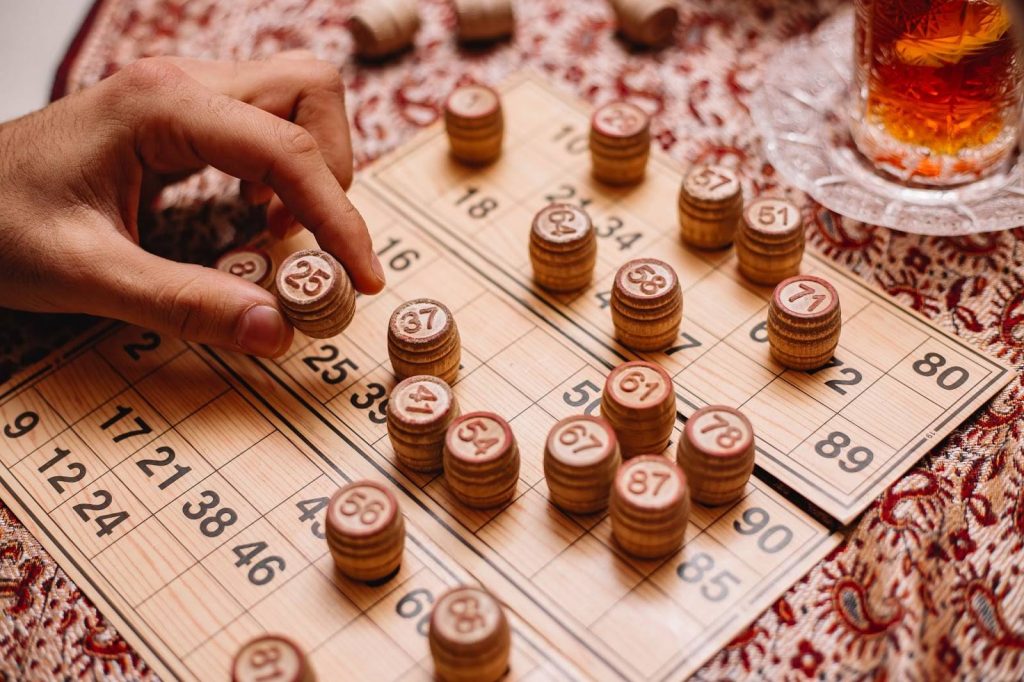
- Math Art: Have students create geometric art using shapes, angles, and symmetry.
- Math Puzzles: Provide various math puzzles like Sudoku, logic puzzles, or tangrams to challenge problem-solving abilities.
- Real-World Budgeting: Assign students a hypothetical budgeting project to plan for expenses like groceries, entertainment, and savings.
- Data Analysis with Graphs: Present students with real data sets and guide them in creating different types of graphs to analyze the information.
- Math Escape Room: Design a math-themed escape room with puzzles and problems that students must solve to “escape.”
- Geometry Construction: Teach students how to use a compass and straightedge to construct geometric shapes and angles.
- Math Relay Race: Divide students into teams and create a relay race with math problems they must solve to pass the baton.

- Mathematical Storytelling: Have students write stories or scenarios that involve math concepts and solve problems within the narrative.
- Measurement Olympics: Set up a measurement-based competition, like seeing who can estimate and measure the length of various objects most accurately.
- Math in Nature: Take students outside to explore the environment and find examples of math concepts like patterns , symmetry, and angles in nature.
Engaging in hands-on learning through math activities and projects can help middle school students develop a deep understanding and appreciation for mathematics. Having explored a variety of fun STEM activities for middle school, it’s worth considering how we can integrate STEM learning into other aspects of a student’s daily experience, including during recess or on the playground.
4 Ways To Integrate STEM Activities Into Middle School Playgrounds
Middle school is a pivotal developmental period for students, marked by a strong desire for knowledge acquisition and exploration. In this phase, students indulge in both physical activity and cognitive stimulation, and incorporating STEM projects for middle school can substantially enhance their educational experience. Thus, it is imperative to investigate why STEM activities should be included in the middle school playground, and one promising answer is through interactive learning stations.
1. Interactive Learning Stations
These learning stations offer a unique opportunity for students to learn while simultaneously enjoying themselves via experiential education. Specifically, students can engage in hands-on activities such as building miniature wind turbines or constructing solar-powered vehicles, which can enhance their problem-solving skills and deepen their understanding of STEM concepts.
2. Outdoor Laboratories
Students may conduct experiments and gather data in outdoor laboratories because they are situated in a natural setting. Weather stations, gardens, and animal habitats can all be included as part of these laboratories. Kids can develop a passion for science and receive real-world experience by participating in these events.
3. Technology Enhanced Playgrounds
The utilization of technology-enhanced playgrounds represents a novel opportunity to combine fitness and STEM activities, thereby improving student engagement in the form of augmented reality activities, interactive displays, and sensory tools. The resultant learning experience is distinctive and enriching. By integrating technology into gardening , students can augment their digital literacy in a enjoyable and educationally valuable manner.
4. Innovative Equipment
Innovative tools can be utilized to design fun STEM projects for middle school that pushes kids to think creatively. Programable robots, 3D printers, and virtual reality headsets are a few examples of this equipment. With the use of this equipment, kids can enhance their creativity and problem-solving abilities while learning more about STEM principles.
The academic achievement, physical health, and general well-being of children can all be dramatically impacted by including STEM activities in middle school playgrounds. By giving children the chance to participate in practical STEM activities, we can help them acquire crucial abilities that will set them up for future success.
Middle school completion is an indispensable prerequisite for reinforcing students’ aptitude and mastery in STEM (Science, Technology, Engineering, and Mathematics). STEM challenges for middle school students are boundless and varied. We must encourage them to face challenges and in order to ensure that students are equipped for future prosperity, we must proffer them with diverting, interactive, and engaging STEM-related activities. Integration of STEM education within the middle school curricula can be accomplished through various methods such as interactive learning stations, avant-garde tools, and outdoor laboratories.
By providing middle schoolers with the best STEM activities, we can encourage and kindle their passion, empowering them to create a better future. Let us, therefore, take the initiative and encourage our schools to allocate sufficient funding toward STEM education. This will help our children realize their full potential and have a transformative impact on the world.
Frequently Asked Questions (FAQs)
Can middle school stem instruction aid pupils with learning disabilities.
STEM instruction can be modified to meet the needs of children with varying learning preferences and aptitudes. All pupils can benefit from the promotion of problem-solving and critical-thinking abilities.
At what age can you start STEM?
STEM education can start as early as preschool and continues through elementary, middle, and high school. Introducing STEM concepts early helps foster curiosity and lays the foundation for future learning and exploration in science, technology, engineering, and math.
Does incorporating STEM activities into middle school playgrounds come with any risks?
When incorporating STEM activities into playgrounds, safety should always come first. It’s critical to correctly identify risks, train staff members and teachers, and maintain equipment.
12 Best Social Skills Activities for Kids of All Ages
12 Best Pattern Activities for Preschoolers in 2024
15 Best Movement Activities for Preschoolers in 2024
- Pre-Kindergarten
- Kindergarten
Most Popular

15 Best Report Card Comments Samples

117 Best Riddles for Kids (With Answers)

40 Best Good Vibes Quotes to Brighten Your Day
Recent posts.

15 Best Fourth of July Crafts for Preschoolers

Math & ELA | PreK To Grade 5
Kids see fun., you see real learning outcomes..
Watch your kids fall in love with math & reading through our scientifically designed curriculum.
Parents, try for free Teachers, use for free

- Games for Kids
- Worksheets for Kids
- Math Worksheets
- ELA Worksheets
- Math Vocabulary
- Number Games
- Addition Games
- Subtraction Games
- Multiplication Games
- Division Games
- Addition Worksheets
- Subtraction Worksheets
- Multiplication Worksheets
- Division Worksheets
- Times Tables Worksheets
- Reading Games
- Writing Games
- Phonics Games
- Sight Words Games
- Letter Tracing Games
- Reading Worksheets
- Writing Worksheets
- Phonics Worksheets
- Sight Words Worksheets
- Letter Tracing Worksheets
- Prime Number
- Order of Operations
- Long multiplication
- Place value
- Parallelogram
- SplashLearn Success Stories
- SplashLearn Apps
- [email protected]
© Copyright - SplashLearn

Make study-time fun with 14,000+ games & activities, 450+ lesson plans, and more—free forever.
Parents, Try for Free Teachers, Use for Free
6 Easy & Fun Activities for Middle School Students to Implement Tomorrow
Click above to listen to podcast episode 55: “engaging classroom activities for middle schoolers“.
There are many fun activities for middle school students that are not only great options but can be used in school, at home, or at after-school activities. Developing engaging classroom activities for middle schoolers which are fun and interesting can help increase the flow of learning, which is always the goal in your lesson plans.
However, we’re not dealing with younger students and sometimes it is difficult for this “too cool for school” age group to find an activity or a fun game that they will engage with . It is hard to find the balance between being too childish and too mature to get to that sweet spot that gets the students excited about participating each day.
Developing engaging classroom activities for middle schoolers can be a challenge, but finding a fun way to excite your middle school students be it in small groups, whole class, a scavenger hunt, class discussions, or even a memory game can help challenge students to engage within the learning process in some of the best ways they don’t even realize they’re doing.
Engagement is so important during these years and grade level since it will influence whether or not they enjoy learning, their perception of school, and most likely whether or not they will continue to pursue further education . Finding effective ways and great ideas for engaging classroom activities for middle schoolers can play a big role in these things.
Don’t forget to check out our feature on Brain Breaks for Middle School , too!
What makes Engaging Classroom Activities for Middle Schoolers intriguing?
We know that junior high is a challenging time for our students; they’re no longer “babies”, but they’re not mature enough yet like our older students are. Those who deal with these students on the daily know that this is a good time to work on concepts like team building or social-emotional learning because they need it at this juncture more than ever. It is a great opportunity to give them a little help becoming older while also emphasizing hard work, time management, and balancing fun activities to further enrich learning.
The secret sauce to developing engaging classroom activities for middle schoolers is finding a classroom activity that appeals to their interest and provides enough challenge for them to learn, but not so much that it becomes too difficult. Finding engaging classroom activities for middle schoolers is a balance of keeping them in a comfort zone that makes them okay with student participation while also giving them something new to grow into. They can be tangible things like classroom games or an interactive graphic organizer as well as experiences that are fun and exciting, but also educational.
It is important to not just look at these students too superficially. Although these older kids may dress differently and act differently than their younger counterparts, they need the same things- attention, care, and help when needed, but mostly it is hearing about how much you care and want them to do well; because giving them the tools to have confidence when they’re having a tough time while stimulating their minds as well is equally as vital for classroom success.
Ultimately, they’re not high school students, so they still have that element of being younger kids and, as we know, can still be so much fun if you give them a great option to shine.
Initiating student engagement as the classroom teacher is the best thing when you know you have your students’ attention and they’re surprised when the end of a class period comes. Imagine finding a way to get them excited about a vocabulary word or current events by using a simple game, short video, or another outside-the-box way to encourage critical thinking. These types of activities can be found anywhere depending on the way you look at them and within your own passion. Your students are going to respond better if the topic interests them, so finding things that do just that will make your job easier, but no less important.
Here are some engaging classroom activities for middle schoolers that will get the students involved in education and participation while learning their ABCs:
ABC’s of What? ABC’s of Anything!
Materials/Resources Needed:
- Poster Board, Chalkboard or whiteboard to project
- Construction paper, markers, and glue to make construction letters
- Black sharpie marker for free-hand writing, although templates could be added if you want. Either way is effective.
This classic game can be utilized with any subject matter.
It is a great way to reinforce any subject matter. It also can be used as a show-and-tell activity. You basically give each kid/student something to talk about and then have them share their “ABCs of” with the class using the black sharpie marker for writing on the whiteboard. This is a very simple activity that can be independent or group work and can actually be used in the school hallways or classrooms (#instant bulletinboard ).
This can be added to the end of any lesson or any number of hands-on activities to reinforce what has been taught and for students that need extra practice or help.
This is a great way to get them excited about learning . They think they are being involved in something out of the ordinary, but in reality, they are just getting extra help and following simple directions.
There is no better feeling than seeing the light bulb go off in their heads. It’s awesome!
Let them Lead
Let your students lead the way with the content and watch how they gain new confidence in their abilities to learn and then teach others what they know.
We know that the best way to learn is by teaching the information to somebody else ; you can turn this concept into a fun classroom game with any subject matter (ie. make it a competition, a time limit contest, etc.)
Given that kids are more likely to follow directions when they understand why you have given them those directions, it is important that they know what it is that they are doing and how it is that you expect them to do it while also having a great time.
For this reason, many activities should have a variety of ways in which you can present them (and they can present them back to you) so that everyone in the class has an opportunity to get everything that you are hoping they get.
Learning how to lead is an important skill that will help in almost every aspect of their life, from choosing friends and deciding what activities they want to engage in, as well as where they want to go or what career path they may want to take.
Through the activities you set for them, they will learn to take control of their learning, which can set them apart from everyone else and give them the skills necessary to do well and be happy in life. This is why student choice and hands-on learning are so vital.
Creating their own questions and answers
Having them write their own questions and answers to tie into the curriculum or real-life situations that they can learn from will help them learn better than having it done for them every day by you. If you do choose this route though, make sure to have someone go over the questions at least one time so that they are answerable.
All throughout the day you are teaching your students. What they don’t know is that these little lessons are building up inside of them and at an unconscious level they are soaking it all up like a sponge , and having them create questions based on content is a great way to see this in action.
You can also have them write out their own ideas about things that you have been covering so far or things that will be coming up in the near future and use those as a review source for a few minutes before moving on to something else. They can then keep them posted in their notebooks or in organized places within the classroom.
One idea that I have used is creating a tip sheet of different times of year that you can put up on the board for all to see. Maybe it’s a tip for Valentine’s Day, or a tip for the 4th of July, etc. It doesn’t even have to be something that you are covering within the lesson plan.
If you can find a way to tie it into what you need to teach them at the moment, then that is even better! These small little tips can help the students to be better prepared and give them a sense of independence. It can even help with respect since you are letting them take on more responsibility for what they learn in your classroom.
At-Home Activities
Have them help with their homework and then have them teach it to a younger sibling who may be having trouble with the same concepts, or a parent who has no idea what it is they do all day in school. It will not only help them understand what they are doing better, but it will also help their younger sibling or parent to feel part of the process and less like “the one who has no idea what is going on”.
Have students help with a project that they have done for school. For example, if you are a teacher, have your students make posters and charts about your lesson or their projects to display in the classroom. If you can have a collaborative relationship with a business professional, I suggest having the students create small posters to hang around the office that define vocabulary words used in meetings or that share strategies that are being discussed in class that could help.
Have them go online and take an assessment to see where they are in each subject, which can be a powerful source of motivation.
Ask the students to pick out some books that explain a certain topic or subject. Have them read the book(s) and then create flashcards for each chapter to review the information from each book.
Have students use YouTube videos, TED talks , a blog post, and other online resources to get more in-depth on a topic they are studying. Flipping your classroom is clutch in making this work really well.
There are so many possibilities that can utilize the time at home in a way that has them “learning by accident”, reinforcing what is going on in the classroom but in a way that isn’t monotonous.
Plan how many activities you plan to execute per day and week
It is important to plan for a number of engaging activities throughout the unit because chances are your students are going to be more engaged with a problem related to what they’re studying. If you have an idea of how to make the subject you’re teaching that week more interesting, it will galvanize your students’ learning.
A great example of this is having them cook or do gardening activities, which are a wider arena of valuable learning experiences. The math involved in cooking and gardening oftentimes has a hidden meaning behind what they’re doing which makes it easier for the student to see what they’re doing and why it matters. Having these kinds of activities planned as often as possible will make sure your students have a better grasp of their subjects.
When you are planning, try using different methods to decide what kind of activities or projects you want to do with the entire class. For example, how have you planned out which activities and subjects to cover? The first thing I do is divide the class into different categories of students and see if their interests coincide with what I want them to know.
If a student shows great interest in cooking or computers, for instance, I want to find a way, even if it’s ever so slightly, to incorporate that into the class. By doing this, you are able to find more uses for your subjects and engage the students further.
The other thing that helps me figure out what projects and activities will keep my students engaged is when I divide them into groups based on how different their interests are. This way I can have them work on projects that cover a topic in which they’re interested and more inclined to study, which then makes learning fun for them (and more entertaining for us to watch).
The last thing I do is plan certain activities for certain days of the week or month. These activities will help me test my students on how well they’ve been learning what they were supposed to do and will help me figure out if I need to go over things again.
Requiring students to show their progress and engagement with certain activities can be really hard for students. Instead of using test scores, try getting them to show their progress by writing about what they’ve learned. For example, telling your students that you’ll be asking them to write journal entries based on certain projects or activities will make it easier for those who haven’t been able to grasp how to do something in class.
I’ve found that the students who are struggling or feel like they aren’t learning anything will find it easier to write about what they learned and used in one of these projects or activities. This way, you can tell which students aren’t grasping how to do something and then allow them to make up for it by doing the journal entry.
If a student isn’t grasping the material because they’re feeling discouraged, this will be a good way to ease their anxieties about schoolwork.
Similarly, you can use this as a way to learn about which students are having trouble and then teach them more in small groups or spend extra time on that project or activity.
To make it easier for a student to write up this journal entry, I recommend sending home the directions ahead of time. This will allow them to know what they’re supposed to go about doing and will make it easier for you when you grade them.
In addition, I recommend that you have the students do these journal entries based on a specific topic or project so that they can be graded the same way. This makes it easier to grade everything and see if they really learned what you wanted them to.
All students learn differently and having them show their progress in different ways is a great way to cater to their needs while also trying to figure out which methods of engagement work best for them. This will help them make progress in their schooling.
Fostering ALL the relationships
The last thing you can do to engage your students is try to get them more involved with each other as well. Survey them about what they think of the subject you’re covering or bring up something they learned from one of their favorite books or how to do something.
Wherever you go, there are bound to be people who have either learned or know someone who has learned the best way to learn something really easily. By finding out what they did while learning, you can use that as a way to let your students learn about something easily.
All you really need are a few decent listening skills to make sure that the student is explaining themselves clearly. Most of the time, these people will get excited about their ability to teach you what they’ve learned and you’ll be able to see how you can apply what they did to your student.
This way, it will be easier for you to find a way to connect with your students on the subject matter that you’re teaching them. They’ll see that they are able to explain things in their own words and this will make it easier to understand what they’re saying and therefore learn the material you’re trying to get them to learn. All this is done by empowering the students to realize they can teach anyone, even you.
As a teacher, I’ve found that my students enjoy hearing other people talk about what they know. When I ask them if they want me or another student in their class to tell us how to do something – they always respond with a resounding yes!
It’s also a good way to get them excited about learning something. If everyone in their classroom is engaged, they’ll be more likely to participate in whatever activity you layout for them in the days ahead.
Stop Driving the Teacher Struggle Bus
Are you struggling with student engagement, apathy, or keeping your class on track?
💫💫 There’s hope! 💫💫
Join my free teacher workshop “ Choosing Choice ” and in just 45 minutes, you’ll craft a practical plan to revitalize your teaching. Discover the magic of student choice in boosting engagement, gain quick implementation ideas, and explore strategies for year-long success.
Unlike overwhelming workshops, my approach guides you in real-time, providing more classroom options, reducing stress, and giving you more personal time.
Plus, you’ll earn a 45-minute professional development certificate and have 7 days of access.
Don’t miss this chance to transform your teaching; click below to secure your spot now!
This article was originally published on July 13, 2021
About the Author: Jenn Breisacher
After moving from a teacher-dominated classroom to a truly student-centered one, Jenn found herself helping colleagues who wanted to follow her lead. In 2018 she decided to expand outside of her school walls and help those out there who were also trying to figure out this fantastic method of instruction to ignite intrinsic motivation in their students. Read more about her journey with Student-Centered World at studentcenteredworld.com/about
You May Also Like
Backward design for lesson planning and learning, student-led learning: empowering classrooms for all, the best practical teacher workshop options for empowering educators, the teacher treasury.
Thank you for sharing this article! I agree with letting them lead because as middle school students, this will instill a sense of responsibility that they are liable for each other’s learning.
Absolutely! This is the power of student-led learning and what is working best for the generation of students we currently have in the classroom.
Sandra N Dobesh
Hi, thank you for sharing how students can take the lead to learn together. I am subbing special ed math for grades 6, 7 & 8 in the same period and would like the students to enjoy learning for life. It’d be great to engage them in a fun math project while practicing math. I’m interested in your site.
Leave a Reply Cancel reply
Your email address will not be published. Required fields are marked *
The Ultimate Guide to Hands-on Learning Activities for Middle School
Using hands-on learning activities is the best way to get and keep middle school students engaged and to help them learn. My favorite subjects to add projects to are middle school geography , history, and science.
As children move through the middle school years they begin to think more critically and ask many “why” questions. It is not enough to read a fact in a book, they want to test theories and explore possibilities for themselves and hands-on learning activities help to achieve that goal.
Middle school students are also becoming more independent learners. Often they can complete hands-on learning activities with little help from adults. Learning to follow directions and working through a problem in a step-by-step fashion are important skills to develop at this age.

With the help of our friends we have gathered many wonderful hands-on learning activities for middle school students in the areas of Art, Field Trips, History & Geography, Language Arts, Life Skills, Math, and Science.
Hopefully this list will be a resource you can refer back to whenever you’re looking for an interesting project to enhance your learning.

This post contains affiliate links.
Table of Contents
Art Project: Canopic Jars
Art Project: Tomb Walls – Combine Art and History!
A Study of Van Gogh
Celebrating Spring with Chalk Art
Chalk Pastels Art
Cherry Blossoms in Porcelain Vase Art Project – Asian Theme Art Lesson
Chuck Close Portraits
Create a Stained Glass Rose Window
Everything You Need for a Cezanne Study
Fruit and Veggie Art – Examine positive and negative shapes in a piece of fruit or a veggie
Independent Art Project: Wassily Kandinsky
Learning About Perspective Part I
Learning Art History With Home School In The Woods
Mix Monochromatic Colors!
Studying Baroque Music with SQUILT
Studying the Masters with Mixed Media
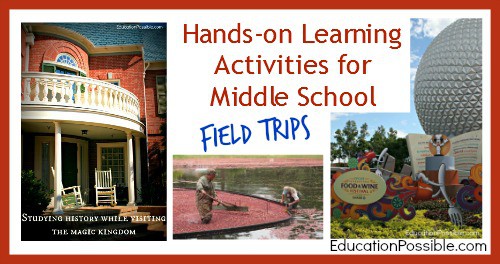
Field trips
6 Things My Older Kids Enjoy at LEGOLAND Florida
7 Places to Homeschool Away From Home in Central Florida
Bring Science to Life at the Aquarium
Digging Up Some Fun at Dinosaur World
Five Reasons to Visit Bok Tower Gardens
Learning at Epcot’s Behind the Seeds Tour
Learning at Epcot’s Food & Wine Festival
LEGO Store – So Much to Explore
Literature Lessons from Disney’s Magic Kingdom
Meet African Animals at Disney’s Animal Kingdom
Meet the Manatees at Blue Springs State Park
Studying History While Visiting the Magic Kingdom
Sweet, Tart Cranberries
Washed Ashore: Art to Save the Sea
What Older Kids Can Learn at the Epcot Flower & Garden Festival
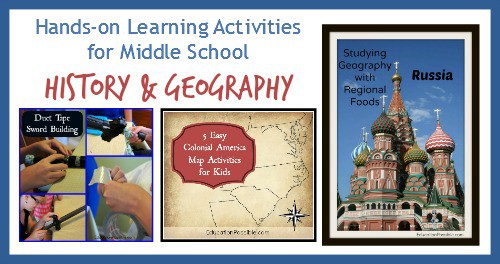
History & Geography
5 Easy Colonial America Map Activities for Kids
6 Covered Wagon Learning Activities
Ben Franklin: Inventions and Hands-on History
Build an Edible Ancient Temple
Building Geography Skills with Topographic Maps
Colonial Games for Children
Discover the 13 Colonies Notebooking and Activities
Do the Preamble (Un)Scramble
Draw Your Own Cartouche: Personalized Hieroglyphics
Duct tape warfare
First Battle of Bull Run
Geography Activities: Atlas Scavenger Hunt
Geography Challenge – Boarders, Countries & Continental Drift
Great World War II Projects You Can Build Yourself
Have Fun with American Heroes: Activities, Projects, and Fascinating Facts
Historical Cooking: Native American Corn Recipes
How to Use American Girl to Study History
Korean War lesson plan
Latitude and Longitude Scavenger Hunt
Make a Seven Wonders of the World Brochure
Make Civil War Hardtack
Medieval Fashion: Peasant Girl
Mummifying a chicken
North Star Geography
Paper Soldiers and Wargames from Junior General
Play Minecraft
Re-enact History with Duct Tape
Road to Independence – How far did the American delegates travel to sign the Declaration of Independence
Social Studies Actual Size
Spanish American War
Spice Up Your Geography Lessons With Regional Foods
Study the American Revolution by Combining Art and History
Studying Geography with Regional Foods: Russia
The Civil War For Kids: A History With 21 Activities
Time Travelers History Study Series Review
Why did the United States enter the Vietnam War
Victory in Europe
What caused World War 1
Write Mythological Mad Libs
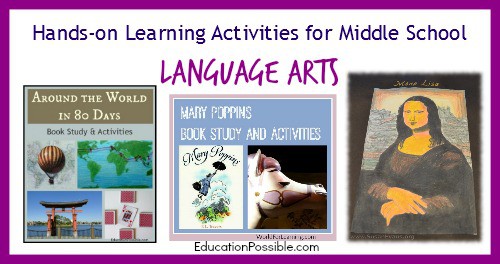
Language arts
A Midsummer Night’s Dream Poem
Activities & Projects to Honor Hans Christian Andersen
Around the World in 80 Days – Book Study & Activities
Biography Report Form
Cause and Effect Card Game Activity
Compare and Contrast – Diagram a Story
Free Literature Resources for Great Classics!
Fun Family Activities for Mr. Popper’s Penguins
Having Fun With the Penderwicks
The Hobbit – Study While Playing Minecraft
How to Write a Detailed Procedure
Macbeth Poem for Kids
Make a Travel Diary – Practice writing skills on a family vacation
Making a Diorama of Dante’s Inferno
Mary Poppins Book Study and Activities
Ode to the Mona Lisa
Peter Pan – Learning Activities
Play Minecraft and Join Your Favorite Books
Robert Frost Study art, resources, rhyme scheme, poetry notebooks
Romeo and Juliet Poem for Kids
Shakespeare: facts, resources, trips, cake
The Secret Garden Book Study & Activities
World Study Guides for Classic Literature
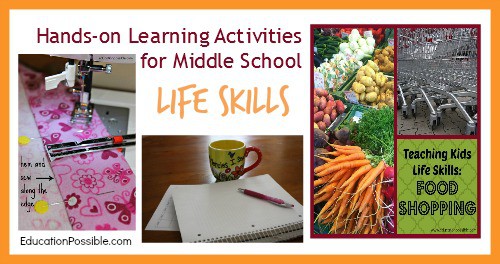
Life skills
6 Life Skills for Teens
Bridge Builder Instant Challenge ~ Logic for Kids
Building Life Skills with FIRST LEGO League (FLL)
Goal Setting for Teens
Make a Sequence Sandwich – Learn to decipher directions and practice sequencing
Setting Fitness Goals
Spring Cleaning Science
State the Pros and Cons by Hosting a Mock Debate
Teaching Kids Life Skills: Food Shopping
Teaching Kids Life Skills: Goal Setting
Teaching Kids Life Skills: How to Tie a Necktie
Teaching Kids Life Skills: Managing Schedules
Teaching Kids Life Skills: Money Management
Teaching Kids Life Skills: Sewing
Teaching Kids Life Skills: Thank You Notes
Teaching Kids to Cook ~ Epcot Food & Wine
Teaching My Kids About Meal Planning Was “Easy as Pie”
Teaching Values through Service and Leadership
Weekly Homeschool Planning Meeting with Multiple Ages
What Our Kids Can Learn From Famous Inventors – The Benefits of Making Mistakes
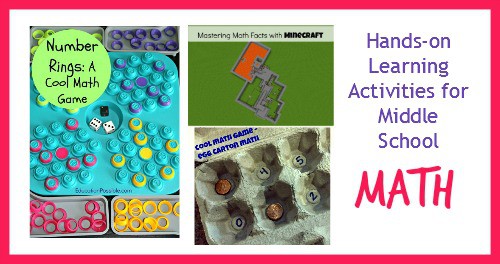
50+ Math Games
Hands-On Math: Graphing Fun
Life of Fred Played in Minecraft
Living Math: A Round-up of Resources
Math Projects: 50 Hands-On Projects that Correlate to Specific Math Concepts, Grades 5-8+
Number Rings: A Cool Math Game
Real-Life Math : Grocery Store Challenge
Simple Game for Building Mental Math Skills
Three Games You Can Make in Five Minutes

Amoeba Cake
Build an Atom with Candy
Build a Potato Cannon to learn the principle of Boyle’s Law
Easy Science Projects for Studying Friction
Encouraging Girls in STEM
Engineering Science with the World’s Tallest Buildings Unit Study
Experiment with Magnetism: Make a Hanging Compass
Explore Genetics by Finding Family Traits
Exploring Alternative Energy: Hydroelectric Dams
Extract DNA from Spinach
Food Web Activity
Freezer Bubbles, An Easy Science Experiment
Geology Rocks! Learning about Rocks and Minerals
Groovy Science Activity – Make Your Own Lava Lamp
Groundwater Experiment
Gumdrop Structures Engineering Challenge
Hands-on Activities for Weather
How Do Oil Spills Harm Wildlife?
How to Make a Tornado in a Bottle
How to Make an Edible Cell Model
Lego Bacteria
Make a Molecule
Raising Butterflies
Science Activities to Learn About Levers
Science Logic Curriculum
Simple Science: Catapults and Trajectory
Spin the Bucket: A Centripetal Force Experiment
Spring Scavenger Hunt
Stored Energy
Supercharged Science
The Lab Report – Making A Polymer Ball
You Can Order Live Amoebas!
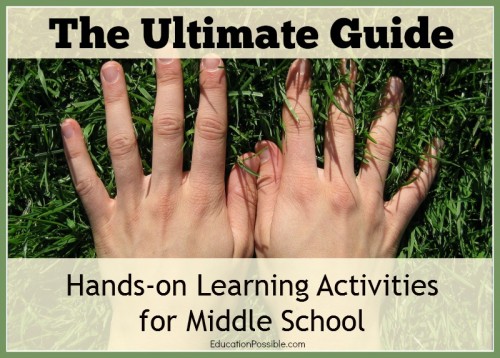
Blogs, Link-ups & Online Resources
Be sure to check out our favorite online resources for middle school hands-on learning:
Adventures in Mommydom
Blog, She Wrote
Eva Varga (aka Academia Celestia)
Our Journey Westward
Starts At Eight
Susan Evans Hands-on Learning
The Homeschool Scientist
The Usual Mayhem
Weird, Unsocialized Homeschoolers
At Curriculum Choice you will find an Ultimate Guide to Choosing Middle School Curriculum by the review authors. The authors at the Curriculum Choice have many, many years of experience teaching middle school between them. They’ve joined together to help you feel confident teaching middle school, too! The following are some of the many middle school reviews our Curriculum Choice authors have written. You’ll enjoy learning more about the plethora of resources available to you as you teach 6th-8th graders!
Homeschooling Middle School with Pinterest
16 Middle School Homeschool Blogs You Should Be Following
Middle School & High School Online Homeschool Communities
16 Comments
Thank you so much for including a couple of our resource posts. Pinning this guide to our Middle School Homeschool Board. Needing it in the next year or 2!
Thank you Thaleia for your great resources!
WOW, Susan, this is an epic post. I’ll say it’s indeed the Ultimate guide. Thanks for putting it together. Will share around 🙂 Just wonderful!
Thank you Meredith! It was fun to pull this together and my kids are thrilled with all of these new ideas!
Well, I will be coming back to it many times I am sure 🙂
Just hopped over from the linkup. Hooray for this awesome list of resources! Got it pinned 🙂
What a GREAT resource!!!!!!! Thanks for sharing on the after school linky!
Wonder list. I’m knee-deep in homeschooling my third middle schooler, with four more coming behind. I love/dread these years as I’ve found them to be not-little but not-big for both the Momma and the student, which can be a tricky balance! Trying to grab on to the joy and not grit my teeth and wait for the high school fun! Lol
Pinning! Thanks for sharing our art project. 🙂 We just finished another Art From History piece, but it’s not up on the blog yet.
- Pingback: Assessing our School Year and Looking Ahead plus Hearts for Home Blog Hop - Apron Strings & other things
I’m a firm believer in hands-on learning – experience is the best teacher! Love this list of resources and ideas – thank you so much for putting it together. I’m featuring it today on the Hearts for Home Blog Hop:)
- Pingback: Spring Kids Activities, Middle School Projects, + More: Ultimate HOMESCHOOL Pinterest Party! | Free Homeschool Deals ©
Such a great list!
- Pingback: Homeschool Curriculum Choices by Grade
- Pingback: Homeschooling Middle School vs. Elementary School | Free Homeschool Deals ©
- Pingback: Middle School Geography
Comments are closed.
ESL Activities
ESL Games, Activities, Lesson Plans, Jobs & More
in Listening · Speaking · Writing
Fun Activities for Middle School Students: Games & Lesson Ideas
If you’re looking for some fun games for middle school students, you’re definitely in the right place. Keep on reading for all the classroom games for middle school that you could possibly need!
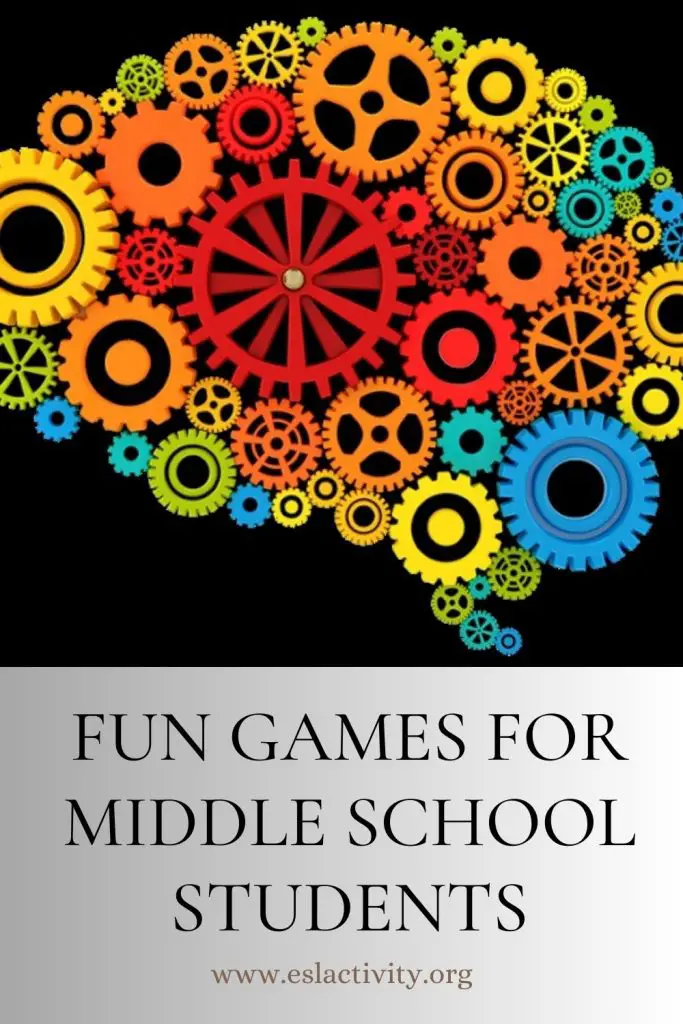
Fun activities for middle schoolers
Fun Games and Activities for Middle School Students
Let’s get into the games for middle schoolers to try out. They are challenging, engaging, interactive and can be used for variety of topics and situations.
#1: Charades
I’m sure everyone has played charades before. You have to act out some words or phrases for your team who has to get what that word or phrase is. My middle school students really enjoy this game and I’m sure yours will as well!
#2: Apples to Apples With Middle Schoolers
Check out this fun vocabulary game. You can make your own deck, or have a look for the actual game. It’s easy to find in any store, or on a place like Amazon . Either way, it makes a really nice activity and the best part is that it’s at least partly educational!
#3: The Line-Up Game
This is a fun game for middle school that is a serious test of teamwork. Have a look here for all the details:
Line-Up Game .
#4: Would You Rather Questions for Middle School Students
Have some fun with this middle school life activity:

- Amazon Kindle Edition
- Bolen, Jackie (Author)
- English (Publication Language)
- 81 Pages - 12/19/2022 (Publication Date)
#5: Concentration
Try out this fun game that is a serious test of memory!
Concentration Game .
#6: Two Truths and a Lie
#7: Riddles
Who doesn’t love a good riddle, right? Here are some of the best ones (with answers!).
Riddles for Kids .
#8: Triva for Middle School Students
A nice option for middle schoolers is to do some trivia. Here are a few options:
Country Trivia
Human Body Trivia
Language Trivia
#9: 20 Questions
This game is a nice option if you have a few spare minutes at the end of class and need to kill some time. Choose a secret thing and students can ask yes/no questions to figure out what it is. My rule is that a guess counts as a question as well to prevent random guessing.
#10: A to Z Game For Middle School Students
Try out this quick game for a nice warm-up activity:
#11: Pictionary
Pictionary is very similar to charades, except that you have to draw the word or phrase, instead of acting it out. It makes a really nice activity for this age group. Try it out!
#12: Name 5
This is a simple race game. Put students into pairs and tell them to, “Name 5 _____.” (sweet breakfast foods, sports that use a stick, popular vacation destinations, etc.). The first team to write down 5 things can put up their hand and the teacher can check.
#13: Password
Have some fun with vocabulary. This game requires students to work in teams and give hints about secret words. Try it out:
Password Game .
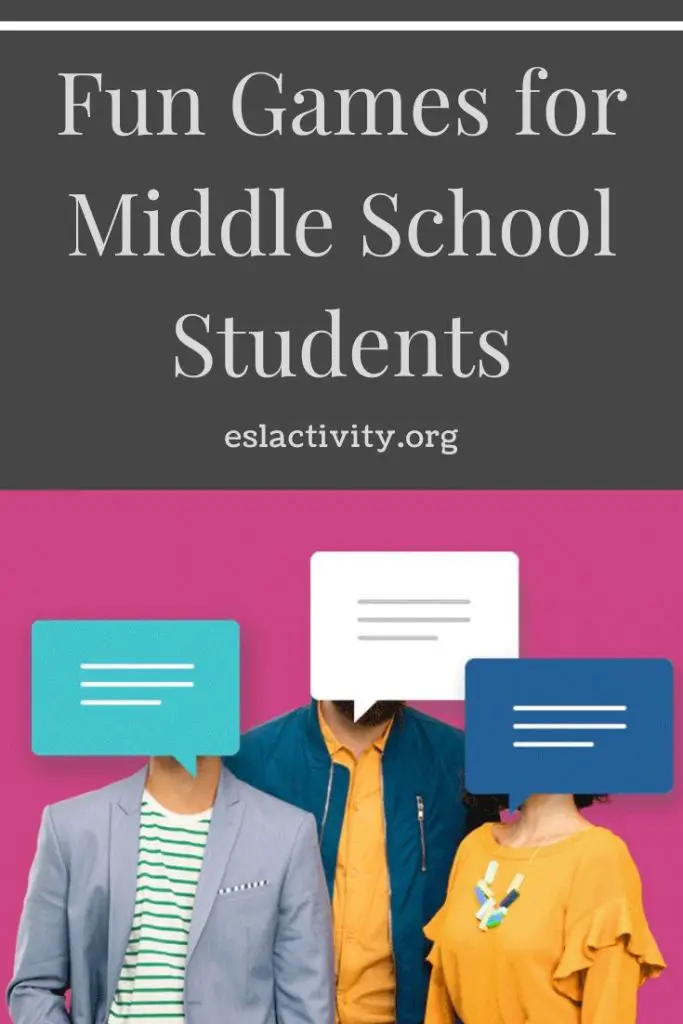
Fun middle schooler activities and games
#14: What Am I? Middle School Game
You may have played this game at a party before. Write down some famous people, animals, things, etc. on Post-it notes. Then, put one one each student’s back. They have to circulate around the class, asking yes/no questions to their classmates to try to figure out who or what they are.
#15: Have a Debate with Middle School Students
Middle school students have strong opinions about almost everything! Have a look here at some of the best things to talk about:
Simple Debate Topics .
#16: The Memory Circle Game
Check out this challenging memory game that can be used for a variety of topics.
#17: Math Riddles
If you want to have some fun with middle school math, have a look at some of these riddles:
Math Riddles with Answers .
#18: Word Origins

- 108 Pages - 01/18/2023 (Publication Date) - Independently published (Publisher)
My students love learning about the origins of common idioms and phrases. Try it out with yours!
#19: Draw This! for Middle School
Try out this simple activity that focuses on communication skills. Put students into pairs and find a picture of something. One student faces the picture and has to describe it to their partner who can’t see it. Compare the end results with the original version.
#20: Sports Vocabulary Quiz
If you have a sporty class, check out this fun vocabulary quiz. It’s challenging, interactive and a nice way to have some fun with your students.
#21: Scattergories
Give students a list of categories (e.g., animals, food, countries) and a letter of the alphabet. They have a limited time to write down words that fit each category starting with that letter. The goal is to come up with unique answers that others may not have thought of.
#22: Kahoot
Create interactive quizzes using the Kahoot platform or other similar quiz-making tools. Students can compete individually or in teams, answering questions on various subjects. It’s engaging and provides opportunities for learning and friendly competition.
Give students a word, and they must describe it to their classmates without using certain “taboo” words. It helps develop vocabulary, communication skills, and critical thinking.
#24: Balloon Pop Relay
Divide students into teams. Each team must race to pop balloons by sitting on them or using other creative methods. It’s a high-energy game that encourages teamwork, coordination, and friendly competition.
#25: Spelling Bee
Organize a spelling competition where students take turns spelling words aloud. Start with easier words and gradually increase the difficulty. It’s a fun way to improve spelling skills and build confidence.
#26: Scavenger Hunt
Create a list of items or clues that students must find within a designated area. It can be done indoors or outdoors. Scavenger hunts promote problem-solving, teamwork, and critical thinking.
#27: Minute to Win It Challenges
Set up a series of short, timed challenges using everyday objects. For example, students must stack cups into a pyramid, transfer objects with chopsticks, or complete other fun tasks within one minute. It’s fast-paced and encourages creativity, dexterity, and quick thinking.
FAQs for Fun Middle School Games
There are a number of common questions that teachers have about making class fun for middle schoolers. Here are the answers to some of the most popular ones.
What are some fun activities for middle school students to do in class?
- Team-based trivia games, where students compete in groups to answer questions.
- Hands-on science experiments or demonstrations to make learning interactive.
- Creative writing exercises, such as storytelling or creating their own comic strips.
- Role-playing activities or simulations to engage students in real-life scenarios.
- Collaborative art projects, such as mural painting or creating a class collage.
How can I make math class more enjoyable for middle school students?
- Incorporate math games and puzzles to make learning more interactive and engaging.
- Use real-life examples and applications of math concepts to show their relevance.
- Provide opportunities for group work and collaborative problem-solving.
- Introduce hands-on activities that involve measuring, constructing shapes, or using manipulatives.
- Gamify math lessons by using online math platforms or creating a points/rewards system.
What are some fun physical education activities for middle school students?
Organize team sports like basketball, soccer, or volleyball tournaments. You can also set up obstacle courses or relay races to promote physical fitness and teamwork. Consider offering dance or Zumba classes to make exercise enjoyable and enhance coordination.
How can I make history class more engaging for middle school students?
You can make history class more interesting by conducting debates or doing mock trials to encourage critical thinking and understanding of historical events. You might also ceate interactive timelines or historical dioramas to visualize historical periods.
What are some fun activities for middle school students to do during breaks or downtime?
- Set up a board game corner with a variety of games for students to play.
- Create a reading nook with a selection of age-appropriate books and magazines.
- Provide art supplies for drawing, coloring, or crafting activities.
- Encourage students to engage in physical activities, such as jumping rope or playing with a soft ball.
- Have a designated “brain break” area with puzzles, brain teasers, or Sudoku for mental stimulation.
Fun Activities for 8th Graders
There are many fun activities for 8th graders that can be both fun and educational. Here are some ideas:
STEM Challenges : Designing and building structures, creating simple machines, or conducting science experiments.
Creative Writing : Writing short stories, poems, or scripts for skits.
Debates : Discussing and debating current events or ethical issues.
Art Projects : Painting, drawing, or sculpting.
Historical Role-Playing : Acting out scenes from history or famous literature.
Team Sports : Organizing games like soccer, basketball, or volleyball.
Community Service : Volunteering for local organizations or participating in clean-up projects.
Math Games : Playing math-related games to reinforce concepts.
Book Clubs : Reading and discussing books as a group.
Science Fair : Conducting experiments and presenting findings.
These activities can help students develop various skills while having fun and interacting with their peers.
Middle School Activities: Join the Conversation
Do you have any fun middle school activities that you’d like to recommend? Leave a comment and let us know. We’d love to hear from you.
Last update on 2022-07-17 / Affiliate links / Images from Amazon Product Advertising API
About Jackie
Jackie Bolen has been teaching English for more than 15 years to students in South Korea and Canada. She's taught all ages, levels and kinds of TEFL classes. She holds an MA degree, along with the Celta and Delta English teaching certifications.
Jackie is the author of more than 60 books for English teachers and English learners, including Business English Vocabulary Builder and 39 No-Prep/Low-Prep ESL Speaking Activities for Teenagers and Adults . She loves to share her ESL games, activities, teaching tips, and more with other teachers throughout the world.
You can find her on social media at: YouTube Facebook Pinterest TikTok LinkedIn Instagram
Top Selling ESL Activity Book

As an Amazon Associate, I earn from qualifying purchases.
More ESL Activities and Games
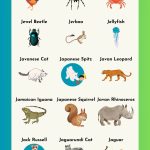
Animals that Start with J | Names, Pictures, Fun Facts

ESL Transportation Games, Activities, Lesson Plans & Worksheets

ESL Websites for English Teachers: Top 25 Resources

Thanksgiving ESL Activities, Games, Worksheets, Lesson Plans
About, contact, privacy policy.
Best-selling author and English teacher Jackie Bolen has been talking ESL activities and games since 2015. The goal is to bring you the best ideas, lesson plans, and activity recommendations for your TEFL classes.
Get in touch: About + Contact
Privacy Policy and Terms of Use
Email: [email protected]
Address: 2436 Kelly Ave, Port Coquitlam, Canada

- Our Mission
3 Ways to Keep Middle School Students Engaged
Tweens and teens may struggle to stay on task throughout a class period, and teachers can use these ideas to help them focus.

With the start of the school year well underway, you may notice the enthusiasm of some of your students starting to wane. The newness and sparkle of things aren’t there, and routines are more or less established. While, in the ideal world, your class is humming along without a hitch, and all the kids are totally engrossed in their learning, we live and teach in the real world, so you might notice some students starting to lose interest and motivation.
Luckily, there are ways to combat complacency in the classroom. One of the easiest ways to keep students engaged is to make sure that they are the ones doing the work. As teachers, we’ve been to school; we’ve learned how to read, write, synthesize information, and tackle tough math problems. Our job isn’t to show off our knowledge; it’s to get students to find power in learning and show off what they have learned.
1. Less Teacher Talk
One of the most crucial parts of my job as an English language teacher is actively engaging my students in their learning. To acquire the confidence to use a new language, you need to practice and be involved in the learning process. When I was first learning how to teach, my mentor told me that one of the things she always pays attention to is who is doing most of the talking in the class. In many classes, the teacher’s voice is the dominant one, but in many of the best classes, students are the ones who hold the floor.
Recently, I was teaching a riveting lesson on First Amendment rights when I took stock of the classroom. Out of 18 students, at least 10 of them had their heads down, and I could have sworn that I heard some starting to snore. I knew it was time for me to stop talking and for my students to become the driving force behind the lesson. It was clear that more talking wasn’t going to equal more learning. I’ve learned a few tricks that I use to pull my students back to planet Earth when I see them starting to fade away into boredom.
One way to make sure your voice isn’t the dominant one is to set a timer and not allow yourself to talk for more than four minutes without meaningful student input. Giving kids many opportunities to share their thoughts not only increases engagement but also helps them process information—for example, in the case of the First Amendment rights, questions like “What would life be like if you lost your freedom of speech? Would you miss being able to express yourself with your words or with your actions more?” By listening to their conversations, you as the teacher can get a good understanding of who is taking in information and who might be zoning out.
2. Get Them Moving
One of the things that have kept me in the classroom teaching is my disdain for meetings and sitting for long periods of time. Sometimes when I’m in meetings, I can feel the life force just leaving my body, and I know that many of my students feel the same when they sit through long classes. I try to build movement into most of my lessons.
In the case of the First Amendment lesson, I had my students act out each of the five rights guaranteed by the amendment. They were thrilled when I told them they could take out their cell phones and pose for a picture to demonstrate their freedom of speech. They laughed and came up with great poses when they gathered together to demonstrate their right to peacefully assemble. They were excited when someone created a petition for better food in the cafeteria, and all eagerly signed it.
When I got my students moving, they were able to interact with material in a meaningful way. While movement is good for almost all kids, for English language learners, it can help create new pathways and make learning more tangible and help connect to past experiences.
Another great way to incorporate movement into the classroom is with reader’s theater. With ChatGPT, it is so easy and quick to create scripts that are at your students’ reading level and specific to the exact standards you are teaching. After my students have some basic background information on a subject, they often revel in the chance to do a reader’s theater. With my English language learners, this is a very effective strategy because it incorporates crucial speaking skills into the lesson and lets their creativity shine and gets them moving! Benjamin Franklin wasn’t lying when he said, “Tell me and I forget. Teach me and I remember. Involve me and I learn.”
3. Provide Choice
In middle school, many kids want to show that they are capable of making decisions for themselves, and many students don’t necessarily like being told what to do. Offering choice is an effective way to increase engagement. While not every child is an artist or actor, every one of them has talents and unique interests, and if we can tap into them, it can be a game changer.
In civics, once kids have the chance to talk about their learning and physically engage in it, then I provide opportunities for choice in showing the class all that they have learned. In the case of the First Amendment rights, students were given choices. They were able to write fictional stories about a dystopian society where our rights were taken away; they could also build sets with Legos depicting our rights or create posters, skits, and songs showing what they learned.
While the end products looked different, the content was the same. The mastery of learning was evident, or not, and you weren’t coaxing a child to do work that was uninteresting. Although there are times when you can’t provide choice, the more we can provide students with a variety of ways to integrate their learning in meaningful ways, the more engaged they will be.
Keeping our students engaged doesn’t mean that the teacher is putting on a show or creating a daily circus. As a matter of fact, one of the best ways to improve engagement is by taking a step back and letting the kids take center stage. When you do this, you’ll find that you are saving energy, and the flow of the class is better. When we meet kids where they are and task them with showing us what they know, the results can be inspiring.
- Grades 6-12
- School Leaders
Don't Miss the Grand Prize: A $2,500 Office Depot/OfficeMax Card!
65+ Real-World Project-Based Learning Ideas for All Ages and Interests
Find and implement solutions to real-world problems.
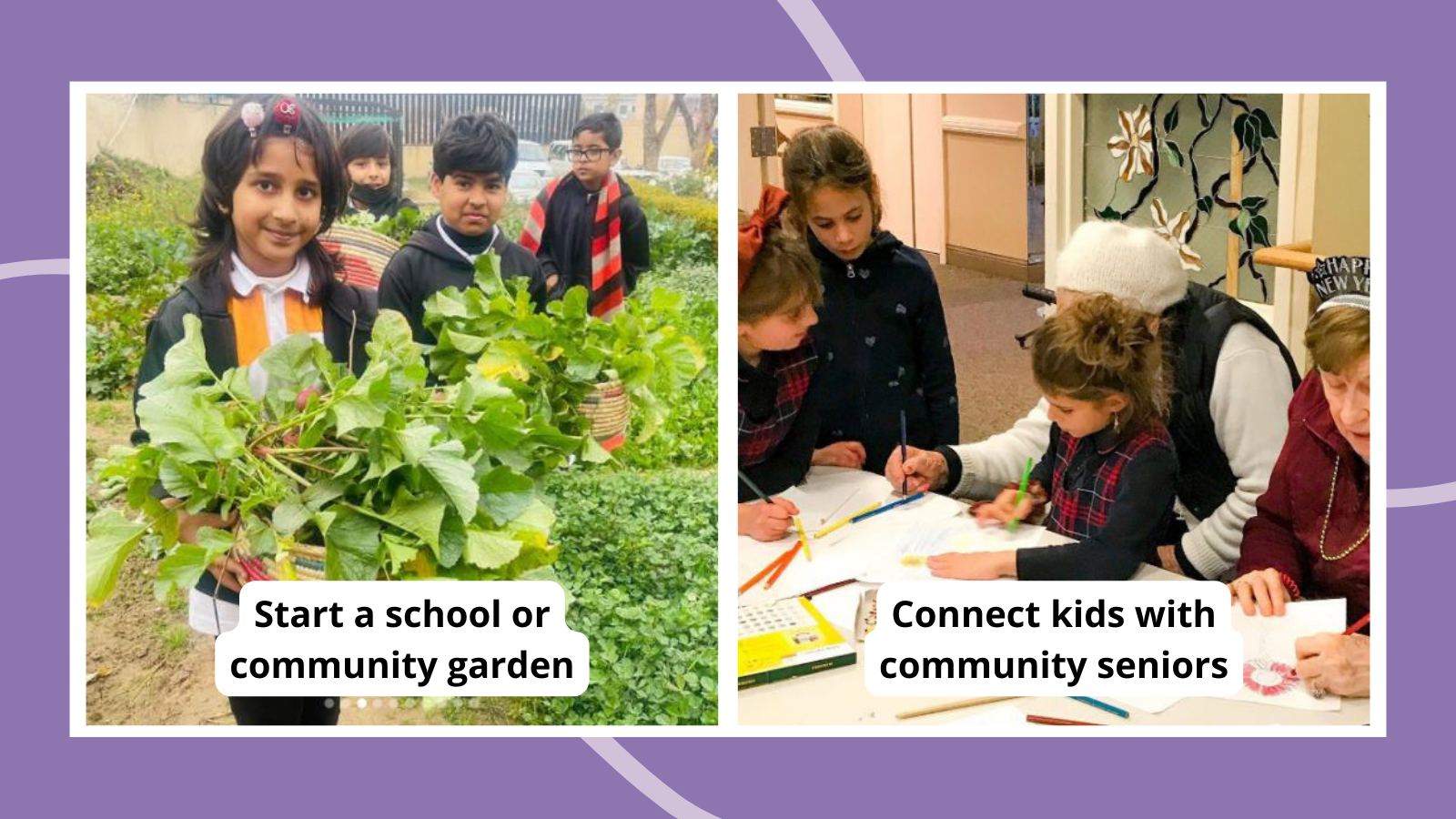
Project-based learning is a hot topic in many schools these days, as educators work to make learning more meaningful for students. As students conduct hands-on projects addressing real-world issues, they dig deeper and make personal connections to the knowledge and skills they’re gaining. But not just any project fits into this concept. Learn more about strong project-based learning ideas, and find examples for any age or passion.
What is project-based learning?
Project-based learning (PBL) uses real-world projects and student-directed activities to build knowledge and skills. Kids choose a real-world topic that’s meaningful to them (some people call these “passion projects”), so they’re engaged in the process from the beginning. These projects are long-term, taking weeks, months, or even a full semester or school year. Students may complete them independently or working in small groups. Learn much more about project-based learning here.
What makes a good PBL project?
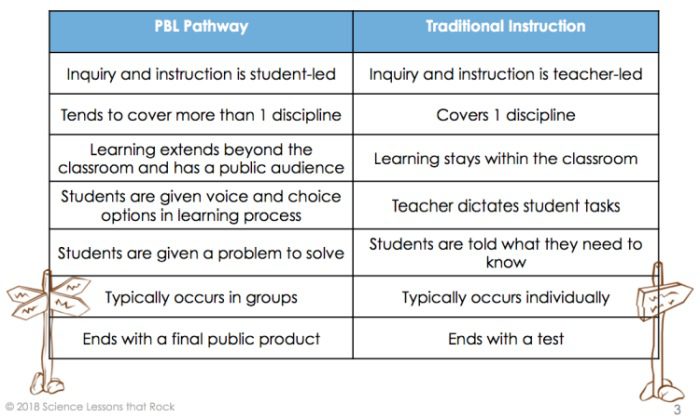
In many ways, PBL is more like the work adults do in their daily jobs, especially because student efforts have potential real-world effects. A strong PBL project:
- Addresses a real-world issue or problem
- Requires sustained and independent inquiry, in and out of the classroom
- Allows students voice and choice throughout the project
- Combines elements of many disciplines
- Includes collaboration with public partners, such as universities, community organizations, or businesses
- Produces a public product that is seen by those outside the school community
- Covers a complete process, including activities like research, design, production, marketing or public awareness, and enlisting supporters or investors
Outdoor Project-Based Learning Ideas
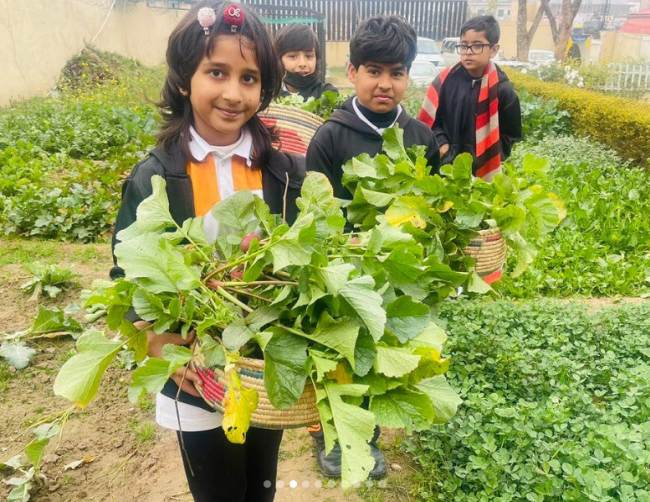
- Create a new local park, or improve an existing one by adding new features or providing needed maintenance.
- Plant a community garden to provide food for a soup kitchen, food pantry, or other organization.
- Design and create a butterfly, pollinator, or other wildlife garden to support the local ecosystem.
- Build a new walking or biking trail that’s safe for people of all ages to use.
- Devise and implement a way to reduce litter in your community.
- Set up and manage a school or community compost pile, and distribute the resulting soil to those who need it most.
- Find and help the public use a new way to grow food that requires less soil, water, or fertilizers, which are in short supply in some parts of the world.
- Design, build, and install a completely unique piece of playground equipment that serves a specific purpose or need.
School Community Project-Based Learning Ideas
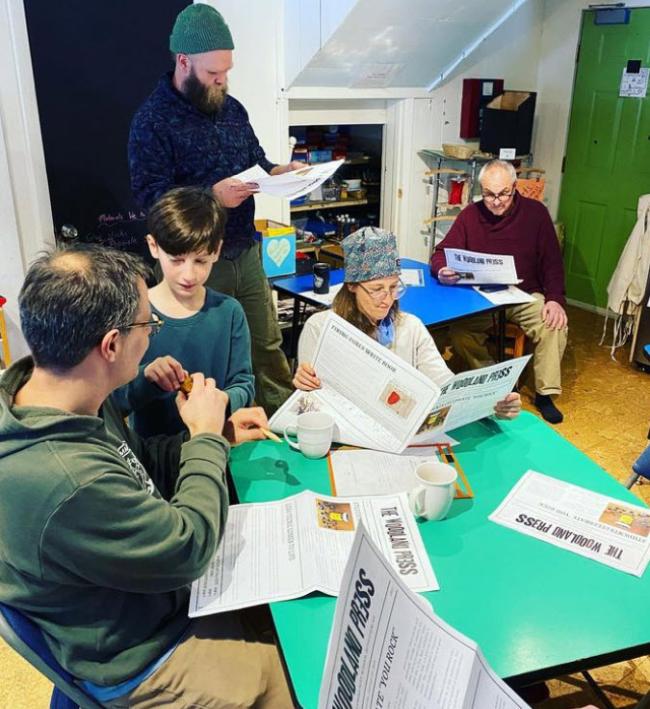
- Start a comprehensive recycling program at school, or substantially improve participation in an existing one.
- Add collaborative artwork like murals or other displays to school hallways, bathrooms, or grounds.
- Determine a location or program at your school that needs improvement, then make a plan, raise the funds, and implement your ideas.
- Come up with ways to celebrate your school’s diversity and improve relationships between all students.
- Start and run a school store , including inventory, financial plans, and marketing.
- Write a school handbook for new students, with tips and tricks for helping them feel at home.
- Figure out how to offer healthier, better-tasting meals and snacks in the school cafeteria.
- Implement a mentoring program for older students to help younger students, with planned activities and appropriate training for older students.
- Design and propose a new style of grading system that ensures equity.
- Find ways to improve the indoor recess experience at your school.
- Set up and run a new school newspaper, magazine, podcast, video channel, etc.
Greater Community Project-Based Learning Ideas
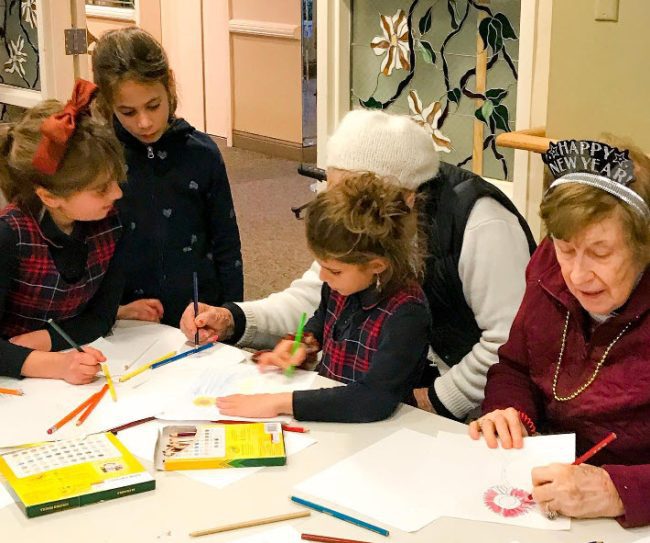
- Coordinate a community art project in a central location to celebrate local culture or artists.
- Set up a program for schoolkids to socialize with senior citizens in nursing homes, hospitals, or retirement communities.
- Create a program to offer free translation services for ESL families in the community.
- Help a local animal shelter improve its facilities, or find new ways to match homeless pets with their forever families.
- Build and maintain Little Free Libraries around your community, especially in underserved areas.
- Help local businesses become more environmentally conscious, increasing sustainability and decreasing waste.
- Create and lead a walking tour of your community, highlighting its culture, history, landmarks, and more.
- Find a way to record and celebrate local voices in your community’s history.
- Come up with ideas for welcoming immigrants and other newcomers to your community.
- Set up a series of events that will encourage the community to mix and experience each others’ foods, cultures, and more.
- Create and implement a new program to inspire a love of books and reading in preschool students.
- Set up and help run a new charitable organization your community needs.
Social Issues Project-Based Learning Ideas
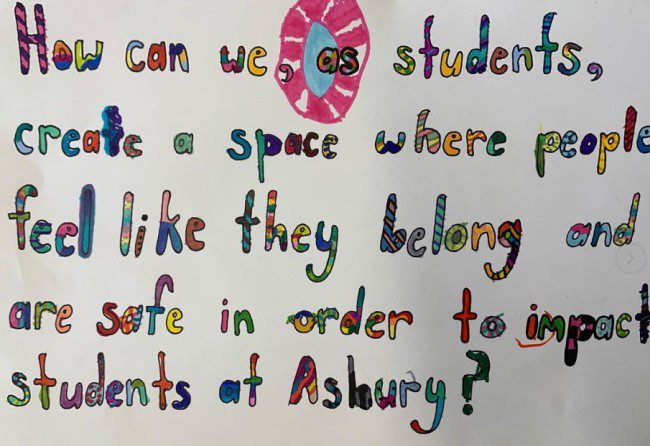
- Start an awareness campaign on a topic that’s important to you, like anti-bullying, healthy living, protecting the environment, civil rights, equality and equity, etc.
- Come up with and implement ways to increase voter turnout in your community, especially among younger voters.
- Write, record, and share with a wider audience your own TED Talk–style video on an issue that hasn’t been covered yet or on which you have a unique perspective.
- Devise and implement ways for unheard voices to be amplified in your school or community.
- Write and publicly perform a play that highlights a social issue that’s important to you.
- Look for areas in your community that present challenges to those with disabilities, and help to improve them to overcome those challenges.
- Research, write, and publicly present and defend a position paper on an issue that’s important to your community.
- Choose a real court case, then research the law and work with legal experts to prepare and present your own case as you would in a courtroom.
- Write, edit, seek, and incorporate real-world feedback, and publish or publicly present your own book, poem, or song on an issue that’s important to you.
- Start a program to teach a specific group (e.g., preschoolers, senior citizens, business owners) to care for and protect the environment.
- Plan and hold a fundraiser to support an issue you care about.
- Choose a law you feel is unjust, and write, research, and publicly present and defend a position paper about your desired change.
STEM Project-Based Learning Ideas
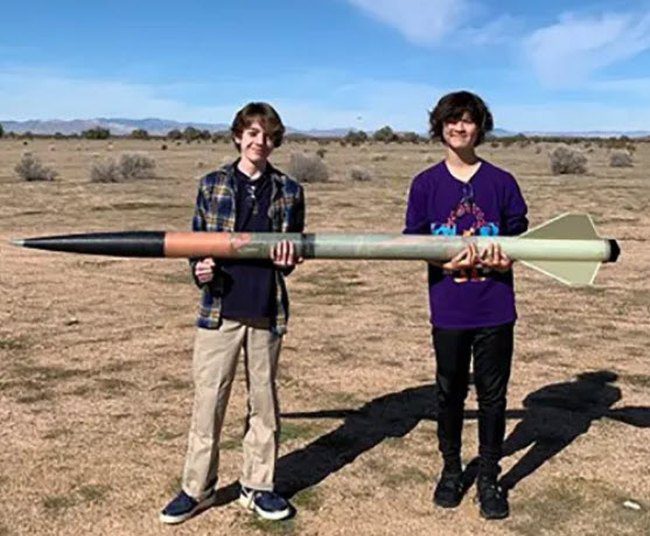
- Create an app that meets a specific purpose for a specific audience.
- Invent something new that the world needs, and then fund, create, and sell your product in the community.
- Design a game to help students learn important STEM concepts.
- Find a simple way to improve an existing product, especially if it cuts costs or improves environmental sustainability.
- Explore ways to reduce the amount of waste we produce, especially plastic and other landfill-bound items.
- Write a book or graphic novel that’s entertaining but also teaches kids about science or math.
- Devise new ways to provide clean drinking water to communities where water is scarce.
- Build an effective solar oven people can use to cook during extended power outages, or in areas where electricity isn’t available.
- Work with a university or STEM organization to gather, analyze, and present real-world scientific data.
- Design a building to fit a specific purpose or need, including researching the requirements and zoning laws, accurately drafting a plan, determining the costs, and presenting the plan to the proposed client.
- Create an interactive hands-on exhibit to teach people about STEM concepts.
- Determine a type of website you believe is missing, then research, build, and publish the site you envision.
Creative Arts Project-Based Learning Ideas

- Organize an art show for the community, seeking out those who ordinarily might not have a chance to display their work.
- Create and teach an art class in your area of expertise to children, the elderly, or another segment of the population.
- Design a mural for an area in your community that needs beautification, and seek funding or other assistance from community members to install it.
- Write a play about a topic that’s meaningful to you or your community. Work with the community to stage a performance for all to attend.
- Invite local dancers to perform at a school or community Festival of Dance, highlighting a variety of cultures and dance styles.
- Start a regular writer’s workshop where community writers can come together to share and seek feedback. Invite local authors or publishing experts to speak as guests.
- Collect stories, poems, and essays from local authors, and put them together into a book. Sell the book to raise money for a cause that’s important to local writers.
- Gather singers or instrumentalists from your community into a choir or band. Put on a concert to raise money for a special cause, or take your choir on tour to local retirement homes, hospitals, etc.
- Write a song about a person or cause that’s important to you. Produce and record the song, then find a way to share it with others.
- Make a short film about a local hero, community event, or local place. Invite others to do the same, and organize a local film festival.
What are some your favorite project-based learning ideas? Come share your thoughts in the We Are Teachers HELPLINE group on Facebook !
Plus, meaningful service learning projects for kids and teens ..
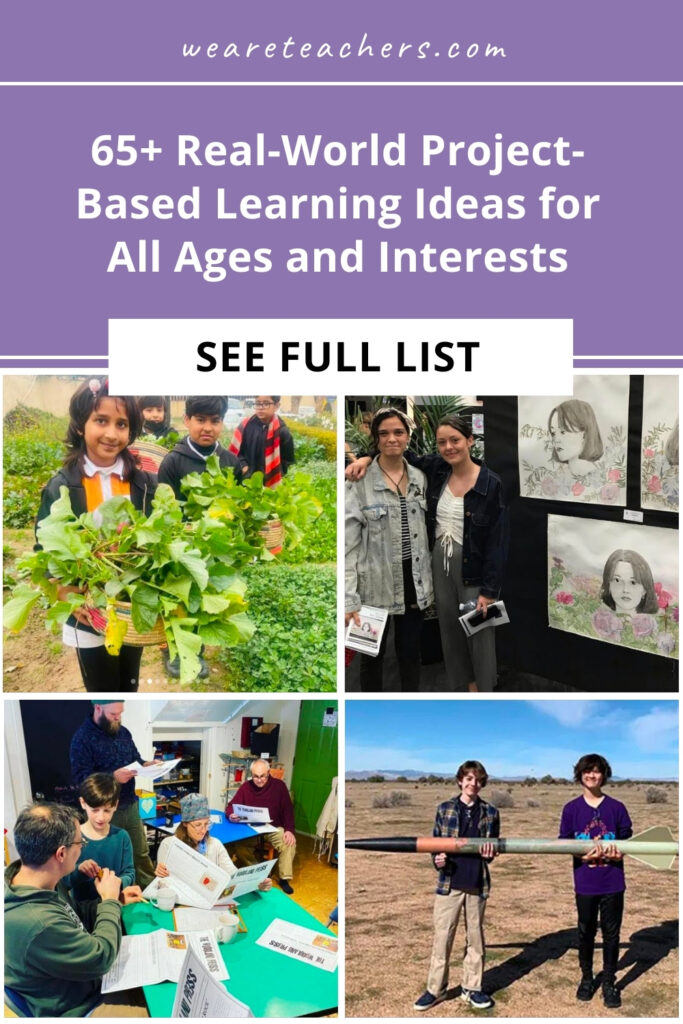
You Might Also Like

How to Start a Student-Run School Store
For sale: pencils, T-shirts, and important life skills. Continue Reading
Copyright © 2024. All rights reserved. 5335 Gate Parkway, Jacksonville, FL 32256

8 Super Cool Classroom Activities For Middle School Students
Categories Education/School
If you teach any students in middle school, then you know all too well how fast these kids can lose interest in classroom activities if they’re not engaged.
It’s important to remember that, as much as middle school students want to be high schoolers and be treated like mini-adults, they’re still kids.
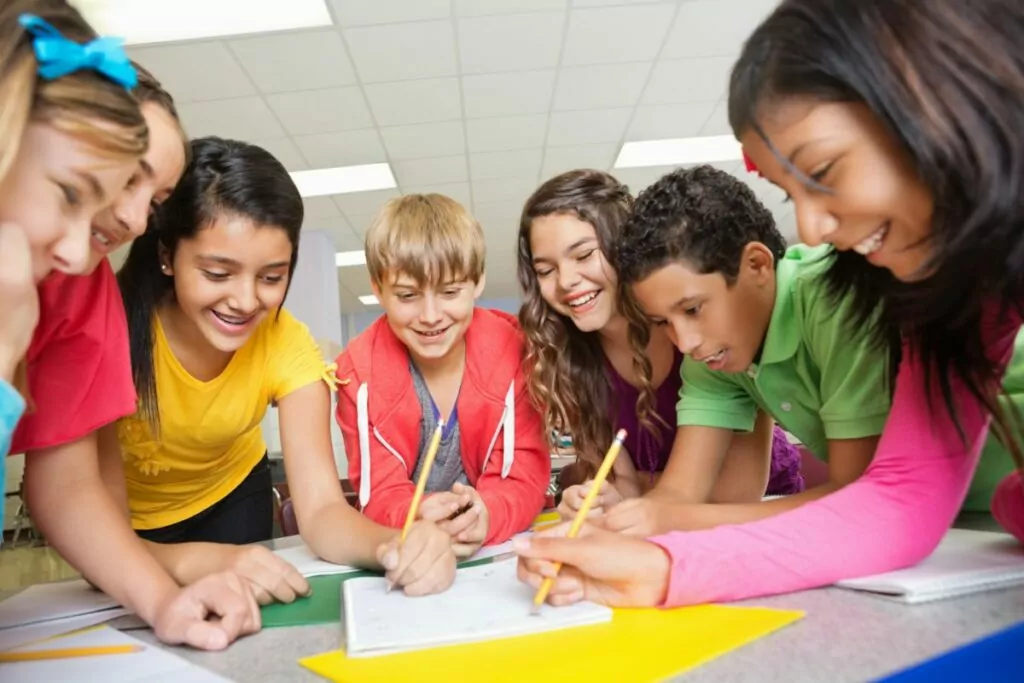
Kids need fun and engaging activities that pair entertainment with learning rather than just being spoken at for an entire day.
Of course, you’re never going to be able to make every single lesson in a day super fun and interesting; however, you can always try to incorporate a couple of fun activities every so often to keep your kids engaged.
So, let’s get on with it! Here are our eight favorite super cool classroom activities for middle school students.
1. Science Experiments
Getting your kids involved with hands-on learning is one of the best ways to keep them engaged. If they’re able to see and feel their way through an activity, they’re much more likely to keep them interested and on task.
Introduce them to some cool and easy science experiments that they can complete either at their own desks or in groups around larger tables.
This could include Elephant’s Toothpaste (best completed outside), baking soda volcanoes, or making slime if your kids are on the younger side of middle school.
For older kids, you can introduce them to invisible ink and lemon juice or use cabbage as a PH indicator. These kinds of experiments are fantastic for introducing your students to different scientific concepts without boring them.
If you want to make sure that the students have understood the concepts shown to them, you can have them create a fact sheet or poster relating to the experiment you just did.
2. Literary Escape Rooms
If you have the time to come up with several book-related questions and maybe create a few props, then you could delight your students with a book-related escape room that they can work through.
You don’t have to make an actual escape room out of the classroom; in fact, you’ll find it much easier to control if you set up the escape room to be text-based instead.
Create a series of clues and puzzles revolving around whatever book you’re studying, and let your students work their way through it during your lesson. Not only is this a more interesting way for them to test their comprehension, but it also lets you see how much they’ve understood and paid attention to the reading.
3. Debate Clubs
If you’ve spent any time around pre-teens and young teenagers, then you know that they love almost nothing as much as they love arguing and contradicting you. So why not channel that into something productive and engaging?
Incorporating debate sessions into your classroom can be a great way to get kids to discuss certain topics whilst also teaching them the art of debate . They need to engage in reasonable arguments and be able to come up with counter-points and interesting points.
Separate your class into two teams, and give them a topic and a stance. They should be allowed a set amount of time to come up with their arguments and do the research that they think is necessary.
These debates don’t only have to be social studies related but could be utilized during history, geography, English, as well as other classes. If you think that there are two opposing arguments to be made about a topic that you’re studying, then set up a debate session to get your kids involved in it.
4. Creative Writing Workshop
If you know that you have a lot of creative kids in your class, then introducing them to creative writing workshops could be an activity that really engages them.
You could discuss as a class how to get yourself into a creative mindset and different ways that we could use language to create meaning and art.
If you have the opportunity, let your kids create whatever they want to with writing, be it a poem, a short story, a newspaper article, or a blog post. Have them think about what kind of language they should use depending on what medium of writing they are using.
Even if you have kids in the class who abhor the idea of creative writing, you could challenge them to dissect a piece of writing. For example, give them a copy of a text you’ve been studying or encourage them to bring in their favorite book or magazine. Then, provide them with different colored pens to highlight the different sentence structures, word types, metaphors, etc.
This way, you can keep all your students engaged, even if they’re not interested in creative writing.
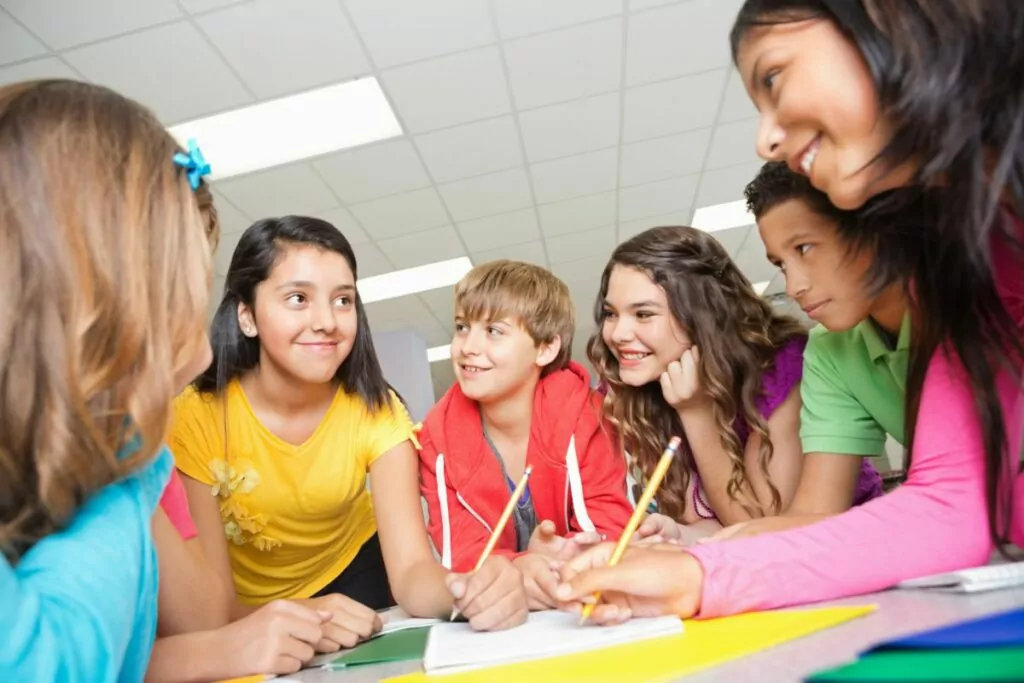
5. Historical Hot-Seating
Want a way to let your theater kids show off their acting whilst also checking how well your class has been listening to your history lessons? Then you should try some historical hot-seating.
Hot-seating is a theater trick that involves one student sitting on the “hot seat” and pretending to be a certain figure from history. Then, the other students are tasked with asking relevant questions to the historical figure to learn more about them.
Your students can take turns playing different “characters” and even let them interact with each other whilst in character.
6. Coding And Robotics
Coding and robotics have never been more relevant and important to daily life, and introducing these concepts to your students early can be a great step up for their future.
Using super cool software like “Scratch” and “Lego Mindstorms”, you can teach them how to code and show them some real-life applications of these skills.
Not only does this kind of activity teach them more about a very modern skill, but it also boosts their confidence in using computers and teaches them more about how the technology that they use every day works.
7. Class Art Gallery
If you have some budding artists in your class, you could set up your class as an art gallery.
Set your kids off creating some art based around a topic or theme, and see what they come up with. Encourage them to use different materials and think outside the box when developing their art. Then, you can get them to create a description and artist’s statement regarding their work.
Once you have the art and the statements, you can display them around the classroom, have your students explore the different kinds of work that they have all made, and discuss how the art reflects the artist’s statements.
Some kids probably won’t take it seriously, but that doesn’t mean that their work won’t still be worth discussing and celebrating.
8. Getting Outdoors
One fantastic way to get middle schoolers engaged with your lesson is to set it outside. Just being in a new environment can refresh your kids and bring something fun and engaging to them.
You could try having any number of regular classes outside, particularly if it’s a mild day; however, if you can arrange a “great outdoors” session, even better. Encourage your students to explore their surroundings, create scavenger hunts or treasure maps to get them thinking, or even teach basic survival skills like rope-tying or edible plant identification.
Letting your kids blow off steam outside of the classroom can be a great way to re-engage and reset them.
Final Thoughts
Middle school kids can be incredibly difficult to keep interested and engaged in class, which is why it is so important to find tasks and activities that are going to get them paying attention.
Whether you need to create debate clubs, art galleries, or science experiments, hopefully, this list has given you a few ideas of super cool classroom activities that you can arrange to get your middle school students engaged with your lessons.
Further reading: STEM activities for middle school kids .
Frequently Asked Questions
How do you engage middle school students.
One of the sure-fire ways that you can engage most middle school students is by getting them moving. At this age, kids are usually brimming with an energy that likes to come out at inappropriate times. Your best chance is to channel that energy into some physical activities that get them up and moving.
What Are The Five Learning Activities?
In the classroom, a common theory is that there are five different types of learning. These are:
- Content Focus
- Interactivity Focus
- Critical Thinking
- Problem-Solving
If you are able to combine these different types of activities into your classroom and lesson plans, then you’re more likely to be successful in managing your classroom because you’re going to be engaging every part of your student’s brains and challenging them in a healthy way.
- Recent Posts
- Homeschooling In High School: Pros And Cons - February 24, 2024
- How Do I Withdraw My Child From School To Homeschool? - February 23, 2024
- How To Not Go Crazy Homeschooling Kids: A Guide For Frazzled Parents - February 22, 2024
Related Posts:
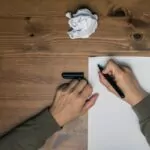
Leave a comment Cancel reply
Your email address will not be published. Required fields are marked *
Save my name, email, and website in this browser for the next time I comment.
- CORE CURRICULUM
- LITERACY > CORE CURRICULUM > Into Literature, 6-12" data-element-type="header nav submenu" title="Into Literature, 6-12" aria-label="Into Literature, 6-12"> Into Literature, 6-12
- LITERACY > CORE CURRICULUM > Into Reading, K-6" data-element-type="header nav submenu" title="Into Reading, K-6" aria-label="Into Reading, K-6"> Into Reading, K-6
- INTERVENTION
- LITERACY > INTERVENTION > English 3D, 4-12" data-element-type="header nav submenu" title="English 3D, 4-12" aria-label="English 3D, 4-12"> English 3D, 4-12
- LITERACY > INTERVENTION > Read 180, 3-12" data-element-type="header nav submenu" title="Read 180, 3-12" aria-label="Read 180, 3-12"> Read 180, 3-12
- LITERACY > READERS > Hero Academy Leveled Libraries, PreK-4" data-element-type="header nav submenu" title="Hero Academy Leveled Libraries, PreK-4" aria-label="Hero Academy Leveled Libraries, PreK-4"> Hero Academy Leveled Libraries, PreK-4
- LITERACY > READERS > HMH Reads Digital Library, K-5" data-element-type="header nav submenu" title="HMH Reads Digital Library, K-5" aria-label="HMH Reads Digital Library, K-5"> HMH Reads Digital Library, K-5
- LITERACY > READERS > inFact Leveled Libraries, K-5" data-element-type="header nav submenu" title="inFact Leveled Libraries, K-5" aria-label="inFact Leveled Libraries, K-5"> inFact Leveled Libraries, K-5
- LITERACY > READERS > Rigby PM, K-5" data-element-type="header nav submenu" title="Rigby PM, K-5" aria-label="Rigby PM, K-5"> Rigby PM, K-5
- LITERACY > READERS > Science & Engineering Leveled Readers, K-5" data-element-type="header nav submenu" title="Science & Engineering Leveled Readers, K-5" aria-label="Science & Engineering Leveled Readers, K-5"> Science & Engineering Leveled Readers, K-5
- SUPPLEMENTAL
- LITERACY > SUPPLEMENTAL > A Chance in the World SEL, 8-12" data-element-type="header nav submenu" title="A Chance in the World SEL, 8-12" aria-label="A Chance in the World SEL, 8-12"> A Chance in the World SEL, 8-12
- LITERACY > SUPPLEMENTAL > Amira Learning, K-6" data-element-type="header nav submenu" title="Amira Learning, K-6" aria-label="Amira Learning, K-6"> Amira Learning, K-6
- LITERACY > SUPPLEMENTAL > Classcraft, K-8" data-element-type="header nav submenu" title="Classcraft, K-8" aria-label="Classcraft, K-8"> Classcraft, K-8
- LITERACY > SUPPLEMENTAL > JillE Literacy, K-3" data-element-type="header nav submenu" title="JillE Literacy, K-3" aria-label="JillE Literacy, K-3"> JillE Literacy, K-3
- LITERACY > SUPPLEMENTAL > Waggle, K-8" data-element-type="header nav submenu" title="Waggle, K-8" aria-label="Waggle, K-8"> Waggle, K-8
- LITERACY > SUPPLEMENTAL > Writable, 3-12" data-element-type="header nav submenu" title="Writable, 3-12" aria-label="Writable, 3-12"> Writable, 3-12
- LITERACY > SUPPLEMENTAL > ASSESSMENT" data-element-type="header nav submenu" title="ASSESSMENT" aria-label="ASSESSMENT"> ASSESSMENT
- CORE CURRICULUM
- MATH > CORE CURRICULUM > Arriba las Matematicas, K-8" data-element-type="header nav submenu" title="Arriba las Matematicas, K-8" aria-label="Arriba las Matematicas, K-8"> Arriba las Matematicas, K-8
- MATH > CORE CURRICULUM > Go Math!, K-6" data-element-type="header nav submenu" title="Go Math!, K-6" aria-label="Go Math!, K-6"> Go Math!, K-6
- MATH > CORE CURRICULUM > Into Algebra 1, Geometry, Algebra 2, 8-12" data-element-type="header nav submenu" title="Into Algebra 1, Geometry, Algebra 2, 8-12" aria-label="Into Algebra 1, Geometry, Algebra 2, 8-12"> Into Algebra 1, Geometry, Algebra 2, 8-12
- MATH > CORE CURRICULUM > Into Math, K-8" data-element-type="header nav submenu" title="Into Math, K-8" aria-label="Into Math, K-8"> Into Math, K-8
- MATH > CORE CURRICULUM > Math Expressions, PreK-6" data-element-type="header nav submenu" title="Math Expressions, PreK-6" aria-label="Math Expressions, PreK-6"> Math Expressions, PreK-6
- MATH > CORE CURRICULUM > Math in Focus, K-8" data-element-type="header nav submenu" title="Math in Focus, K-8" aria-label="Math in Focus, K-8"> Math in Focus, K-8
- SUPPLEMENTAL
- MATH > SUPPLEMENTAL > Classcraft, K-8" data-element-type="header nav submenu" title="Classcraft, K-8" aria-label="Classcraft, K-8"> Classcraft, K-8
- MATH > SUPPLEMENTAL > Waggle, K-8" data-element-type="header nav submenu" title="Waggle, K-8" aria-label="Waggle, K-8"> Waggle, K-8
- MATH > INTERVENTION > Math 180, 5-12" data-element-type="header nav submenu" title="Math 180, 5-12" aria-label="Math 180, 5-12"> Math 180, 5-12
- SCIENCE > CORE CURRICULUM > Into Science, K-5" data-element-type="header nav submenu" title="Into Science, K-5" aria-label="Into Science, K-5"> Into Science, K-5
- SCIENCE > CORE CURRICULUM > Into Science, 6-8" data-element-type="header nav submenu" title="Into Science, 6-8" aria-label="Into Science, 6-8"> Into Science, 6-8
- SCIENCE > CORE CURRICULUM > Science Dimensions, K-12" data-element-type="header nav submenu" title="Science Dimensions, K-12" aria-label="Science Dimensions, K-12"> Science Dimensions, K-12
- SCIENCE > READERS > inFact Leveled Readers, K-5" data-element-type="header nav submenu" title="inFact Leveled Readers, K-5" aria-label="inFact Leveled Readers, K-5"> inFact Leveled Readers, K-5
- SCIENCE > READERS > Science & Engineering Leveled Readers, K-5" data-element-type="header nav submenu" title="Science & Engineering Leveled Readers, K-5" aria-label="Science & Engineering Leveled Readers, K-5"> Science & Engineering Leveled Readers, K-5
- SCIENCE > READERS > ScienceSaurus, K-8" data-element-type="header nav submenu" title="ScienceSaurus, K-8" aria-label="ScienceSaurus, K-8"> ScienceSaurus, K-8
- SOCIAL STUDIES > CORE CURRICULUM > HMH Social Studies, 6-12" data-element-type="header nav submenu" title="HMH Social Studies, 6-12" aria-label="HMH Social Studies, 6-12"> HMH Social Studies, 6-12
- SOCIAL STUDIES > SUPPLEMENTAL > Writable" data-element-type="header nav submenu" title="Writable" aria-label="Writable"> Writable
- For Teachers
- PROFESSIONAL DEVELOPMENT > For Teachers > Coachly" data-element-type="header nav submenu" title="Coachly" aria-label="Coachly"> Coachly
- PROFESSIONAL DEVELOPMENT > For Teachers > Teacher's Corner" data-element-type="header nav submenu" title="Teacher's Corner" aria-label="Teacher's Corner"> Teacher's Corner
- PROFESSIONAL DEVELOPMENT > For Teachers > Live Online Courses" data-element-type="header nav submenu" title="Live Online Courses" aria-label="Live Online Courses"> Live Online Courses
- For Leaders
- PROFESSIONAL DEVELOPMENT > For Leaders > The Center for Model Schools (formerly ICLE)" data-element-type="header nav submenu" title="The Center for Model Schools (formerly ICLE)" aria-label="The Center for Model Schools (formerly ICLE)"> The Center for Model Schools (formerly ICLE)
- MORE > undefined > Assessment" data-element-type="header nav submenu" title="Assessment" aria-label="Assessment"> Assessment
- MORE > undefined > Early Learning" data-element-type="header nav submenu" title="Early Learning" aria-label="Early Learning"> Early Learning
- MORE > undefined > English Language Development" data-element-type="header nav submenu" title="English Language Development" aria-label="English Language Development"> English Language Development
- MORE > undefined > Homeschool" data-element-type="header nav submenu" title="Homeschool" aria-label="Homeschool"> Homeschool
- MORE > undefined > Intervention" data-element-type="header nav submenu" title="Intervention" aria-label="Intervention"> Intervention
- MORE > undefined > Literacy" data-element-type="header nav submenu" title="Literacy" aria-label="Literacy"> Literacy
- MORE > undefined > Mathematics" data-element-type="header nav submenu" title="Mathematics" aria-label="Mathematics"> Mathematics
- MORE > undefined > Professional Development" data-element-type="header nav submenu" title="Professional Development" aria-label="Professional Development"> Professional Development
- MORE > undefined > Science" data-element-type="header nav submenu" title="Science" aria-label="Science"> Science
- MORE > undefined > undefined" data-element-type="header nav submenu">
- MORE > undefined > Social and Emotional Learning" data-element-type="header nav submenu" title="Social and Emotional Learning" aria-label="Social and Emotional Learning"> Social and Emotional Learning
- MORE > undefined > Social Studies" data-element-type="header nav submenu" title="Social Studies" aria-label="Social Studies"> Social Studies
- MORE > undefined > Special Education" data-element-type="header nav submenu" title="Special Education" aria-label="Special Education"> Special Education
- MORE > undefined > Summer School" data-element-type="header nav submenu" title="Summer School" aria-label="Summer School"> Summer School
- BROWSE RESOURCES
- BROWSE RESOURCES > Classroom Activities" data-element-type="header nav submenu" title="Classroom Activities" aria-label="Classroom Activities"> Classroom Activities
- BROWSE RESOURCES > Customer Success Stories" data-element-type="header nav submenu" title="Customer Success Stories" aria-label="Customer Success Stories"> Customer Success Stories
- BROWSE RESOURCES > Digital Samples" data-element-type="header nav submenu" title="Digital Samples" aria-label="Digital Samples"> Digital Samples
- BROWSE RESOURCES > Events" data-element-type="header nav submenu" title="Events" aria-label="Events"> Events
- BROWSE RESOURCES > Grants & Funding" data-element-type="header nav submenu" title="Grants & Funding" aria-label="Grants & Funding"> Grants & Funding
- BROWSE RESOURCES > International" data-element-type="header nav submenu" title="International" aria-label="International"> International
- BROWSE RESOURCES > Research Library" data-element-type="header nav submenu" title="Research Library" aria-label="Research Library"> Research Library
- BROWSE RESOURCES > Shaped - HMH Blog" data-element-type="header nav submenu" title="Shaped - HMH Blog" aria-label="Shaped - HMH Blog"> Shaped - HMH Blog
- BROWSE RESOURCES > Webinars" data-element-type="header nav submenu" title="Webinars" aria-label="Webinars"> Webinars
- CUSTOMER SUPPORT
- CUSTOMER SUPPORT > Contact Sales" data-element-type="header nav submenu" title="Contact Sales" aria-label="Contact Sales"> Contact Sales
- CUSTOMER SUPPORT > Customer Service & Technical Support Portal" data-element-type="header nav submenu" title="Customer Service & Technical Support Portal" aria-label="Customer Service & Technical Support Portal"> Customer Service & Technical Support Portal
- CUSTOMER SUPPORT > Platform Login" data-element-type="header nav submenu" title="Platform Login" aria-label="Platform Login"> Platform Login
- Learn about us
- Learn about us > About" data-element-type="header nav submenu" title="About" aria-label="About"> About
- Learn about us > Diversity, Equity, and Inclusion" data-element-type="header nav submenu" title="Diversity, Equity, and Inclusion" aria-label="Diversity, Equity, and Inclusion"> Diversity, Equity, and Inclusion
- Learn about us > Environmental, Social, and Governance" data-element-type="header nav submenu" title="Environmental, Social, and Governance" aria-label="Environmental, Social, and Governance"> Environmental, Social, and Governance
- Learn about us > News Announcements" data-element-type="header nav submenu" title="News Announcements" aria-label="News Announcements"> News Announcements
- Learn about us > Our Legacy" data-element-type="header nav submenu" title="Our Legacy" aria-label="Our Legacy"> Our Legacy
- Learn about us > Social Responsibility" data-element-type="header nav submenu" title="Social Responsibility" aria-label="Social Responsibility"> Social Responsibility
- Learn about us > Supplier Diversity" data-element-type="header nav submenu" title="Supplier Diversity" aria-label="Supplier Diversity"> Supplier Diversity
- Join Us > Careers" data-element-type="header nav submenu" title="Careers" aria-label="Careers"> Careers
- Join Us > Educator Input Panel" data-element-type="header nav submenu" title="Educator Input Panel" aria-label="Educator Input Panel"> Educator Input Panel
- Join Us > Suppliers and Vendors" data-element-type="header nav submenu" title="Suppliers and Vendors" aria-label="Suppliers and Vendors"> Suppliers and Vendors
- Divisions > Center for Model Schools (formerly ICLE)" data-element-type="header nav submenu" title="Center for Model Schools (formerly ICLE)" aria-label="Center for Model Schools (formerly ICLE)"> Center for Model Schools (formerly ICLE)
- Divisions > Heinemann" data-element-type="header nav submenu" title="Heinemann" aria-label="Heinemann"> Heinemann
- Divisions > NWEA" data-element-type="header nav submenu" title="NWEA" aria-label="NWEA"> NWEA
- Platform Login
SOCIAL STUDIES
PROFESSIONAL DEVELOPMENT
ACTIVITIES & LESSONS
15 Fun Summer School Activities for Elementary and Middle School Students

Learning doesn't have to stop just because it's summer break! We've compiled fun summer learning activities for elementary and middle school students that can be done in and out of school. The activities span writing, reading, math, and more subjects.
Summer Learning Activities for Elementary and Middle School Students
1. ready, set, invent (grades 2—8).
New products are often inspired by problems in need of solutions. This summer project for middle school students challenges them to come up with an invention that solves a summer-related problem. The invention could be completely new or improve an existing product. They might start by brainstorming a list of summer annoyances. Mosquito bites are pretty annoying. Maybe bug-repellant clothing will do the trick. Summer can be fun-filled, but there are always some boring days, too. A new game could liven things up. Once students have their idea for an invention, ask them to create a prototype for it, along with a short description of how the invention works and the materials needed to build it.
2. Wordplay (Grades 4—8)
What kind of tree fits in your hand? Challenge students to unscramble the summer-related words to get the punch line. Download our Summer Fun Word Scramble here. To extend the activity, have students write a silly story using every word in the jumble. Students can also continue the wordplay by creating their own word jumble with a different theme for a friend to solve. They might choose a theme around summer destinations like the beach or an amusement park, or look ahead to the fall with a back-to-school theme.

3. Fun with Sidewalk Chalk (Grades K—8)
Tell students they can make their own sidewalk chalk with just three ingredients. Provide them with the recipe below. You can also share this resource on the science of chalk with parents, caregivers, and older students.
Encourage students to use the chalk to play games like hopscotch or tic-tac-toe with a friend. They might also use the sidewalk as their canvas for cheerful pictures and messages to bring joy to neighbors and passersby. Note that making the chalk requires waiting 24 hours or longer for the mixture to dry, so plan accordingly.
What You'll Need:
- 1 cup cornstarch
- 1 cup water
- Food coloring
- Small plastic cups
What to Do:
Step 1: Mix the cornstarch and water in a bowl.
Step 2: Separate the mixture into small plastic cups.
Step 3: Add a drop of a different food coloring to each cup, then stir. Try mixing the different food colorings to create surprising hues!
Step 4: Pour each chalk mixture into one section of the egg carton.
Step 5: Cover the chalk mixtures with wax paper.
Step 6: Let the chalk dry for 24 hours or longer.
4. Five Senses Scavenger Hunt (Grades K—8)
Encourage younger students to go on an outdoor scavenger hunt with a parent or caregiver. This also makes a great summer school idea. Students can make a list of things that they hear, see, smell, taste, and touch. They can keep track of their findings on this Sense Chart . Depending on where students go, they may not come across anything that they can taste, but they can think about what animals and insects might eat and imagine what those things taste like. Also discuss with students that certain plants and animals shouldn’t be touched.
Older students can use the same Sense Chart to record their findings, but provide them with a more challenging search list, like the one below. For some background on the science of the human senses , provide parents, caregivers, and older students with this article on how our sensing organs and our brain work to help us perceive the world around us.
5. Summer Reads (Grades Pre-K—8)
Here are some choice reads that celebrate summer, taking kids on beach trips and bike rides and to the baseball field. Add them to your students' summer reading list. We even included a hands-on activity book that will provide hours of science fun using a few common household items and a whole lot of creativity
- Curious George Goes to the Beach by Margret Rey and H.A. Rey (Pre-K–Kindergarten)
- Swashby and the Sea by Beth Ferry and illustrated by Juana Martinez-Neal (Pre-K–3)
- Hot Day on Abbott Avenue by Karen English and illustrated by Javaka Steptoe (Pre-K–3)
- Flotsam by David Wiesner (Pre-K–3)
- Two Whats?! and a Wow! Think & Tinker Playbook by Mindy Thomas and Guy Raz (Grades 3–7)
- The Last Last-Day-of-Summer by Lamar Giles and illustrated by Dapo Adeola (Grades 3–7)
- Camp by Kayla Miller (Grades 3–7)
- Keeping Score by Linda Sue Park (Grades 3–7)
- Baseball in April and Other Stories by Gary Soto (Grades 3–7)
- Harris and Me by Gary Paulsen (Grades 5–7)

6. Crossword Challenge (Grades 4–8)
Challenge students to complete our Summer Fun Crossword Puzzle . To extend the activity, have them place the words in different categories, such as "Places to Go," "Things to Eat," "Weather Words," and "Things You Might See at the Beach." Then they can brainstorm a list of other summer words to add to each category.

7. Take a Field Trip (Grades K–8)
Put together a list of free local programs for students to continue their learning throughout the summer. Libraries, museums, and parks often provide free programs for families year-round. You can simply print program calendars from their websites. Consider enlisting older students to write emails to local museums with paid admission requesting free passes for students. Add to the list these free virtual field trips that will take students on explorations of the sea, a Finnish forest, Mars, and more.
8. Start a Business (Grades 3–8)
Brainstorm with students a list of businesses that they can start over the summer. Students should consider their skills and interests before starting a business. After all, if they enjoy what they're doing, they'll be more likely to have fun and stick with it. Provide each student with a T-Chart . Have them label the left side "Skills" or "Interests" and the right side "Businesses." A student who is good with animals might start a pet sitting or dog walking business. A student who is adept with technology, a master of organization, or a pro at painting might offer their services to neighbors. Challenge older students to name their business, create a logo, and design a flyer complete with pricing. Remind students that they will need permission from parents and caregivers before starting a summer business.
9. Volunteer in Your Community (Grades Pre-K–8)
Encourage students and their families to give back to their community by volunteering for a cause that's important to them. Here are some ideas:
- Send letters and cards to local nursing homes and assisted living centers or participate in a national campaign, such as Love for the Elderly .
- Collect canned goods from neighbors and donate them to a local soup kitchen or food pantry. Check the website for a list of acceptable items.
- Set a timer for five minutes. Every member of the family has to return with five items (clothes, toys, books) to donate.
- Gather family and friends and together pick up litter in a park or at the beach.
10. Plan a Dream Vacation (Grades 4–8)
Ask students: If you could go anywhere in the world, which destination would you choose? Then have them use the internet, guide books, travel brochures, and maps to plan out a week-long itinerary. They can follow these steps:
- Choose a destination.
- Calculate costs for airfare and hotel.
- Research the attractions you will want to explore, along with admission costs and travel to and from. Be sure to check the days and hours of operation.
- Create an itinerary for each day of the seven-day trip. Include time for travel to attractions and meal breaks.
- Add up the costs.

11. A Bright Idea (Grades 4—8)
The sun is by far the brightest object in Earth's sky. On the magnitude scale that astronomers use to measure brightness, the brighter an object appears, the lower its magnitude. Some of the brightest objects in the sky have a negative apparent magnitude. Ask students to research the brightness of the following objects in Earth's sky and list them in order from dimmest to brightest: sun, moon, stars, and Venus. Then have them research the apparent magnitudes, or measures of brightness, of each object. Encourage students to research other questions this activity might bring up, such as why sunny days hurt our eyes or how much closer we are to the sun than other stars in the sky. Check out our blog on the importance of hands-on activities for another sun-related lesson .
12. Summer Sports (Grades 3–8)
Challenge students to identify a sport typically played during the summer that they have never heard about before. One place to start might be the list of sports that have been played over the history of the Summer Games . Here are some ideas for questions that they can research and write about:
- When was the sport first introduced?
- Where in the world is the sport most commonly played?
- Who holds the world records for best performance in the sport, and what are those records?
- What interesting and unusual videos can you find about the sport? What makes the videos interesting or unusual?
13. Fun Summer Sketching (Grades Pre-K–8)
What kind of fun will kids get up to this summer? Ask them to draw themselves doing a favorite warm-weather activity. Our Summer Drawing worksheet will engage younger grades. Take this activity a step further for older students. Have them take on the traditional "What I Did on Summer Vacation" writing prompt but tell the story using illustrations only.

14. Write a Postcard (Grades K–8)
Here’s an activity that allows students to practice their writing skills over the summer. Provide students with a postcard that’s blank on both sides. Be sure it includes a stamp and is addressed to your school (get permission from your principal first). Ask students to describe what they’re doing over the summer and draw a picture that captures the activity on the other side. Those students who want to get a little more creative with the assignment could describe a dream summer vacation or a fictionalized family vacation gone wrong.
Be the first to read the latest from Shaped .
15. Summer Science Experiments (Grades K–8)
Encourage students to try these summer science activities and experiments , no lab required! With assistance from an adult or older sibling, they can make their own bubble mixture, test out paper airplane designs, become nature spies, and so much more. Share the link to the blog with parents and caregivers or print out an activity or two for them.
More Summer School Class Ideas
Have any other fun summer school activities for elementary and middle school students? Share your favorites with us via email at [email protected] or reach out on Instagram or Facebook .
Learn about our easy-to-implement summer school programs. Visit the HMH summer school site .
This blog, originally published in 2020, has been updated for 2024.
Download our FREE calendar of activities!
- Activities & Lessons
- Grades PreK-K
- Social Studies
Related Reading

Podcast: Building Vocabulary to Increase Reading Comprehension with Abbey Behnke in WI on Teachers in America
Jennifer Corujo Shaped Editor
May 22, 2024

Scaffolding Writing Instruction
Alicia Ivory Shaped Editor
May 20, 2024

10 Math Intervention Strategies for Struggling Students
Shaped Executive Editor
May 7, 2024

24 Must Do End of Year Activities Every Middle School Teacher Should Know
The end of the school year is exciting, but it can be tough to find fun end of year plans for the last weeks – and even the last day- of school. In this post, we’ll discuss 24 must-do, low-prep, end of year activities for middle school.

The end of the school year is always a whirlwind of excitement and chaos. Trips, assemblies, and interruptions make it hard to teach. That makes it the perfect time to do some creative enrichment activities that were sidelined all year to accomodate the mandated curriculum.
Here are 24 end-of-year ideas to get you through the last weeks of school. These activities keep your students engaged, without being impossible to prepare. And best yet, they’re likely to result in great memories that your students will recall for years to come.
I know we’d all love to take our kids to the Alps while we frolic and sing The Sound of Music .
But let’s face it. You have a humongous end of the school year list to tackle. There will be days when you don’t have time to prep and you need the kids to work independently.
With that in mind, I’ve added info about the amount of teacher prep needed for each idea, as well as the amount of hands-on teacher input required during the activity.
The scale is from 1-5, with 1 ⌛ or 🖐️ being little to no prep or input and ⌛ ⌛ ⌛ ⌛ ⌛ or 🖐️🖐️🖐️🖐️🖐️ being a lot of prep and input.
The list starts with no-prep ideas and goes up from there.
1. Watch a Classic TV Show
Have a Twilight Zone marathon for a few days. Most kids have never seen the original show, so I do this every year and the kids love the clever twists. Show the episodes that are considered amongst the “best” and discuss the themes and ironies.
Rod Serling’s work during the Cold War provides rich material for analysis and discussion. The show was originally created during the Cold War when people couldn’t criticize the US or society in any way. Rod Serling did that indirectly — and got away with it — by writing about the topics through the guise of science fiction.
- Requirements: You can find dvds through your school or public library or watch using a streaming service (just make sure this is permitted by the service and your school). Have the kids write down the episode’s theme, the ironies, as well as the aspect of government or society that it reflects.
2. Do an Escape Room
Try this and I guarantee it will be one of your favorite end of year activities for middle school: Transform your classroom into an escape room! This activity will have your students working together to solve puzzles and escape the room within a set time. It’s a fun way to boost their critical thinking skills and foster collaboration. The escape room can be content specific or general. It’s up to you!
The best part is that kids will be having so much fun that they won’t even realize they’re learning valuable skills.
- Prep with a ready-made one: ⌛ (Do-it-yourself is ⌛x10 lol )
- Requirements: (Ready-made ones vary. For example, Escape the School requires some prep and input; however, Escape the Cryptids and Escape the Island don’t require any.)

3. Listen to Fun Summer-Themed Podcasts
Listen to fun summer-themed podcasts and follow up with writing activities. Here’s a great resource to get you started: Summer Fun Podcast Listening and Writing Activities .
- Prep with a ready-made one: ⌛ (Do-it-yourself is ⌛⌛⌛⌛⌛)
- Requirements: To do this from scratch, find a podcast you think your students will enjoy. Then create a list of questions on the podcast. Or better yet, create a puzzle based on the podcast, like the ones below.

4. Create One Pager Reflections
Get your students to reflect on their experiences by creating a one-pager that encapsulates their year. They can include drawings, quotes, and short paragraphs. It’s a wonderful keepsake for them to look back on.
- Prep with a ready-made one: ⌛ (Do-it-yourself is ⌛⌛⌛)

5. Get Moving
Get kids moving in place. You can do this with a fun game that’s easy to create. For instance, make a list of metaphors, similes, and fragments that don’t have either. Have kids stand and start reading from the list, or post each one on the board. Tell kids to jump in place if they hear a simile, crouch down if they hear a metaphor, and sit in their seat if it’s neither. You’ll know right away who knows their stuff and who doesn’t! It’s a great way to get some energy out.
Read more about the importance of movement here . Or find a ready-made game here .
- Requirements: To make it yourself, you’ll need 20-30 examples of whatever skill you want the game to assess.
6. Create Blackout or Found Poetry
Hand out old magazines or books and let students create blackout or found poetry. This activity challenges them to find hidden meanings and create new works of art from existing text.
I use worn-out class novels. It feels great to repurpose those old favorites, and kids love it!
For blackout poetry, kids choose the words they want and to keep and then “black out” all of the words they don’t want to include in their poem.
For found poetry, kids highlight the words they want to keep and then draw a picture over the words they don’t want to include.

7. Write a Letter to a Future 6th or 7th Grader
Have your students write letters to next year’s incoming students. This not only gives them a sense of closure but also helps the new students feel welcomed and prepared.
8. Write Thank You Notes to School Personnel
This is one of those end of year activities that everyone in the entire building will enjoy. Encourage gratitude by having your students write thank you notes to different school personnel. It’s a small gesture that can make a big impact. I’ve written more about here ; just click to read about it. Or click here for a free resource.

9. Create a Graffiti Wall for Next Year’s Class
Set up a graffiti wall where students can leave messages and advice for next year’s class. It’s a fun, interactive way to pass on wisdom. And you’ll have a bulletin board all ready for the first day of school!
- Requirements: You’ll need some bulletin board paper and markers or chalk.
10. Fill Out a Memory Book
Create a memory book filled with prompts and spaces for students to write about their favorite memories, achievements, and goals. It’s a lovely way for them to reflect on the year.
- Input : 🖐️🖐️

11. Host a Book Swap
Encourage summer reading by organizing a book swap. Students can bring in books they’ve already read and exchange them for new titles.
- Input : 🖐️🖐️🖐️🖐️
12. Write Book Review Blurbs on Post-its
Have students write short book review blurbs on Post-its and place them in the classroom library books. It’s a quick and engaging way to encourage reading.
13. Write a Rotation Story
Each student writes a character description on a sheet of paper and leaves it on their desk. Then, kids rotate and add a line to the story involving that character. The results are often hilarious and unexpected!
- Input : 🖐️🖐️🖐️
14. Speed “Date” Some Books
Inspire summer reading goals and get your students moving by organizing a speed-sharing session where they talk about their favorite books. Let me tell you, it’s a blast to watch the kids get so into the discussion, only to have the buzzer go off for the next book “date.”
What can I say? I like to add a little spice to our literary discussions. lol
15. Read a Short Play Reader’s Theater Style
Encourage kids to find their inner Tom Hanks and do a reader’s theater play with them. Find a great shor play, assign parts, and let them act it out. This is a fantastic way to encourage creativity and teamwork. Plus, who doesn’t love a good performance?
- Requirements: Find a play that has parts for multiple students, because they’ll all want to read. This one is awesome and allows for 11-14 actors.
16. Write Quick Fiction
Provide students with photographs or scenarios and have them write quick fiction pieces. This sparks their imagination and sharpens their writing skills.
- Prep: ⌛ ⌛ ⌛
- Requirements: You’ll need some fun photos or scenarios to write about.
17. Write Silly Amazon Product Reviews
Have a laugh by writing silly product reviews for everyday items. This is such a humorous way to practice descriptive writing and creativity.
This article has some hilarous examples: Reader’s Digest Funniest Amazon Reviews
18. Decorate with Inspirational Quotes or Poetry
My students always love doing this end of year activity, and you can do it in two ways.
First, find some smooth rocks and have your students use Sharpies or paint pens to decorate them with inspirational quotes. These can be placed around the school or taken home as a memento.
Or you can write the quotes on Post-it notes. Then, have students place them around the school to spread positivity and encouragement.

19. Make Doorknob Hanger Awards
Create doorknob hangers with awards for various achievements. Templates are pretty easy to find online, and it’s a fun craft activity that also recognizes students’
- Requirements: To make it yourself, all you need is a list of possible awards, paper, and a door hanger template.

20. Write Silly How-To’s
Get creative with writing by having students write silly how-to guides like“How to Fry an Egg on a Sidewalk.” It’s a lighthearted way to practice procedural writing. Another fun example could be “How to Train Your Pet Rock.” Or , “How to Be a Ninja without Training.”
21. Create a Class Time Capsule
Have students bring in items that represent their experiences and create a class time capsule to be opened in the future. It’s a fun way to preserve memories.
22. Write and Play Hink Pink
Introduce your students to hink pinks – two-word rhyming riddles. For example, a “large feline” is a “fat cat.” It’s a fun way to play with language and think creatively. It’s even fun to teach the kids how to write them. They can write them on notecards and then you can play using those cards.
- Prep with a ready-made one: ⌛ (Do-it-yourself is ⌛⌛)
- Input : 🖐️🖐️🖐️🖐️🖐️ (unless you assign a student to read them.)
23. Write Bubble Poetry
Take the learning outside! Organize a scavenger hunt or roll out butcher paper and blow bubbles. Have the kids write metaphors, similes, or entire poems describing the bubbles, how they float, what they look like, and how they feel when they pop. Nature and creativity – a perfect combo!
- Input : 🖐️🖐️🖐️ 🖐️
- Requirements: You’ll need bubbles and butcher paper or poster paper.
24. Have Teach the Teacher Day
Let the students become the teachers! Have them prepare a lesson on something they’re passionate about and teach it to the class. I like to make small groups, but this can be an effective independent project too. It’s empowering and educational.
- Prep: ⌛ ⌛ ⌛⌛ ⌛
- Requirements: Make groups, choose topics, and set down some ground rules. The rest of the project is “kid-powered.” 🙂
The end of the school year doesn’t have to be a challenge. With these creative end of year activities, you can keep your middle school students engaged, entertained, and learning until the very last day!

Narrative Writing Workshop for Middle School ELA

Fiction & Nonfiction Reading -Teach, Practice, Test BUNDLE – Middle School ELA

RACES Writing Introduction to Paragraph Frames DIGITAL & EDITABLE
Are you seeking one-on-one college counseling and/or essay support? Limited spots are now available. Click here to learn more.
60 Team-Building Activities for Kids & Middle/High School Students
May 31, 2024
Collaboration and communication are essential skills that students develop throughout their childhood and teenage years. You can help your students learn these skills by introducing team-building activities, which offer opportunities to collaboratively complete tasks, bond over mutual interests, and accomplish goals together. Below you can find 60 team-building activities for kids in elementary school as well as middle school and high school students. These can be great for building a sense of community in classes, as well as in clubs, performance ensembles, and sports teams.
Team Building Activities for Kids
1) Have your students create an age line-up, in which they organize themselves from oldest-to-youngest by walking around the room and sharing their birthdays.
2) Give the same instructions with height, shortest-to-tallest. This can also be done in silence to encourage silent communication.
3) Do a hula hoop pass, in which students join hands in a circle and pass a hula hoop all the way around, stepping through without unclasping their hands.
4) Build food towers in groups, with students competing to build the highest towers with foods such as dried spaghetti, marshmallows on toothpicks, graham crackers, and candy.
5) Put blue, green, and yellow spots on the foreheads of your students, and have them find each other’s “color teams” without speaking. This is a great exercise for nonverbal communication.
6) Have students talk in groups and find a “common thread,” or something they all have in common (from having older siblings to liking ice cream). Afterwards, they can come up with a team name based on this commonality.
7) Have a “show and tell,” in which each student brings in an object or toy that’s important to them.
8) Make a “human alphabet,” in which students work in groups to create each letter of the alphabet with their bodies.
9) Give 20 seemingly unrelated objects to groups of students and have them work together to classify the objects into categories. Once the time is up, have them explain their rationale to the class.
10) Try a game of two-way or four-way tug-of-war, depending on how many students you have.
Team Building Activities for Kids, Middle School, and High School Students (Continued)
11) Play “knot and unknot,” in which students hold hands in a circle and twist and turn under each other until they’re all tangled up, and then they work together to untangle themselves.
12) While you’re at it, play a classic game of Twister, but with the goal of helping the other players keep from falling.
13) Play team tic-tac-toe using 9 hula hoops set up as a tic-tac-toe board. Students can throw different colored bean bags as X’s and O’s.
14) Play “hot and cold” by having a student leave the room while others hide an object. When the student comes back, they look for the object guided by the words “hot” (if they’re near) and “cold” (if they’re far).
15) Create a “floor as lava” obstacle course that students must help their teammates through, or complete as a team relay race.
16) Have students guide each other through a set of obstacles blindfolded in order to teach trust and responsibility.
17) Create a class tradition to begin or end class that involves stretching together, giving each other compliments, or giving high-fives on the way in or out.
18) Work together to decorate a class bulletin board for each season.
19) Do a “mirroring” exercise with a partner, in which one partner moves and the other must be their “mirror,” and then the roles switch. For a more difficult exercise, have them do this while moving across the room (this can also help teach spatial awareness).
20) Do a balloon relay race, in which partners must hold a balloon between their stomachs or backs while racing.
Team Building Activities for Middle School Students
21)Have a compliment circle, in which students sit in a circle for 5 minutes and shout out compliments to others in the circle.
22) Create a scavenger hunt with math or trivia clues that students must complete in small groups.
23) Give a bag with five items to different groups. Then, have the groups work in teams to make and perform skits using the items.
24) Organize a “three-question mingle” session, in which each student writes down three questions on a post-it, and then students pair up and ask each other their questions. After a timer rings, the two students exchange post-its and repeat with different partners.
25) Draw “life maps.” Students draw out maps of their lives as though it were a board game, and then present their maps to small groups.
26) Do a “photograph show and tell,” in which each student brings a photograph that’s important to them and presents it to a small group, as the others ask curious questions about the photograph.
List Continued
27) Have a newspaper fashion show, in which students use old newspapers, tape, and other materials to create high-fashion costumes for one person in each group. This activity encourages sustainability and “upcycling,” in addition to collaboration.
28) Do a paper chain race. Each team works with construction paper of a different color to create a paper chain. Whichever team creates the longest chain, after a certain amount of time, wins the race.
29) Play “getting to know you” bingo, in which students must ask each other questions to fill out a bingo sheet with their classmate’s names. The bingo slots can say things such as “has an older sibling” or “plays on a sports team” or “likes spicy food.”
30) Set up a gallery of student projects, and organize a tour so that others from outside the class can come visit the gallery. Your students can work together to organize a tour order, welcome and closing speeches, and a Q&A session.
31) Play Pictionary : one partner pulls a word, and must convey it to their partner by drawing.
32) Do an egg drop challenge , in which each group must come up with strategies for dropping an egg out the window without it breaking. This could be perfect for a STEM class.
33) Organize a class trash cleanup around the school.
34) Organize a class book swap.
35) Come up with a collective group tradition for beginning or ending class. Maybe this involves doing shout-out compliments, secret handshakes, or stretching together in a circle.
36) Collaboratively create a music playlist with your students that can play during breaks or to begin and end classes.
37) Create a class play based on a book you’re reading, and ask different students to direct different scenes, design costumes and sets, etc.
38) Have students collaboratively design a restaurant with a theme from the class, including menu items and decorations.
39) Ask a class of 8th graders to work together to design a lesson for a class of 6th graders, or for a local elementary school class. This can help students to bond with each other and other grade levels, while also empowering them to feel mature and ready for high school.
40) Create “strength cards” for each student, which get passed around the classroom. Students write the strengths and other admirable qualities of each student on the card with their name. Each card is returned to the student as a keepsake and a positive reminder.
Team Building Activities for High School Students
41) Ask your students to walk around the room, then choose two others to track (without them knowing). Then, each student moves around, trying to create an equilibrium triangle with the other two they are tracking. The game ends when everyone stops moving in their equilibrium triangles. This is more difficult than it may seem.
42) Replicate an episode of “Shark Tank,” by having groups of students work together to design, present, and sell a product to a group of judges.
43) Play “Two Truths and a Lie” in small groups.
44) Play “partners Two Truths and a Lie,” in which two students get to know each other with icebreaker questions, and then each student creates two truths and a lie about their partner for the group.
45) Have a weekly “lunch and learn,” in which a student or two teach a mini lunchtime class about a skill that has nothing to do with your academic class, such as knitting, cooking, or stand-up comedy.
46) Solve 100-to-500-piece jigsaw puzzles in small groups.
47) Have a “show and tell” with outside hobbies or projects the students are working on, which have nothing to do with the class material.
48) Organize a “ Socratic Seminar .” This discussion format emphasizes careful listening and question-asking over trying to prove a point or win an argument.
49) Make concentric circles, an inner and an outer. Pair the student on the inner with the student closest on the outer, ask a question about course material, and have them discuss. When the time is up, the circle rotates and another question is posed.
50) Do the same concentric circles, but with outlandish or fictitious prompts that the students need to create answers for (for example, “What if gravity didn’t exist?” or “What if the historical event __________ never happened?”)
51) Play “this or that,” in which students can agree, disagree, or remain neutral on a variety of political statements or issues. Then students can discuss the issues in small groups in a manner that encourages questioning and listening, rather than proving the other wrong.
52) Allow the class discussion to become personal by dividing students into groups to talk about how a lesson affects their lives. This is a great way to process information and bond while they’re at it. Some question examples could be: Which character in the book do you relate to? How does climate change affect your everyday life? What is the personal impact of [name historical event]?
53) Have your class or student group organize an event together, such as a performance, gallery opening, presentation series, or charity event. They can take on roles for organizing (social media, communications, setup/breakdown, tech needs, introduction, food/drinks, etc.)
54) Play a version of Pictionary but with course material. One partner pulls a word or concept and must convey it to their partner by drawing it or explaining it without using the word itself.
55) Do a service-learning project together, such as picking up trash in a park or spending a day doing art with elders at a retirement home,
56) Organize a class party for a holiday. Have students contribute different food items and plan activities.
57) Have your students come up with a group ritual for ending classes or club meetings, such as giving high fives, doing shout-out compliments, or reciting a goofy song or chant.
58) Have a trivia day based on lesson material, in which students must come up with answers as groups to win points.
59) Have a book club for outside reading, in which students decide with their groups on the books. They meet weekly to discuss a few chapters at a time, and they give a presentation to the class after the book is complete.
60) Ask students to collaboratively imagine and design theme parks based on course material. Each group presents to the class at the end.
Additional Resources
As you can see, there are seemingly endless possibilities for introducing team-building activities to your students, whether you teach kindergarten class or high school history, or whether you direct school theater rehearsals or coach basketball practice. Remember that you can adapt any of these activities for the grade-level you’re working with. For more inspiration related to classroom activities, check out the following articles on icebreaker questions for students , weird facts to share , 150 Journal Prompts for Students , and last day of school activities
- Teacher Tools
Sarah Mininsohn
With a BA from Wesleyan University and an MFA from the University of Illinois at Urbana-Champaign, Sarah is a writer, educator, and artist. She served as a graduate instructor at the University of Illinois, a tutor at St Peter’s School in Philadelphia, and an academic writing tutor and thesis mentor at Wesleyan’s Writing Workshop.
- 2-Year Colleges
- Application Strategies
- Best Colleges by Major
- Best Colleges by State
- Big Picture
- Career & Personality Assessment
- College Essay
- College Search/Knowledge
- College Success
- Costs & Financial Aid
- Data Visualizations
- Dental School Admissions
- Extracurricular Activities
- Graduate School Admissions
- High School Success
- High Schools
- Homeschool Resources
- Law School Admissions
- Medical School Admissions
- Navigating the Admissions Process
- Online Learning
- Outdoor Adventure
- Private High School Spotlight
- Summer Program Spotlight
- Summer Programs
- Test Prep Provider Spotlight
“Innovative and invaluable…use this book as your college lifeline.”
— Lynn O'Shaughnessy
Nationally Recognized College Expert
College Planning in Your Inbox
Join our information-packed monthly newsletter.
Summer II 2024 Application Deadline is June 26, 2024.
Click here to apply.

Featured Posts

National Science Foundation's High School Internship - 7 Reasons Why You Should Apply

10 Free Summer Programs for High School Students in New Jersey (NJ)

8 Summer STEM Programs for High School Students in Virginia

How to Write Your Personal Statement: A College Essay Expert’s Step-by-Step Process for Success

10 Mentorship Programs for High School Students in 2024-2025

10 Computer Science Camps for High School Students

7 Robotics Summer Camps for Middle School Students

9 Non-Profit Internships for High School Students

10 Best Hackathons for High School Students

10 International Olympiads for High School Students
If you’re a middle school student interested in robotics, attending one of these robotics summer camps can be an amazing opportunity! By participating in these robotics camps, you will have the chance to work on hands-on STEM projects that will deepen what you know in a fun and engaging way .
These camps are also great opportunities to see what future career paths in engineering, computer science, and technology may look like , helping you make more informed decisions about your academic and professional goals.
Exploring robotics during middle school through summer camps can also significantly enhance your applications for future programs in high school. You will be able to build the foundational knowledge you will need to succeed in future robotics clubs, competitions, and advanced projects , all of which are impressive additions to a college application.
1. DynaMIT Program
Location: MIT, Cambridge, MA
Cost: Free
Program dates: The program is typically held over one week in August.
Application Deadline : The applications typically close in March.
Eligibility: Rising 6th, 7th, 8th, and 9th graders
The DynaMIT Program, hosted by the Massachusetts Institute of Technology (MIT), will introduce you to the world of robotics, providing both a solid theoretical foundation and hands-on experiences. During the DynaMIT Program, you will be engaged in learning the basics of mechanical design, electronics, and programming, all essential components in the field of robotics . Instruction is delivered by MIT students, ensuring that you receive high-quality education and insight into the latest advancements in technology and robotics.
Structured around interactive workshops and project-based learning, the DynaMIT Program encourages you to apply the concepts you learn in real-time by working on your own robotics projects. You will start with simple tasks to grasp the fundamentals and gradually move on to more complex challenges, fostering your problem-solving skills and creativity. The final output of the program is a project showcase where you and your team will present your completed project to peers, instructors, and guests.
Here is everything you need to know before applying to the DynaMIT program!
2. MIT Zero Robotics
Location: Competition rounds are held either online or at various locations in your state. MIT will likely hold the finals on campus in Cambridge, Massachusetts
Program dates: Five weeks. Tentatively, the program will run from the end of June to the beginning of August
Application deadline: Applications typically in May
Eligibility: Students in grades 6-8
The Massachusetts Institute of Technology, in partnership with NASA, Boeing, the ISS National Lab, the National Science Foundation, and other aerospace companies offers a five-week program to introduce middle school students to computer programming, robotics, and space engineering. Each year, through a game, students have to solve problems of interest to NASA and MIT.
In 2023, students competed to see which team could program NASA’s Astrobee Satellite the best. Astrobee is NASA’s robotic system that reduces the time astronauts spend moving in zero gravity. Students controlled Astrobee’s speed, rotation, and direction of travel to reduce navigation time while conserving fuel.
3. Science of Smart Cities (SoSC) by NYU’s School of Engineering
Location: New York University, NYC
Program dates: July 8, 2024 - August 2, 2024
Application Deadline : April 14, 2024
Eligibility : Students who are at least 12 years old by the start of the program, but not older than 14 on the day the program begins, can apply. Those applying must be NYC residents.
The Science of Smart Cities (SoSC) program is a great opportunity for you if you’re interested in robotics and its application within the framework of urban development. This program focuses on teaching you how to apply principles of science, technology, engineering, and mathematics (STEM) to solve real-world challenges facing modern cities. During the course, you will explore concepts in robotics, energy science, urban infrastructure, and environmental sustainability, and use these concepts to imagine and design solutions that could make cities smarter, more efficient, and more livable.
The structure of the SoSC program is designed to be highly interactive and project-based, encouraging you to apply what you've learned through hands-on activities and collaborative projects. Initially, you will explore the basics of robotics and smart technologies, gradually progressing to more complex topics as the program continues . One of the key components of the program is the final project, where you will work in teams to design a smart city solution that addresses a specific urban challenge . The culmination of the program is a showcase event where you present your projects to an audience of peers, instructors, and possibly industry professionals. The program also offers the opportunity to network with peers and experts in the field, along with access to guest lectures, workshops, and seminars.
4. Education Unlimited Robotics Summer Camp
Location : UC Berkeley, CA and Stanford University, CA
Cost : The program costs between $2,000 and $3,000, depending on whether you opt for food and lodging. Education Unlimited offers partial tuition waivers (up to 50%) to students with demonstrable financial need
Program Dates : June 30, 2024 - July 5, 2024 (UC Berkeley) | July 28, 2024 - August 2, 2024 (Stanford University)
Application Deadline : Applications are accepted on a rolling basis
Eligibility : Rising grade 6-8 students
At the Education Unlimited Robotics Summer Camp, you will dive into the world of robotics using the cutting-edge VEX5 robotics platform, recognized globally as a leading classroom robotics platform . Starting from the ground up, you'll begin by constructing a chassis, which serves as the skeleton of your robot, providing stability and support for all other components. This foundational step is crucial as it prepares you for the subsequent stages of robot development. Following the chassis construction, you'll move on to mounting motors, adding wheels, and incorporating gears to create a comprehensive drive system . This process allows you to learn about essential mechanical concepts such as speed and torque, enabling your robot to move and respond to commands.
You will also dive deeper into the complexities of robotics by exploring electrical circuits, power sources (like batteries), and communication systems (such as radio controllers). The camp emphasizes the engineering process, employing design thinking to brainstorm, construct, test, and redesign your robots to meet various challenges. You will get to enhance your robots with sensors and robotic arms, furthering their capabilities to navigate through early challenges including terrain navigation and transportation tasks . The program ends with a presentation where you and your team will design and compete in a robotics sports competition.
5. Arizona State University 7Up RobotCamp
Location : On-campus
Cost : $850. Financial aid is available.
Program Dates : June 17-28, 2024
Application Deadline: Applications are accepted on a rolling basis
Eligibility : Rising grade 7-8 students
Arizona State University's 7Up RobotCamp is an opportunity for students to dive into the world of robotics and programming, beginning with the Alice programming environment . In this initial phase, you will explore 3D animation, movie, and game development, learning the fundamentals of programming in a visually engaging and intuitive way . This part of the camp is designed to spark your interest in technology and programming, setting a solid foundation for more complex concepts.
As the camp progresses, you will transition from the Alice programming environment to more focused robotics design and construction . Using EV3 robotics programming, you and your fellow campers will design, build, and program robots capable of performing tasks and solving challenges. This part of the camp mirrors the complexity and excitement of the FIRST Lego League (FLL) Robotics Competition , offering a real-world application of your newly acquired skills. You will participate in a robotics challenge that tests your problem-solving abilities, teamwork, and creativity.
6. NYU’s Science and Technology Entry Program (STEP)
Location: NYU, New York City
Cost: $350
Program dates: July 5, 2024 - August 4, 2024
Application Deadline : March 24, 2024
Eligibility: Students who are New York State residents, have an 80 average in Math, Science, and English, meet New York state requirements , meet state-determined economic criteria listed on the eligibility section of the website, are middle or high school students in grades 7-12, can apply.
The NYU Science and Technology Entry Program (STEP) is a program that will deepen your interest in robotics and your understanding of science and technology. This program combines academic enrichment with practical, project-based learning. Morning classes are dedicated to enhancing your understanding of core academic subjects, with a focus on mathematics and English . You will have the opportunity to study a range of math topics, including Algebra, Geometry, Trigonometry, Pre-Calculus, Calculus AB, and Calculus BC, depending on your level of expertise and interest. Additionally, the English Seminar aims to improve your writing skills and critical thinking abilities, preparing you for success in all academic areas .
In the afternoon, STEP shifts focus to elective project classes that are specifically designed to apply academic concepts to real-world scenarios, particularly in the fields of robotics, engineering, and technology . These elective classes emphasize hands-on learning and interdisciplinary approaches, allowing you to explore the practical applications of your morning lessons in exciting and innovative ways. Whether you're building a robot, designing a software program, or exploring the principles of engineering, you'll be encouraged to think creatively and work collaboratively .
7. Camp Integem
Location: Multiple locations in the San Francisco Bay Area, Los Angeles, and Orange County
Cost: Between $570 and $2000, depending on the program. Partial financial aid is available
Duration: Between one and three weeks; programs are held in July and August
Application deadline: There is no information available
Eligibility: Students in grades 6-8
Integem offers in-person summer camps in STEM, AI, robotics, AR coding, game design, and much more for students in California . A unique selling point of Integem is that it is an NVIDIA-authorized training partner. During the camp, Students can earn NVIDIA AI certificates from the company’s deep learning institute. For robotics, students can choose to attend one (or more) of the following programs:
Intro to AI Engineering with AR
Intro to Robotics Design & AR Coding
AI Robotics Engineering with AR Coding
Advanced AI Robot Design with AR & NVIDIA Jetson Nano*
*The Jetson Nano developer kit is a compact computer that lets you run multiple neural networks simultaneously for actions like image classification, object detection, segmentation, and speech processing.
One more option - The Lumiere Junior Explorer Program
The Lumiere Junior Explorer Program is a program for middle school students to work one-on-one with a mentor to explore their academic interests and build a project they are passionate about . Our mentors are scholars from top research universities such as Harvard, MIT, Stanford, Yale, Duke and LSE.
The program was founded by a Harvard & Oxford PhD who met as undergraduates at Harvard. The program is rigorous and fully virtual. We offer need based financial aid for students who qualify. You can find the application in the brochure !
To learn more, you can reach out to our Head of Growth, Khushi Malde, at [email protected] or go to our website .
Multiple rolling deadlines for JEP cohorts across the year, you can apply using this application link ! If you'd like to take a look at the cohorts + deadlines for 2024, you can refer to this page!
Jessica attends Harvard University where she studies Neuroscience and Computer Science as a Coca-Cola, Elks, and Albert Shankar Scholar. She is passionate about educational equity and hopes to one day combine this with her academic interests via social entrepreneurship. Outside of academics, she enjoys taking walks, listening to music, and running her jewelry business!
Image Source: MIT logo
- middle school students
How Teachers Build Confidence to Motivate Middle Schoolers in STEM

- Share article
Middle schoolers embody a messy no-man’s land: young enough to get excited by stickers and play-acting, but mature enough to crave autonomy and opportunities to improve their world.
Younger adolescents have shed much of their early-childhood curiosity and confidence that they can do anything. They’re hyper-focused on peers, social standing, and extracurriculars, right when the academic rigor of their math and science classes ratchets up.
Good luck getting this difficult-to-inspire bunch excited about the electromagnetic spectrum or fractional coefficients.
Sixth through eighth grade marks a shift in what motivates students, presenting a big challenge for science and math teachers.
“For many [middle school] students, their motivation will decline” starting in adolescence, said Emily Rosenzweig, an assistant professor of educational psychology at the University of Georgia who studies adolescent motivation in STEM subjects.
There are different reasons why this happens, Rosenzweig said, but it surfaces some new problems for middle school teachers: “A big one is competence perceptions: struggling to help students feel like they can learn in STEM,” she said.
Key to motivating this group academically, experts say, is giving them the chance to solve real problems in the adult world, while nurturing their confidence in their abilities and potential. Educators must also appeal to both sides of a middle schooler: the adult they are becoming and the child they very much still are.
In this developmental stage, kids want to know why they’re learning something and not just be told to do it, said Rosenzweig. That desire to understand the “why” is rooted in adolescents’ growing need for independence, she said.
What motivates middle school students?
Connecting what students are learning in STEM subjects to problems they might have to tackle in the real world is an important strategy for motivating this age group.
In Dani Boepple’s 8th grade science class at McDonald Middle School in Mesquite, Texas—located in the Dallas metro area—students learn how human activity in their land-locked city impacts ocean ecosystems.
Boepple teaches them that what goes down drains and runs off lawns at home and in school eventually ends up in the ocean. The same is true of litter, which makes its way into local streams and rivers.
Students then develop plans for action they can take in their homes and neighborhoods to reduce ocean pollution from chemicals and plastics.
“Their plans are really simple but effective,” Boepple said. “They will say, ‘I need to tell my parents to not spray pesticides on the garden and we need to pull weeds. Or I can help my neighborhood by cleaning up the trash that I see in the parking lot.’ It’s things they can actually do to make an impact.”
Projects like these tap into this current generation’s interest in fixing their world, she said.
Connecting things to the real world that they can relate to is a great way to engage them. [...] You don’t have to teach straight from the book.
Boepple also takes her students on virtual field trips to see the inner workings of NASA’s Johnson Space Center in Houston and the technology behind Amazon fulfillment facilities in different states. Students can see how what they’re learning now about the physics behind the movement of objects in our solar system, for example, can be applied to real careers. Hands-on experiments—such as using kinetic sand to make 3D models of topographic maps or mixing chemicals to create reactions—can also be a powerful motivator, said Boepple.
A big challenge to motivating her students, Boepple said, is that many are so afraid of failing that they would rather not try, something she attributes to students internalizing the message that they’re behind after the pandemic and a weakening focus on growth mindsets in their schools.
To help students get past their fear of failure, Boepple focuses on something outside the traditional science curriculum: trust.
“If they trust you, they are more willing to try,” Boepple said. “Just like if they like you, they are more willing to try. Like is a big thing, especially for middle school. They are not going to work for someone they don’t like.”
Boosting her students’ confidence is a focus for Kristyna Mosqueda-Rogers in her 5th and 6th grade math classes as well. Mosqueda-Rogers teaches at Carr Middle School in Hale Center, a rural community in northwest Texas. Her students struggle with a lack of belief in their capabilities, which leads to disengagement.
Her answer? Food trucks.

Mosqueda-Rogers’ 6th grade students are designing their own food trucks, tackling all the math that comes with launching and running a small business, from making decisions about menus and hours of operation to calculating the cost of food, fuel, and wages.
Students build shoebox-sized cardboard models of their food trucks and present their final projects in a classroom food truck festival.
Mosqueda-Rogers’ 5th graders engage in a similar exercise: They design their own zoos, including researching and calculating the size of the enclosures for different types of animals.
“It brings in a lot of the concepts that we teach into one realistic scenario,” she said. “We’re looking at decimals, geometry, finance. ”
While Mosqueda-Rogers has found project-based learning to be very motivating for her students, talking about STEM careers or big, societal problems that can be solved through the STEM disciplines can be a little too abstract for her 5th and 6th grade students. So, she said, “I have to do stuff that’s related to them right now.”
But there are many barriers to teaching students math and science from a problem-solving perspective, according to educators in a recent EdWeek Research Center poll.
There are other strategies for motivating this age group beyond project-based learning.
Teachers can find ways to give students more say in their education, said Rosenzweig, the psychologist, to help meet their developmental need for independence. For example, teachers can offer students a choice between an essay or a presentation for an assignment, or consult students in creating classroom rules.
In Boepple’s 8th grade science classroom, students can earn tickets for meeting academic goals to spend in the “college store” she has created. She stocks her store with apparel and accessories from different colleges that she buys second-hand or has received through donations. Students in her school are allowed to not wear their required uniforms as long as they are sporting clothing with college names on it, and they go wild for the items, Boepple said.
“That really helps motivate them because they can’t afford to go buy a nice college sweatshirt,” she said. “They are so grateful, and they wear them every day with pride.”
Both Boepple and Mosqueda-Rogers say that stickers that recognize small or big achievements—the currency of many elementary school classrooms—remain powerful motivators for middle school students too.
Motivation is multifaceted, and so are the ways to inspire it
Mosqueda-Rogers also believes that the example she sets, as a Latina math teacher , is helping motivate her students by challenging stereotypes about who can be good at math.
“I have so many little Hispanic girls who have a deeper love for [math] now, and they’re just growing tremendously because they’re seeing that it can be done by anyone,” she said.
Even if middle school students—especially the younger ones—aren’t thinking too deeply, yet, about what they want to do when they grow up, it’s important that they see it as plausible that they could join a STEM field, said John Dedeaux Davis Jr., a STEM education specialist at NASA. The U.S. space agency employs him to develop resources for educators to spark kids’ interest in STEM subjects, so NASA has the scientists it needs in the future.
“That connection is very important because we know early exposure to STEM can help drive people to those careers,” said Davis, a former science teacher who taught middle school in Chicago and Texas for 16 years before joining NASA. “Middle school is when students really start to form those ideas of what they might do as a career.”

When he was in the classroom, Davis encouraged his students to tap into the inner child they were quickly growing out of and play make believe—acting like a surgeon or astronaut. The idea, he said, was simply to get students to imagine themselves in these roles.
When it came time to dissect animals, Davis decorated his classroom like a lab or operating room and gave students white coats to wear so they could pretend to be scientists or doctors.
When the class studied space, Davis set up different stations around the classroom. For instance, he turned the underside of a table into a rocket cockpit. Students laid on their backs beneath it, similar to how professional astronauts position themselves during take off.
“Connecting things to the real world that they can relate to is a great way to engage them,” Davis said. “You don’t have to teach straight from the book.”
Some students may seem very difficult to get engaged in STEM. But educators should not give up on them too quickly, Rosenzweig recommends.
There’s a common misconception that motivation comes solely from within students, when really their environments do a lot to shape motivation—such as classrooms that give students more autonomy and opportunities to see the real world application of what they’re learning.
Another big misconception: If a student seems disinterested, then they’re probably not motivated to learn about STEM subjects.
“If a student seems to be not paying attention, seems to be kind of disengaged, it could be because that student doesn’t like the subject and doesn’t want do it,” Rosenzweig said. “But it could also be that the student has a more complex profile. Like, they really think this is important, but they’re struggling with their confidence for it. Or they feel like this is something they can do, but they were up late doing work for a different class.”
And even if a student doesn’t seem destined for a career in a STEM field, competency—and confidence—in STEM subjects is still important for them, too, Rosenzweig said.
The critical thinking and problem-solving skills developed in STEM subjects apply to virtually all other fields and pursuits. And you can never really know when or how a student might find their way into a STEM field. A student may not follow a straight trajectory from high school, to college, to a career in engineering, said Rosenzweig. They might find their STEM calling later in life.
“In my opinion, the more we can do to cultivate that interest and confidence early, so students continue to see it as for them and continue to develop the basic competencies that leave the door open to lots of paths that they might discover later, the better,” she said.
Coverage of problem solving and student motivation is supported in part by a grant from The Lemelson Foundation, at www.lemelson.org . Education Week retains sole editorial control over the content of this coverage.
Sign Up for The Savvy Principal
Edweek top school jobs.

Sign Up & Sign In

- International
- Schools directory
- Resources Jobs Schools directory News Search

Thanksgiving Activities Puzzles Middle & High School Sub Plan Independent Work
Subject: English
Age range: 7-11
Resource type: Worksheet/Activity
Last updated
31 May 2024
- Share through email
- Share through twitter
- Share through linkedin
- Share through facebook
- Share through pinterest

"This NO-PREP" resource package Thanksgiving, is designed for middle and high school students as a comprehensive and engaging independent study or sub-plan. It explores Thanksgiving with** informative text**, reading passages , and a variety of activities, including crossword puzzles , comprehension questions , word searches , word scrambles , word matches , ‘ Would You Rather? ’ questions, Sudoku challenges , Mazes , coloring pages , and I am Thankful page . It’s an ideal choice for exploring the rich history and traditions of Thanksgiving while keeping students actively engaged and learning, making it suitable for independent work or substitute teacher plans.
You will receive A ZIP folder that includes:
- A PDF file includes 18 activity pages.
- Size: 8.5 x11 In.
***Don’t forget to follow my store, check out my other products, and leave me feedback :) ***
Tes paid licence How can I reuse this?
Your rating is required to reflect your happiness.
It's good to leave some feedback.
Something went wrong, please try again later.
This resource hasn't been reviewed yet
To ensure quality for our reviews, only customers who have purchased this resource can review it
Report this resource to let us know if it violates our terms and conditions. Our customer service team will review your report and will be in touch.
Not quite what you were looking for? Search by keyword to find the right resource:

High School & Middle School Students Golf Clinic
Open to all interested High School & Middle School Students who play on the golf team or are interested in learning golf to play on their School's golf team. All levels of abilities are welcome, we will have equipment for those who don't have clubs.
Learn all aspects of the game of golf, and get the information that answer your questions and concerns.
Event Details
Starts on Wed, Jun 19 • 1:00 PM - 2:00 PM (EDT)
Wed, Jun 19 • 1:00 PM - 2:00 PM (EDT)
Thu, Jun 20 • 9:00 AM - 10:00 AM (EDT)
Fri, Jun 21 • 9:00 AM - 10:00 AM (EDT)
Registration closes on Wednesday, June 19 • 4:00 PM
Book this event
Starts Wed, Jun 19
1:00 PM - 2:00 PM (EDT)
Crotched Mountain Golf Club
Francestown, NH

Thomas D. Borden, PGA
PGA of America
The PGA of America is one of the world's largest sports organizations, composed of PGA of America Golf Professionals who work daily to grow interest and participation in the game of golf.

COMMENTS
Chess is a timeless game of logic, strategy, pattern recognition, and concentration, and it's the perfect activity for your middle school students. Just grab a few chess boards, give them a lesson in strategy, and watch as the games begin. This is a lifelong skill that they'll remember learning with you! Learn More: US Chess Federation. 21.
Memory. Memory is a game that students can do with any content—vocabulary words paired with their definitions, chemistry terms paired with images that depict them, or text structures paired with graphic organizers. First, have students create card pairs. Shuffle the cards and put them on the table.
10 Hands-On Science Activities for Kids - These 10 generic hands-on activities for middle school and high school students are easily adaptable for a wide variety of projects and age ranges. Circuit Bugs - Use circuits and batteries to bring these bugs to life.
2: Top Five Quiz Game. Next on our list of fun classroom games for middle school students is the 'Top Five Quiz' game. Teenagers absolutely love this game, especially when they get the top answer. To play, students will need a pencil and paper to write down their answers and points. Students can play individually, in pairs, or in small teams.
Wixie provides a canvas for students to set goals, explore emotions, and express themselves through art and music. 41. Set SMART goals. The simple act of writing down your goals makes you more likely to achieve them, so have students take some time to set personal goals to accomplish this school or calendar year.
To keep their attention and spark their interest in learning, teachers must come up with creative classroom activities. Here are 24 fun and educational activities that will make your middle school classroom an exciting and dynamic environment. 1. Silent Ball: In this activity, students pass a soft ball around the room without speaking. To add a ...
3. Spaghetti Soapbox Derby. In this science experiment, pairs of students design, build, and test model vehicles made from dry pasta and hot glue, with the goal of rolling along a ramp and coasting as far as possible. This STEM activity focuses on using somewhat challenging materials in the best ways possible.
5. Math Escape Room. With the right prep and planning, teachers can create a math escape room as a fun STEM challenge for middle school students. This "escape room" will utilize math problems as the primary clues, which need to be solved in the correct order to find a final answer. For example, students may need to complete a worksheet of ...
PBS LearningMedia is a free online platform that offers thousands of high-quality teaching resources for students and teachers. You can find videos, lesson plans, and games that cover various subjects and grade levels, and are aligned to state and national standards. Whether you want to explore the world of bats, practice persuasive writing, or learn about the history of teach-ins, PBS ...
Save & Organize Resources. See State Standards. Manage Classes & Assignments. Sync with Google Classroom. Create Lessons. Customized Dashboard. Get More Features Free. Find resources for middle school lesson plans. Inspire your students with videos, games and activities aligned to state and national standards.
10) Anger Dice Game. Anger is a strong emotion that can be effectively addressed through SEL. It's important for middle school students to manage anger and their responses to the anger of others, which will help them to improve their mental health and social skills in general. This Anger Dice SEL game, which involves rolling the dice and ...
Here are a few engineering-related STEM projects for middle school kids that are both fun and educational. Popsicle Stick Bridges: Provide popsicle sticks and glue. Instruct students to design and build bridges using the sticks, aiming to make them sturdy enough to hold weight. Hydraulic Lifts: Provide syringes, plastic tubes, and water.
Poster Board, Chalkboard or whiteboard to project. Construction paper, markers, and glue to make construction letters. Black sharpie marker for free-hand writing, although templates could be added if you want. Either way is effective. This classic game can be utilized with any subject matter.
Little Alchemy 2. This deceptively simple game is actually a lot of fun. Kids (and teachers!) can experiment with combining different elements, such as fire or dirt, to create something entirely new. It encourages creative thinking as well as knowledge of the world around us.
Using hands-on learning activities is the best way to get and keep middle school students engaged and to help them learn. My favorite subjects to add projects to are middle school geography, history, and science. As children move through the middle school years they begin to think more critically and ask many "why" questions.
Here are some ideas: STEM Challenges: Designing and building structures, creating simple machines, or conducting science experiments. Creative Writing: Writing short stories, poems, or scripts for skits. Debates: Discussing and debating current events or ethical issues. Art Projects: Painting, drawing, or sculpting.
Teach me and I remember. Involve me and I learn.". 3. Provide Choice. In middle school, many kids want to show that they are capable of making decisions for themselves, and many students don't necessarily like being told what to do. Offering choice is an effective way to increase engagement.
Project-based learning (PBL) uses real-world projects and student-directed activities to build knowledge and skills. Kids choose a real-world topic that's meaningful to them (some people call these "passion projects"), so they're engaged in the process from the beginning. These projects are long-term, taking weeks, months, or even a ...
All Resources for Ages 11-14 (U.S. Grades 6-8) Download our educational resources for students ages 11-14 (U.S. grades 6 through 8). Lessons include biological interactions, terminology, the impact of reforestation and urban trees on human health, and more. Each lesson plan comes with a free teacher's guide and video.
December 22, 2020. 3 Min Read. Keep your class engaged with these fun learning activities for middle school students! Explore our hands-on classroom activities, no matter what subject you teach and whether your students are in person or remote. Explore these English language arts, math, science, and social studies resources, including video ...
Here are our eight favorite super cool classroom activities for middle school students. 1. Science Experiments. Getting your kids involved with hands-on learning is one of the best ways to keep them engaged. If they're able to see and feel their way through an activity, they're much more likely to keep them interested and on task.
Entry tickets…. Put a stack of index cards next to your classroom door and write a question on the board. When your students come into class, have them grab an index card, write down an answer to the question, and hand it in at your desk—as their "entry ticket" to class. The question should be something related to the day's lesson ...
Step 6: Let the chalk dry for 24 hours or longer. 4. Five Senses Scavenger Hunt (Grades K—8) Encourage younger students to go on an outdoor scavenger hunt with a parent or caregiver. This also makes a great summer school idea. Students can make a list of things that they hear, see, smell, taste, and touch.
2. Do an Escape Room. Try this and I guarantee it will be one of your favorite end of year activities for middle school: Transform your classroom into an escape room! This activity will have your students working together to solve puzzles and escape the room within a set time.
Solving Two-Step Equations: Level 1. Worksheet. Solve One-Step Equations: Mixed Operations. Interactive Worksheet. Matching Equivalent Expressions. Interactive Worksheet. Solving Two-Step Equations: Level 2. Interactive Worksheet. Two-Step Equation Word Problems.
Team Building Activities for Middle School Students. 21)Have a compliment circle, in which students sit in a circle for 5 minutes and shout out compliments to others in the circle. 22) Create a scavenger hunt with math or trivia clues that students must complete in small groups. 23) Give a bag with five items to different groups.
Program Dates: June 17-28, 2024. Application Deadline: Applications are accepted on a rolling basis. Eligibility: Rising grade 7-8 students. Arizona State University's 7Up RobotCamp is an opportunity for students to dive into the world of robotics and programming, beginning with the Alice programming environment.
Sixth through eighth grade marks a shift in what motivates students, presenting a big challenge for science and math teachers. "For many [middle school] students, their motivation will decline ...
Thanksgiving Activities Puzzles Middle & High School Sub Plan Independent Work. Subject: English. Age range: 7-11. Resource type: Worksheet/Activity. File previews. pdf, 11.78 MB. "This NO-PREP" resource package Thanksgiving, is designed for middle and high school students as a comprehensive and engaging independent study or sub-plan.
Open to all interested High School & Middle School Students who play on the golf team or are interested in learning golf to play on their School's golf team. All levels of abilities are welcome,...